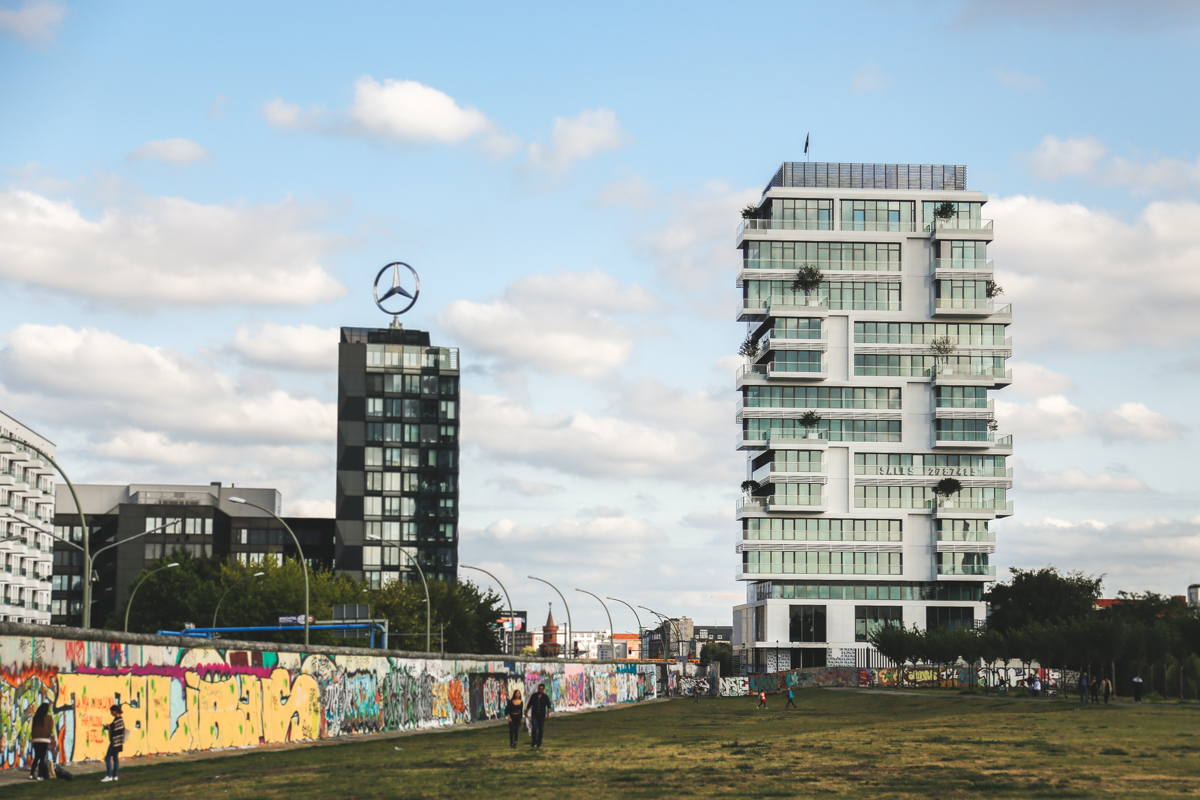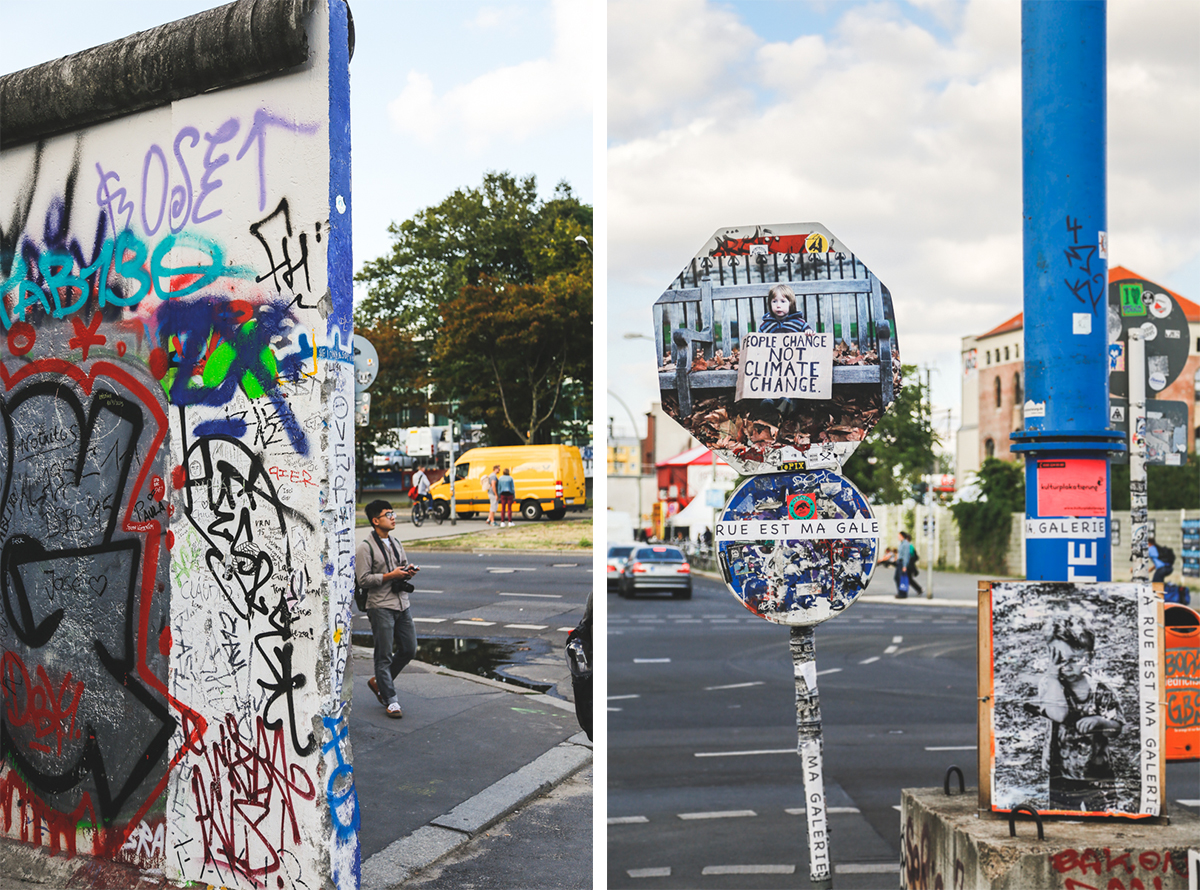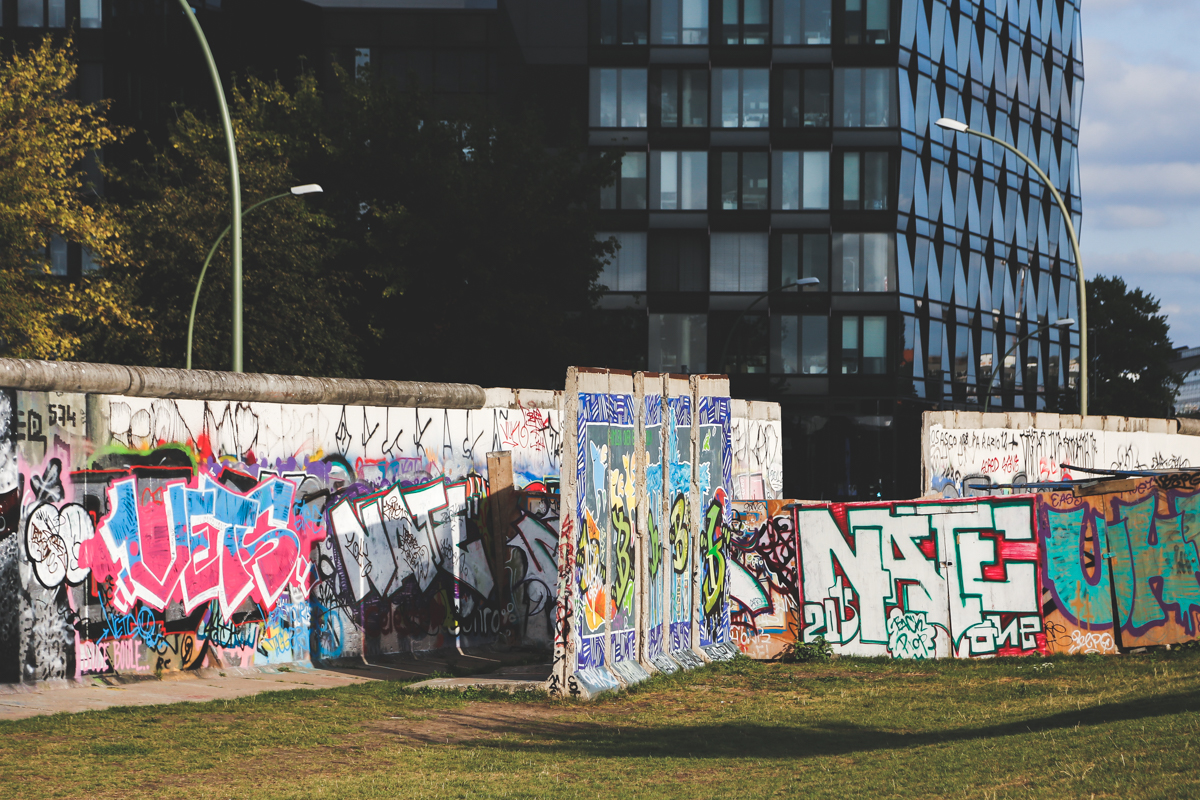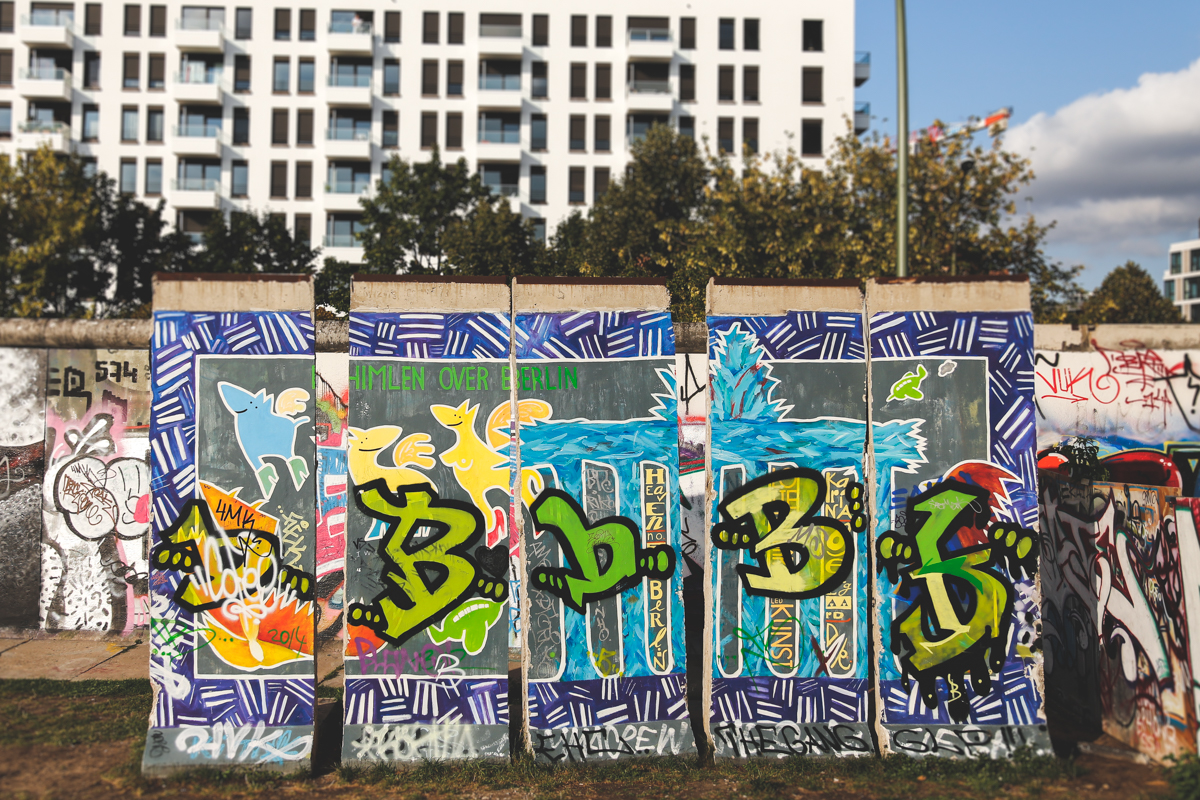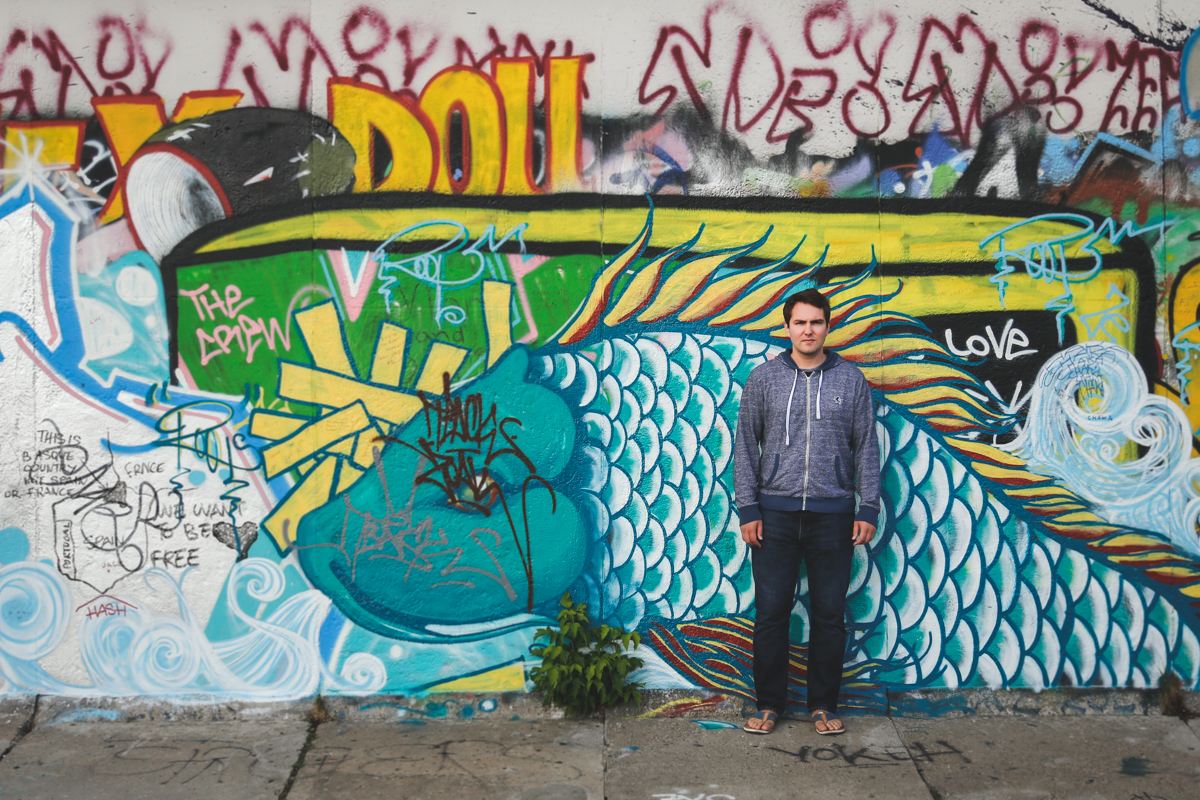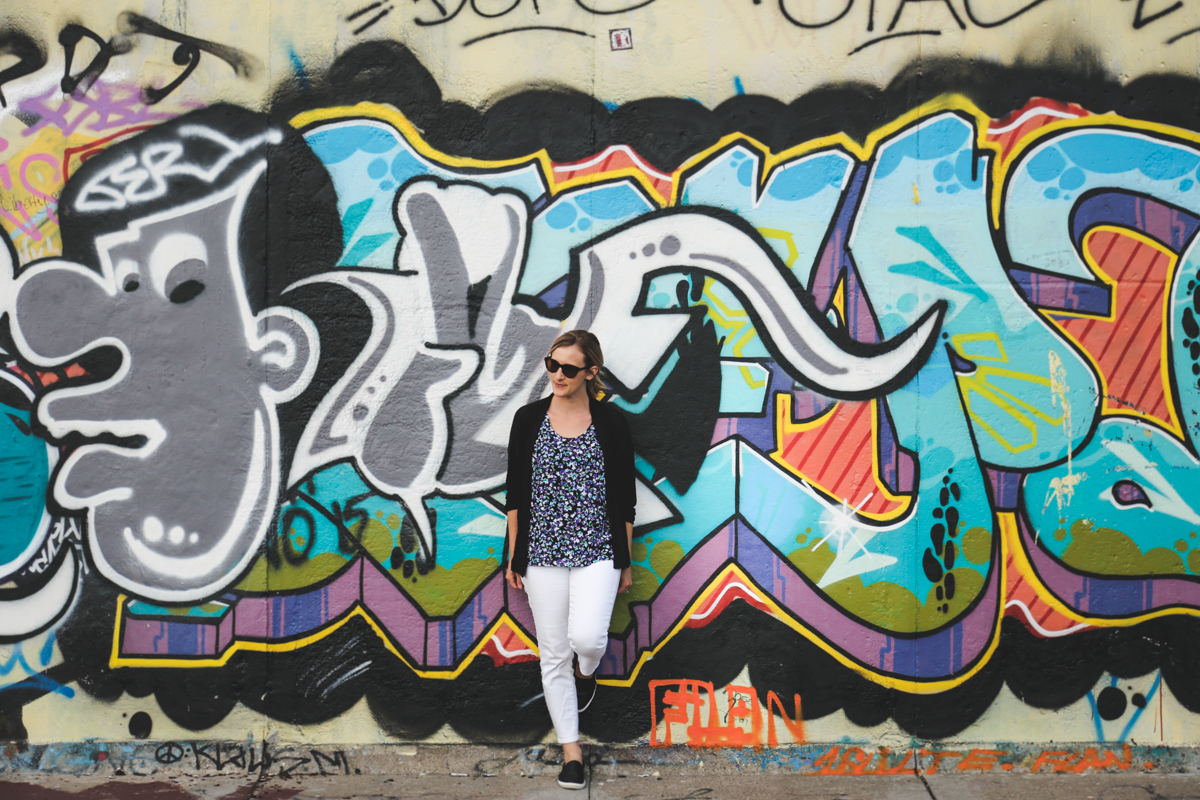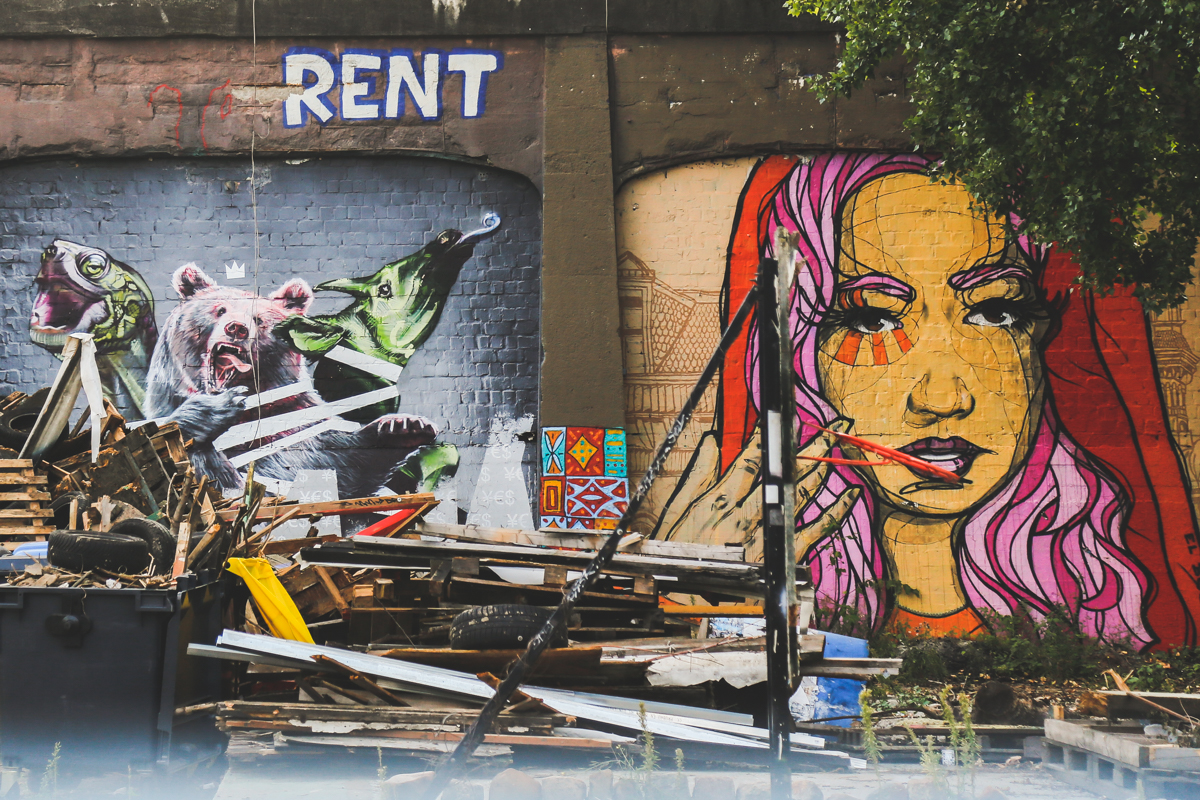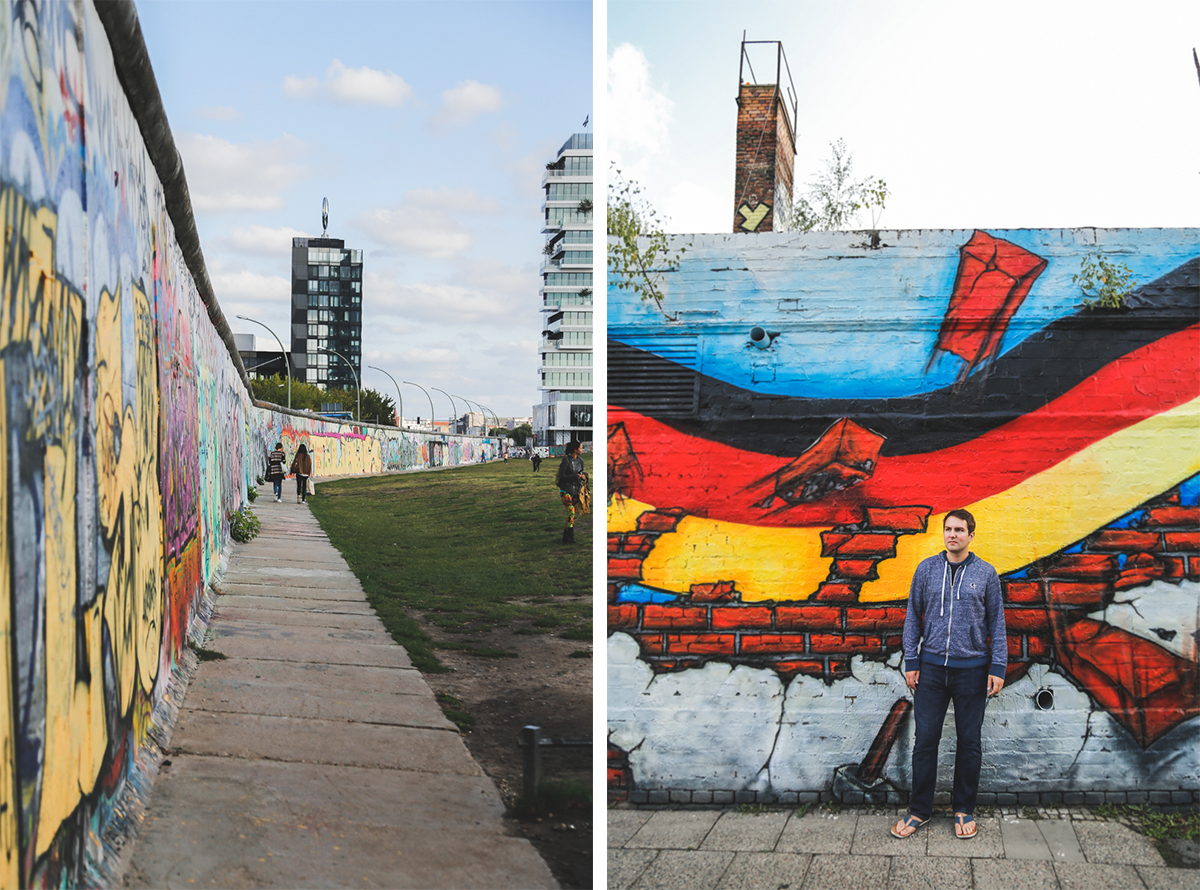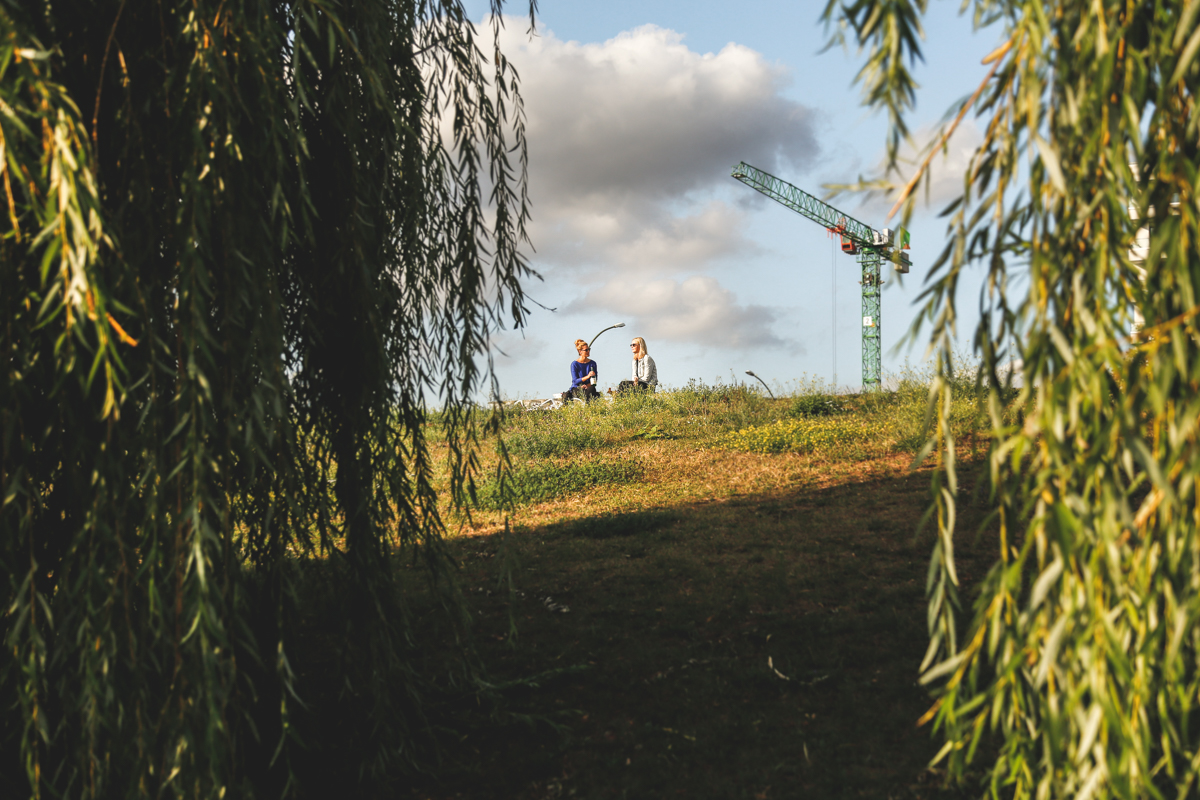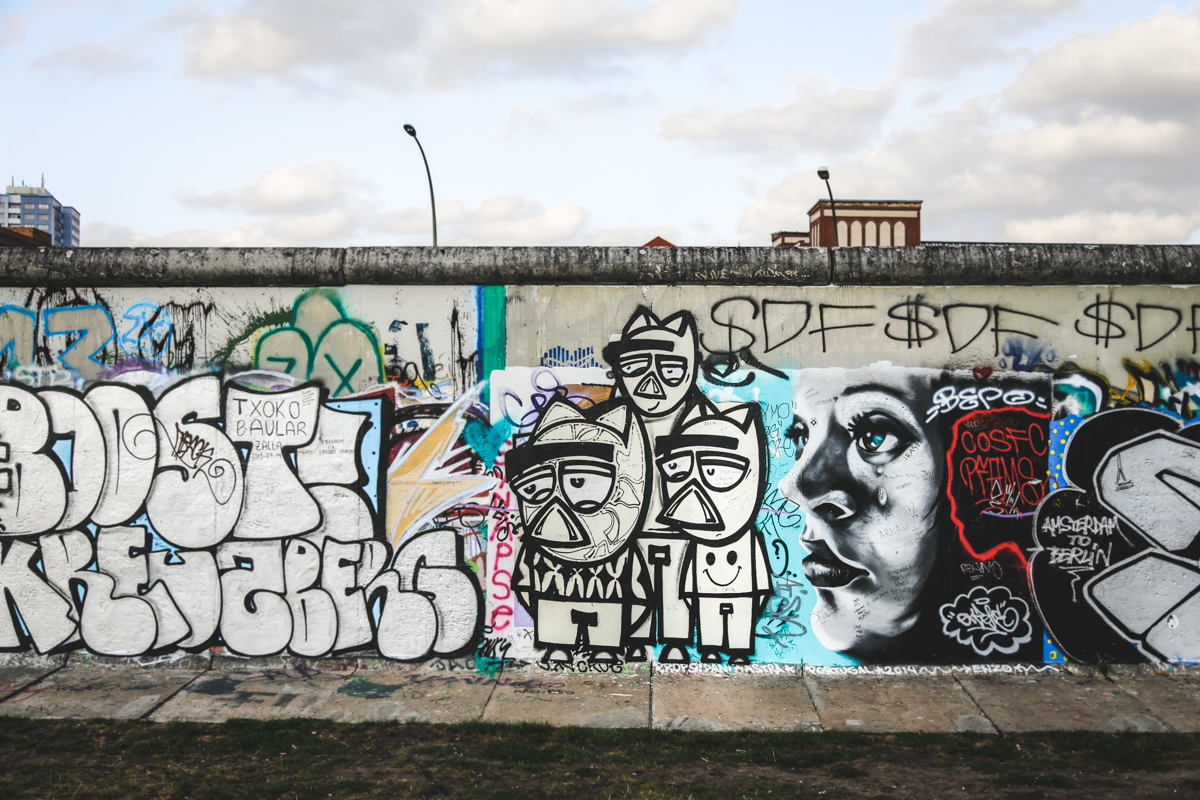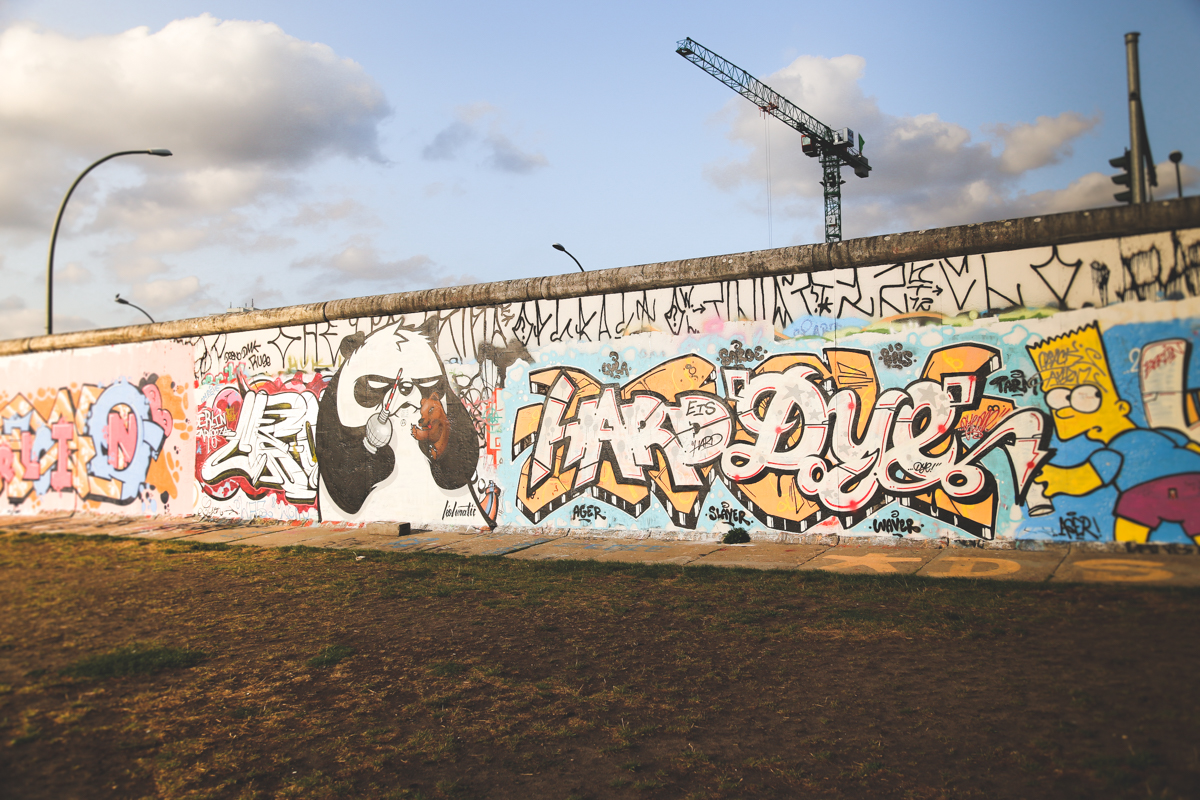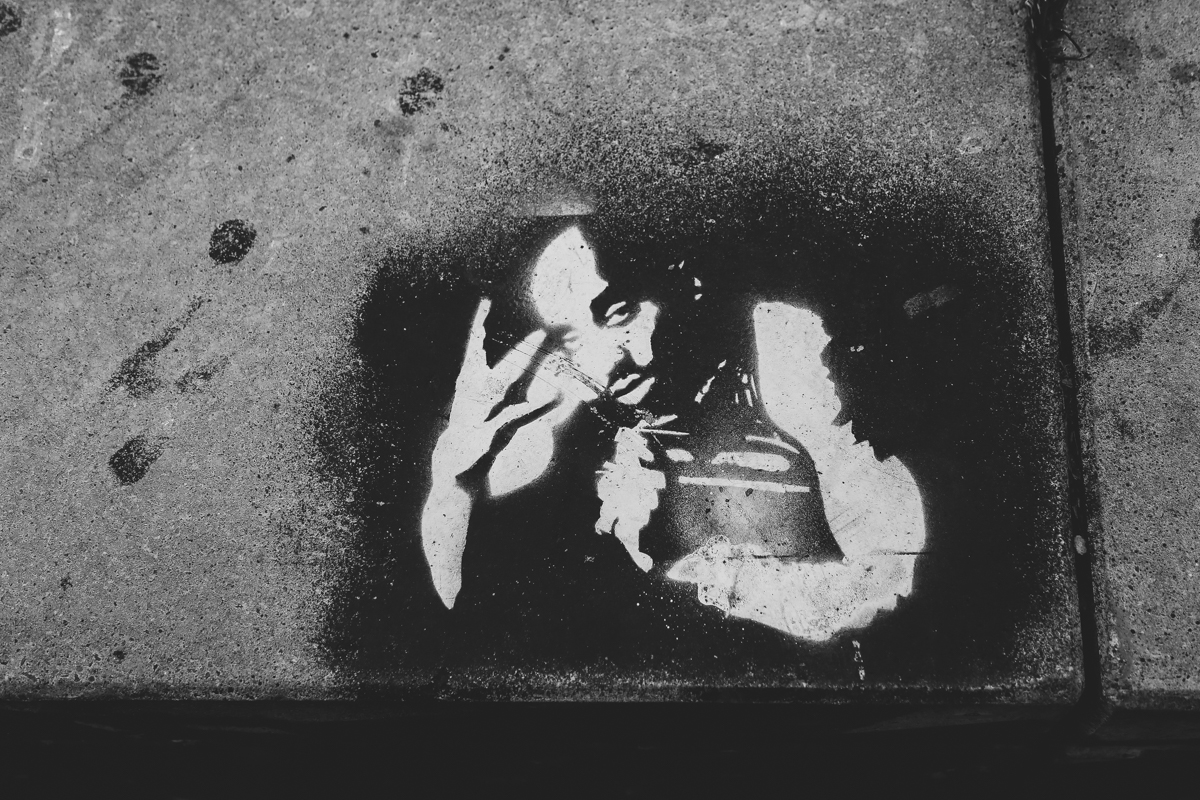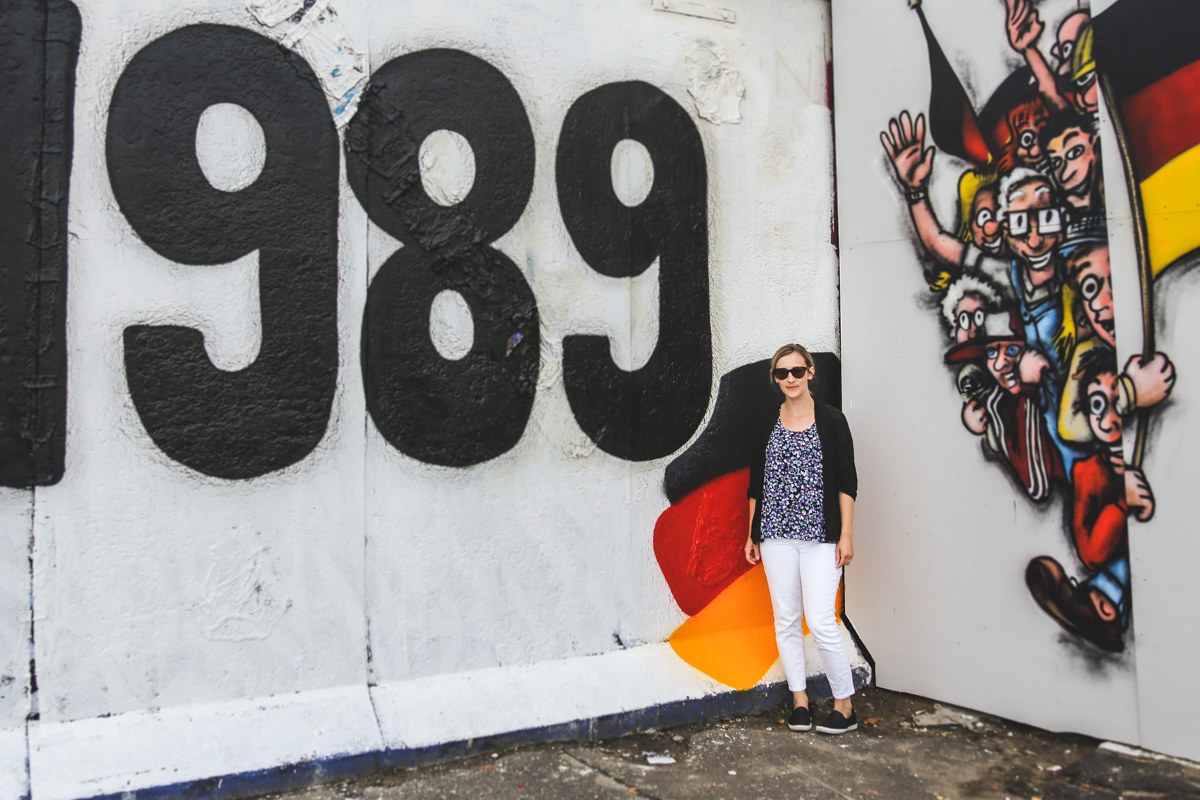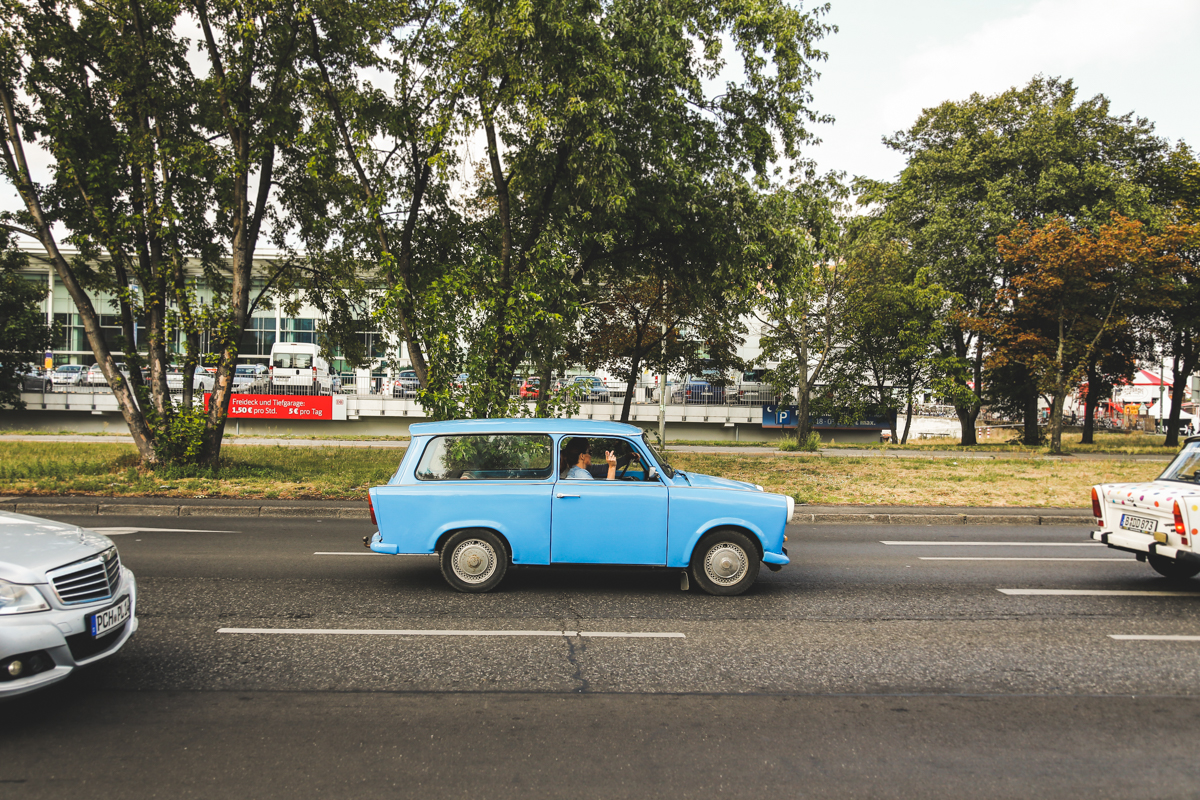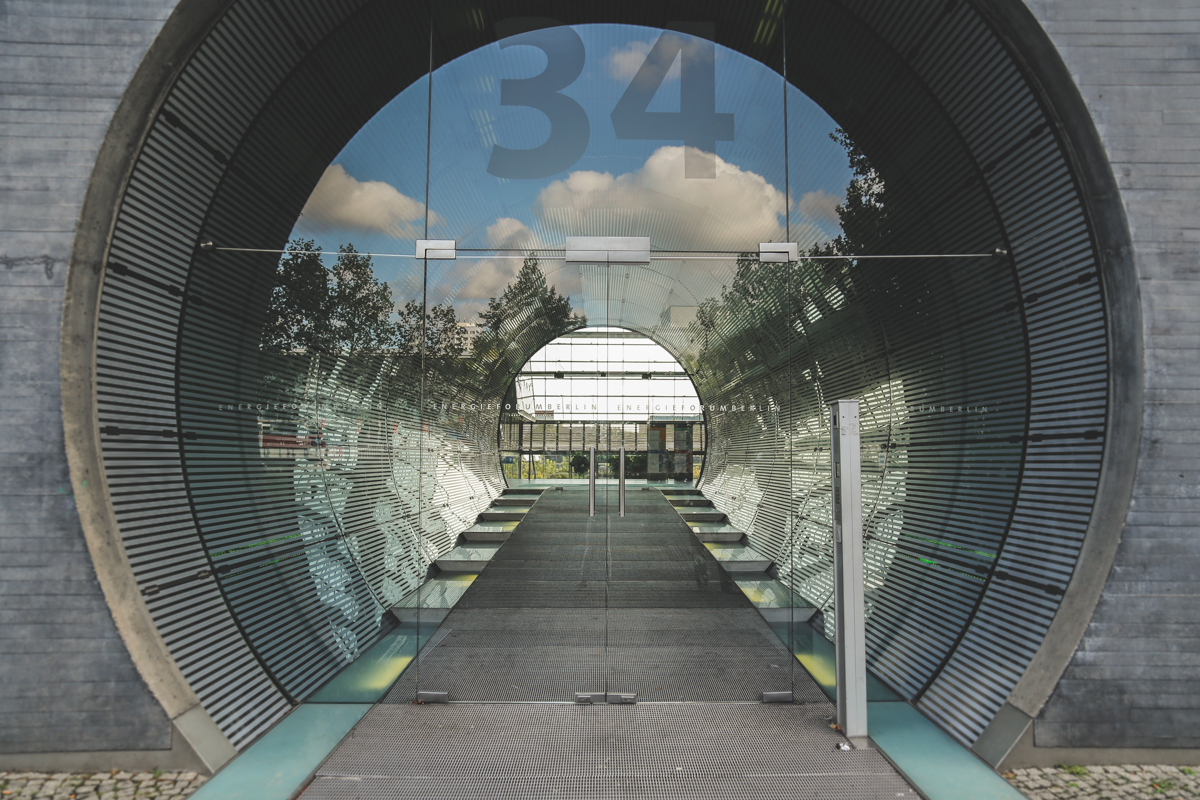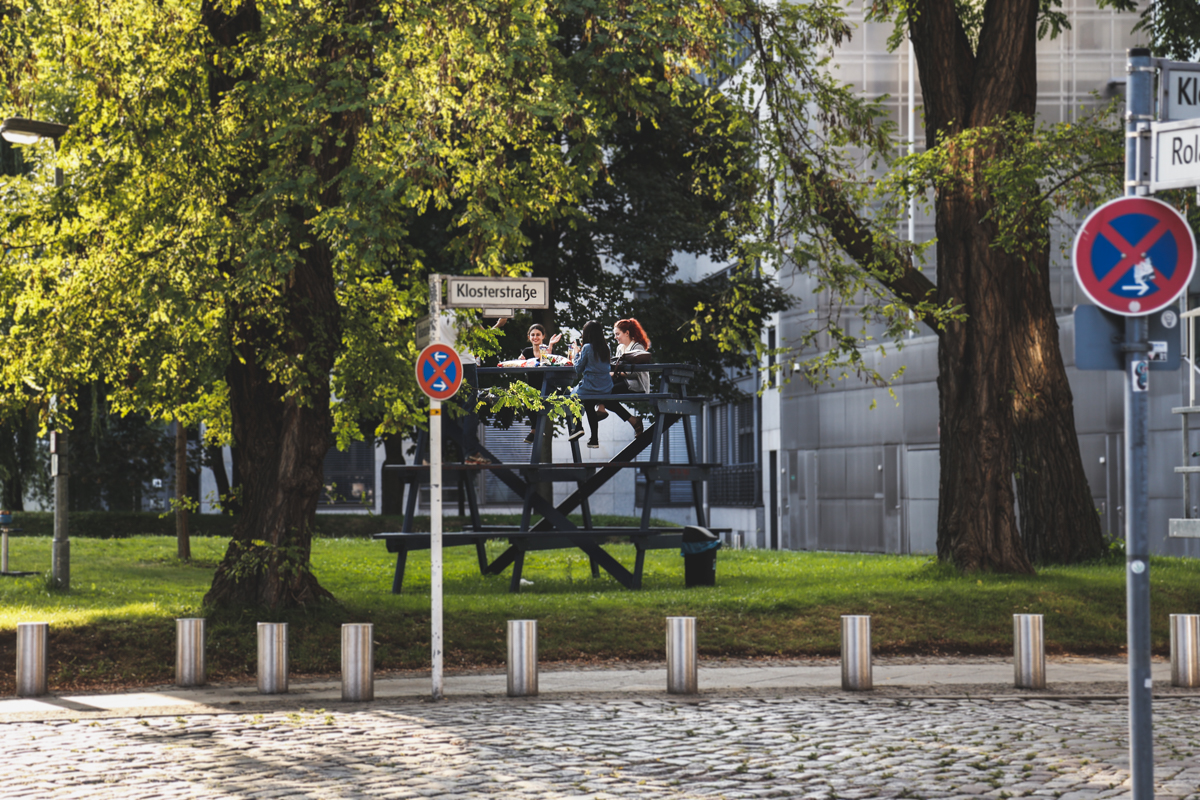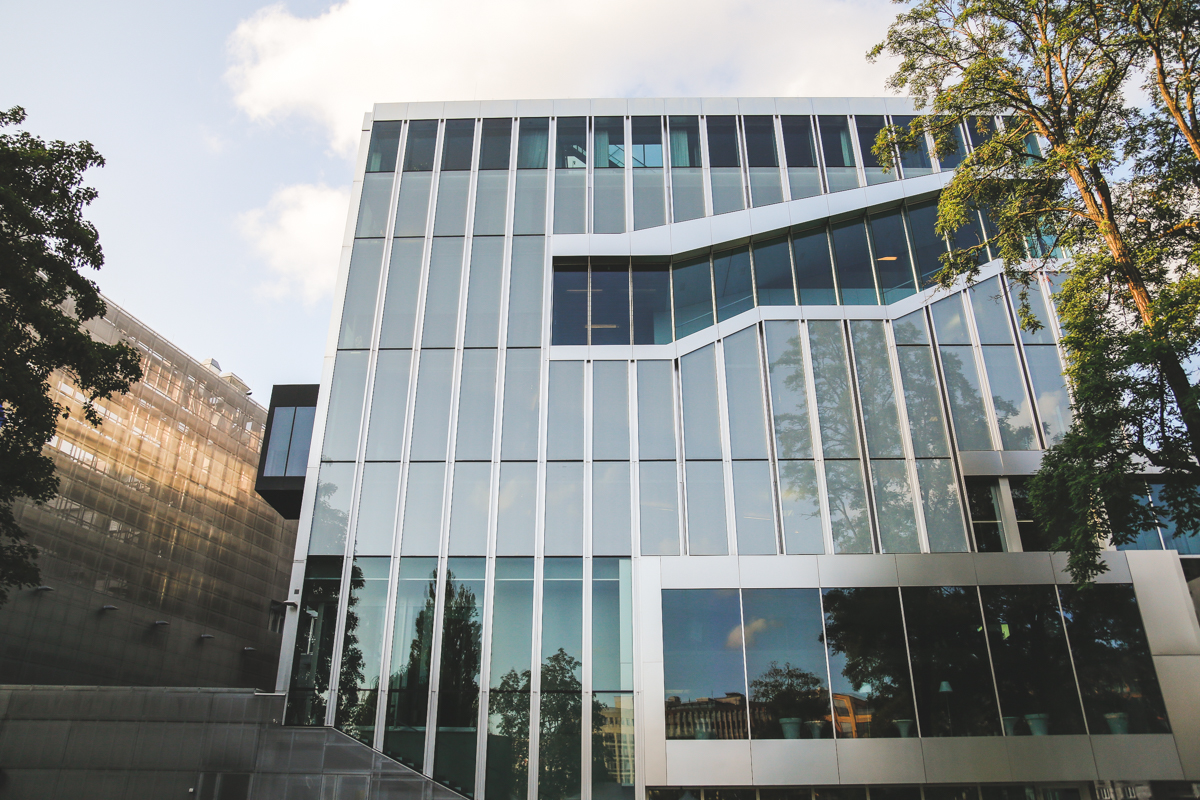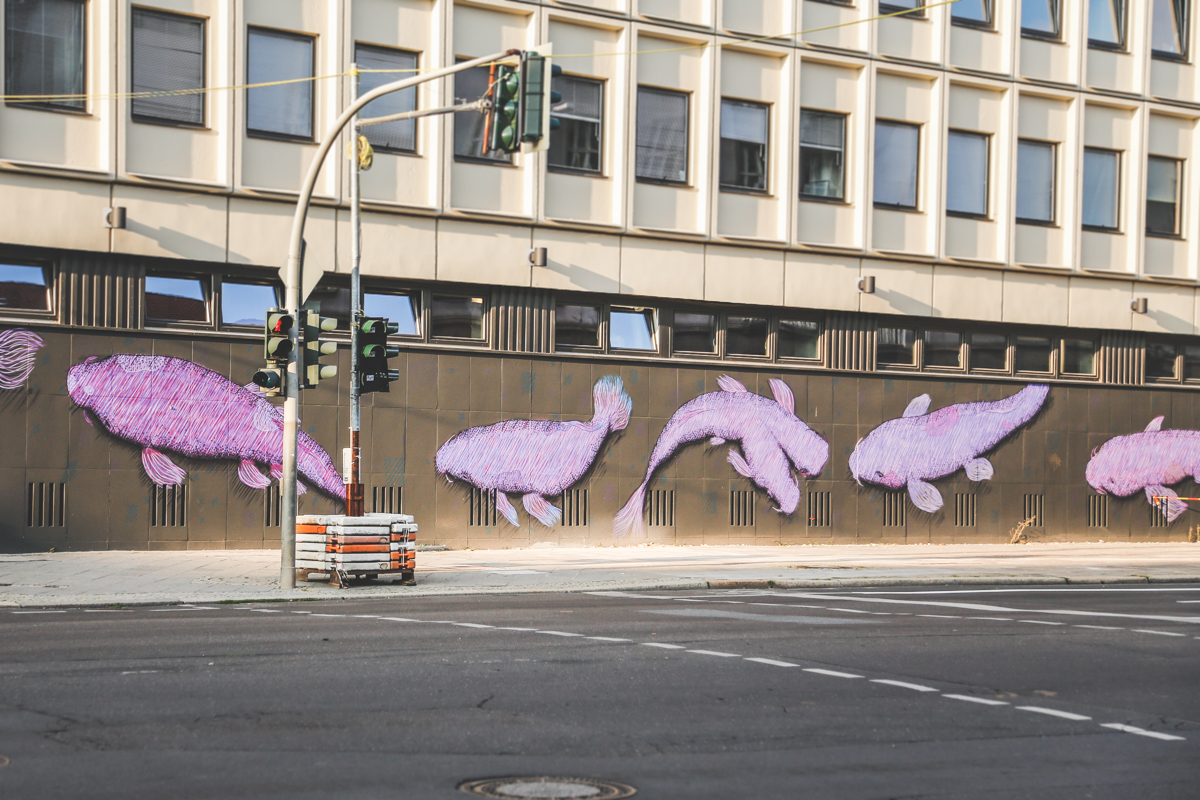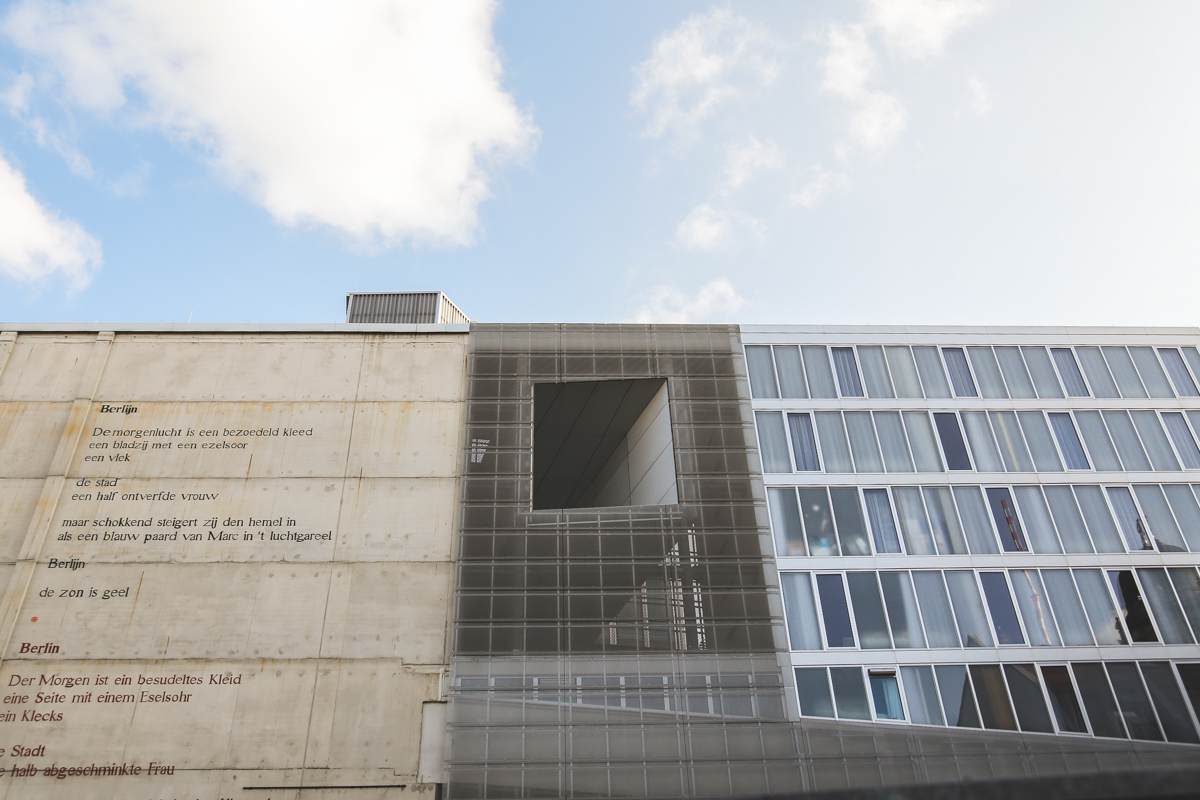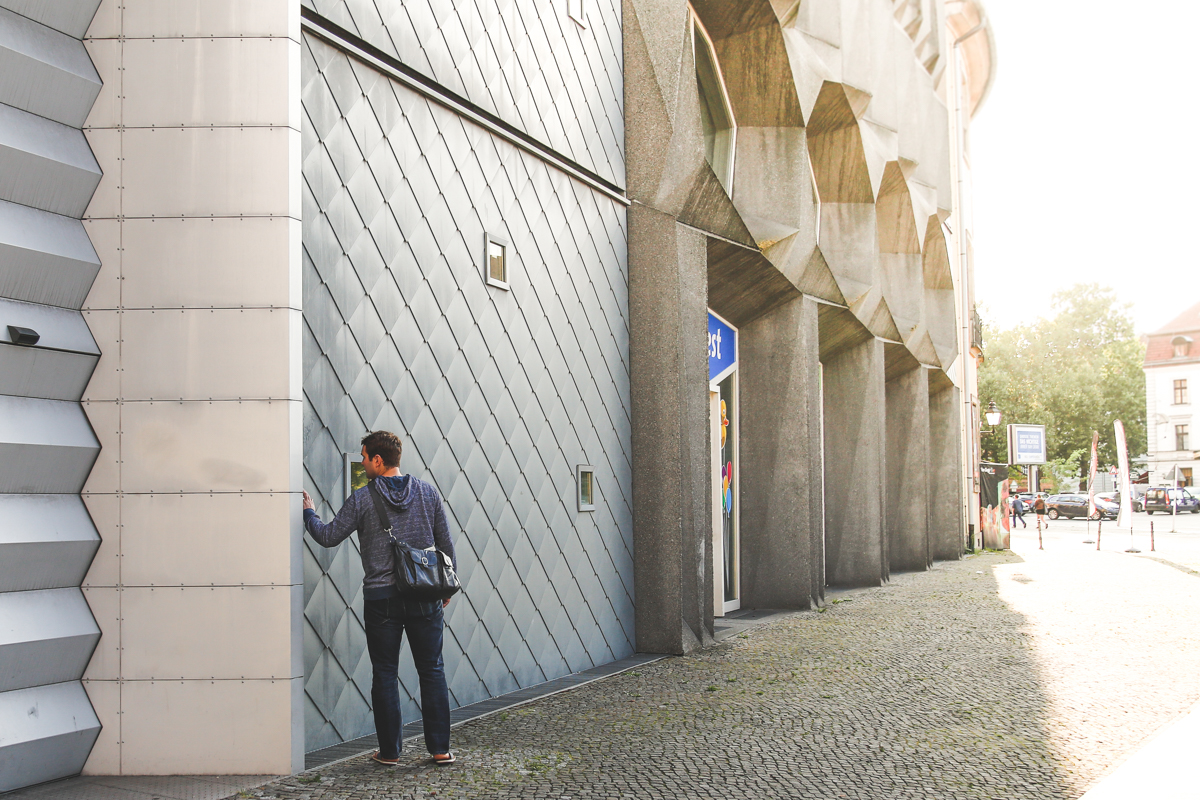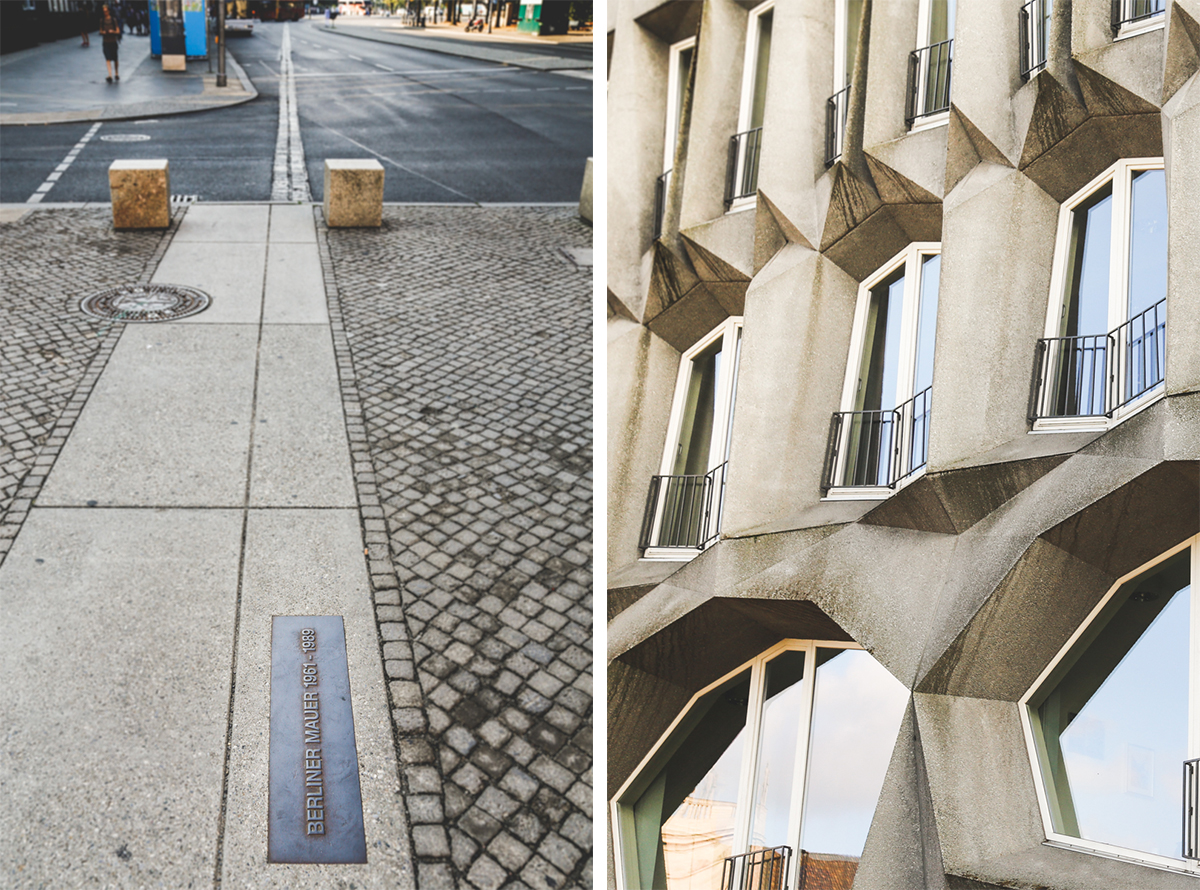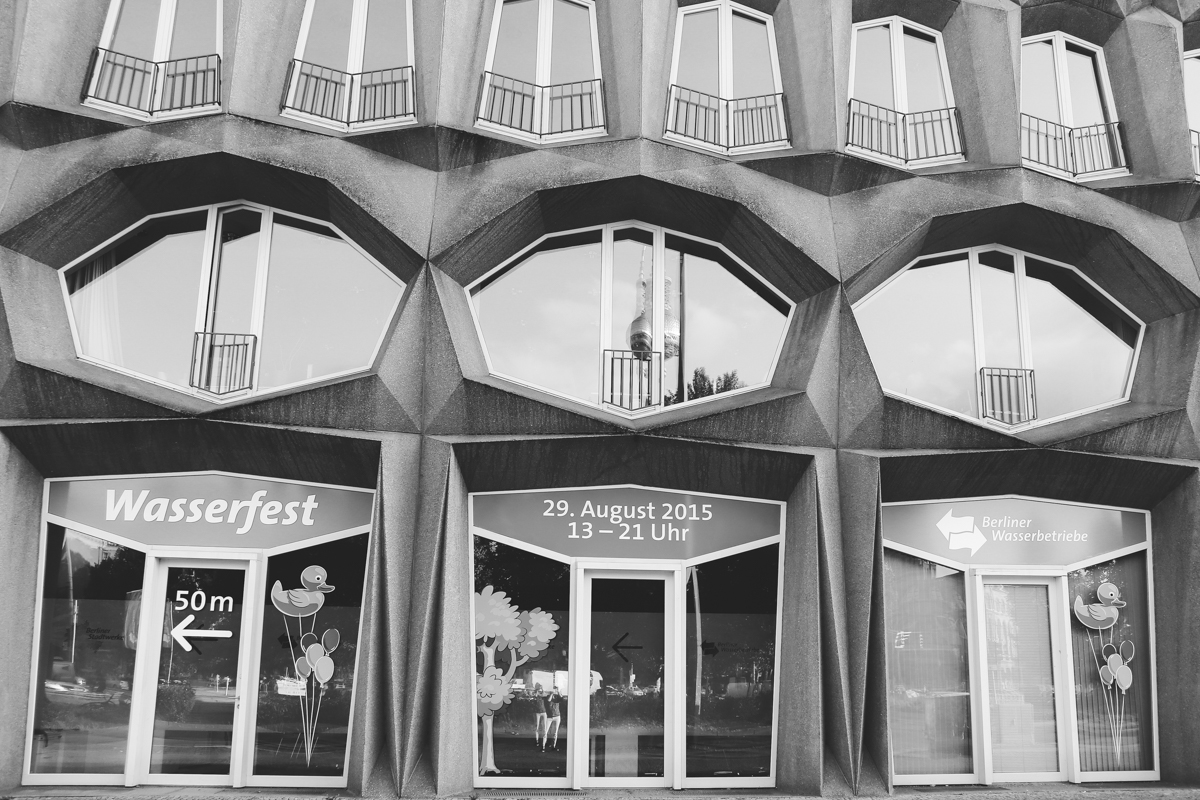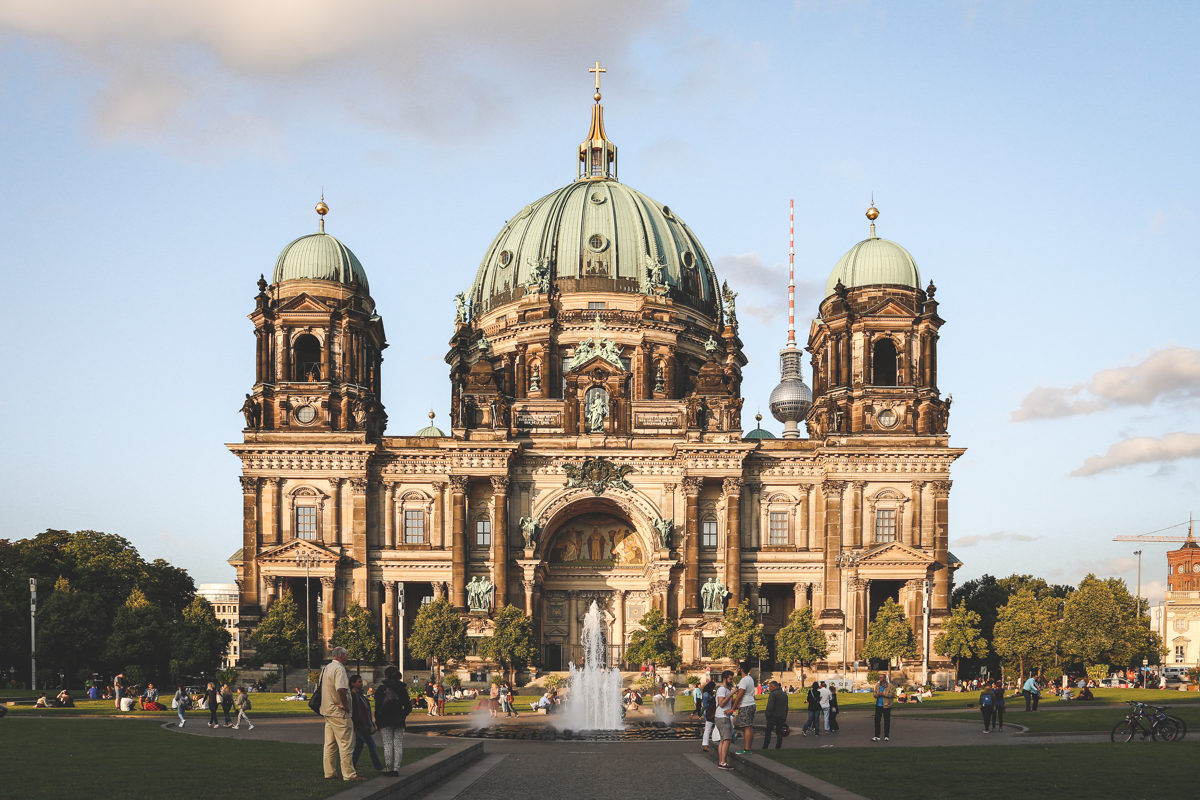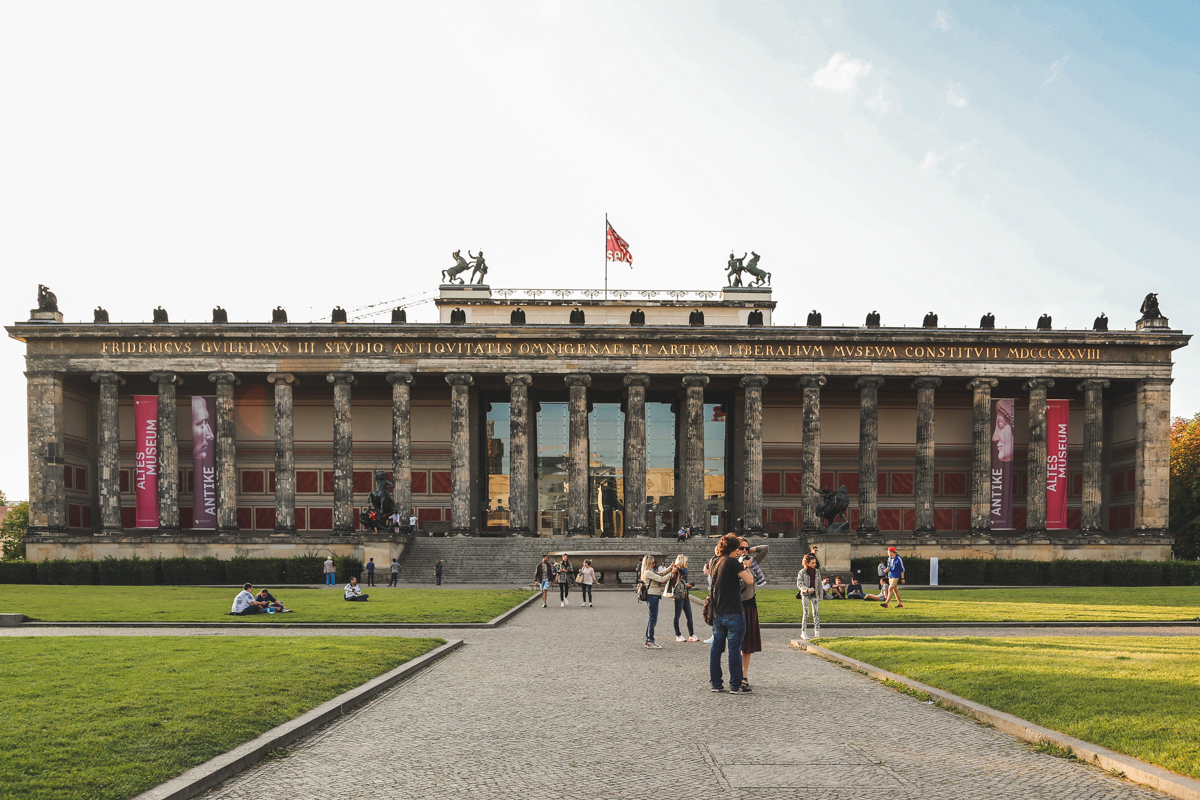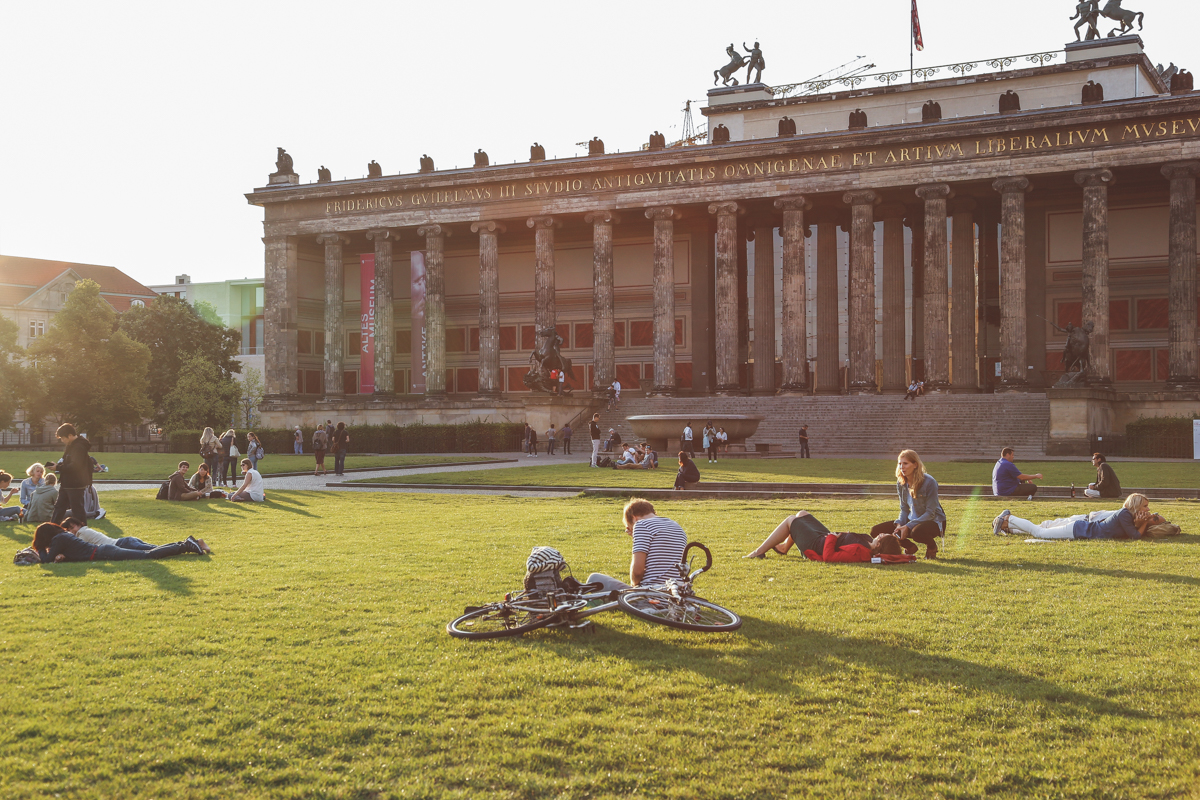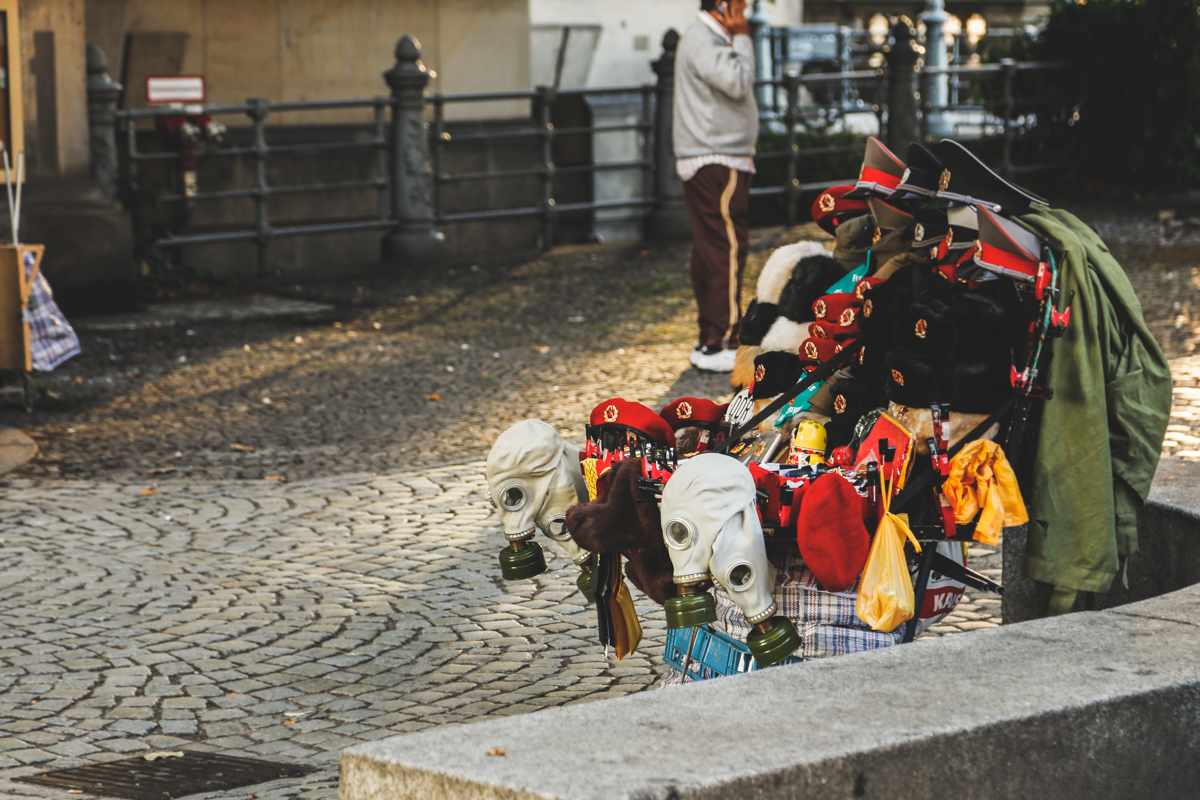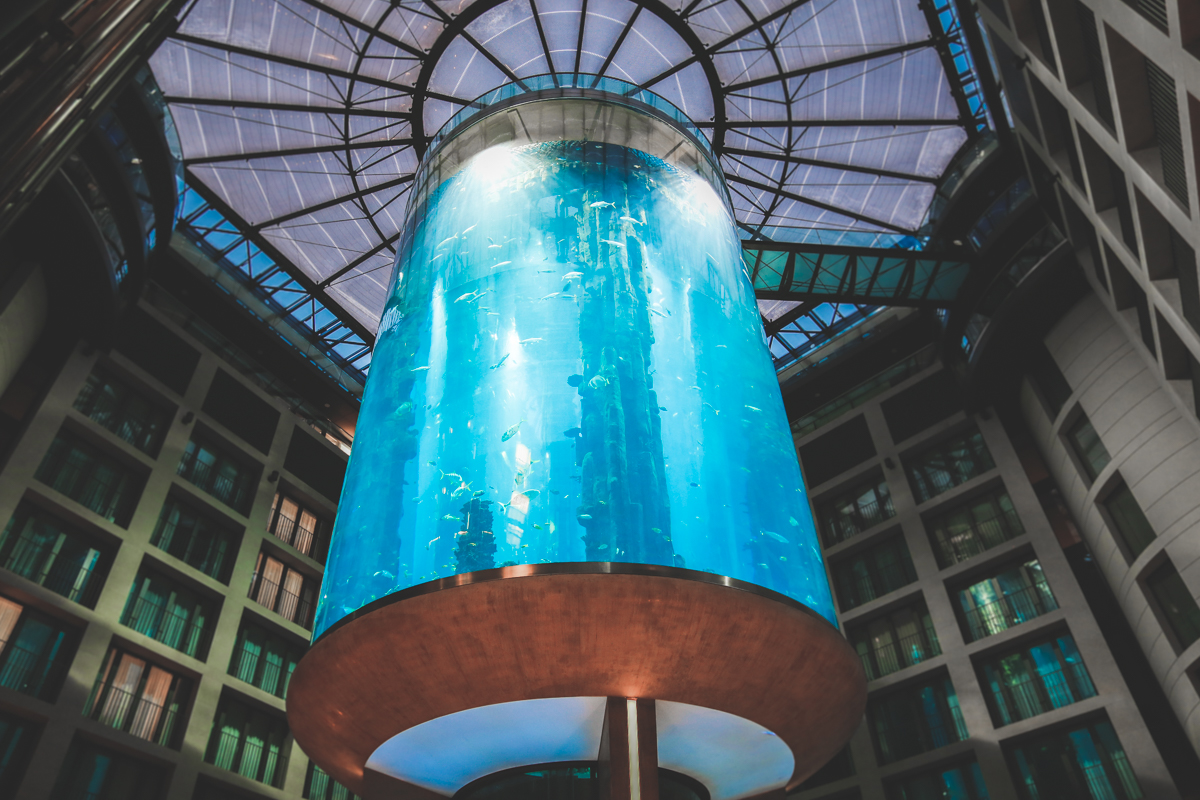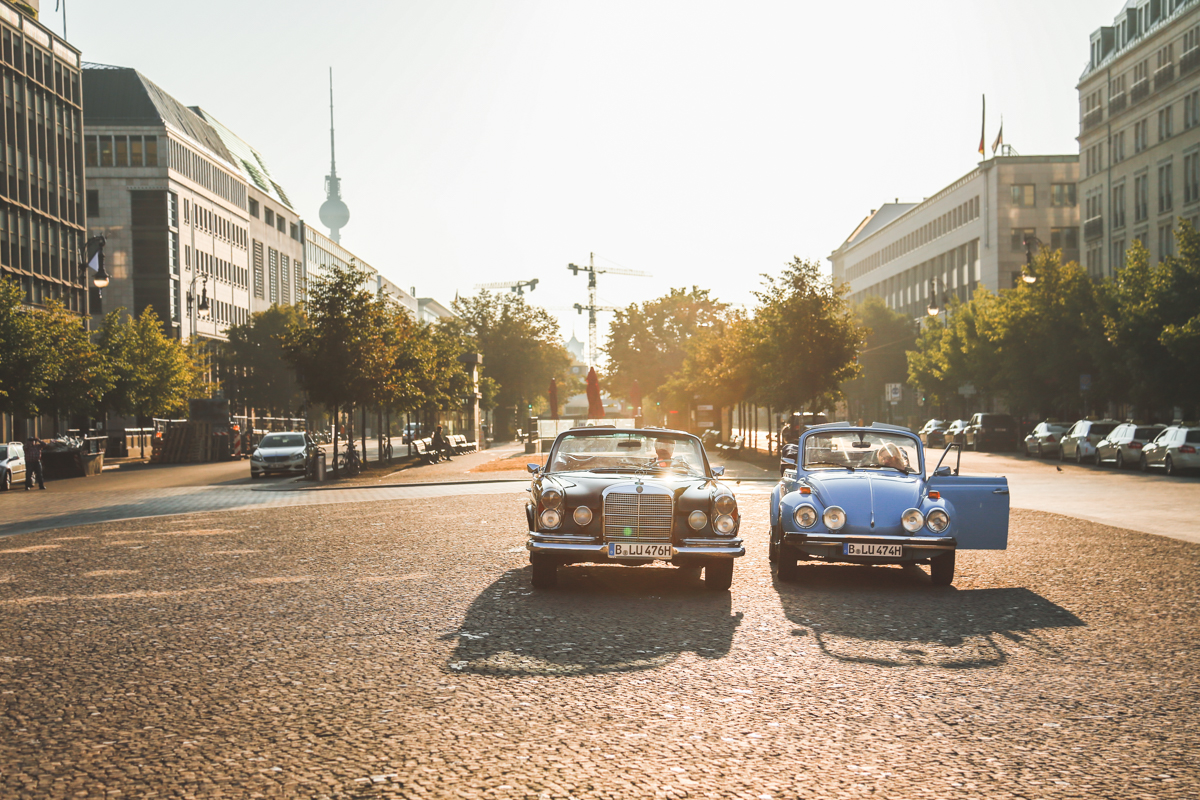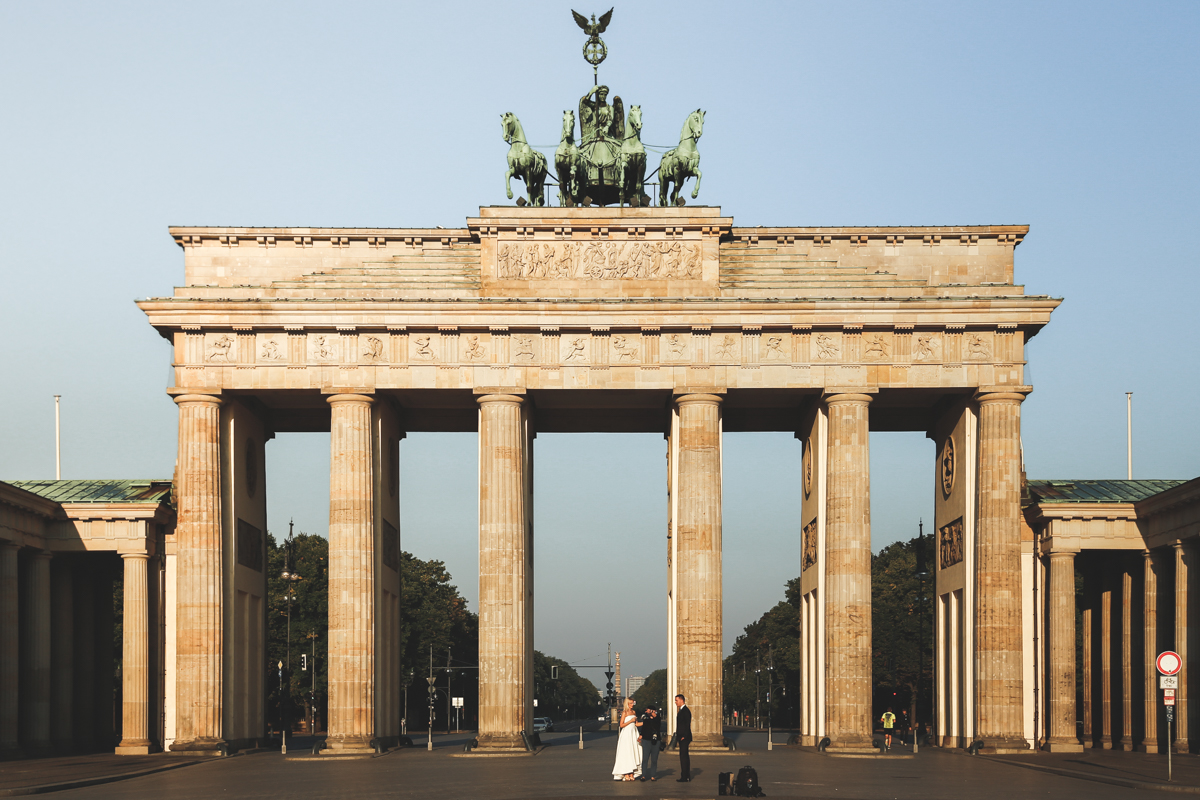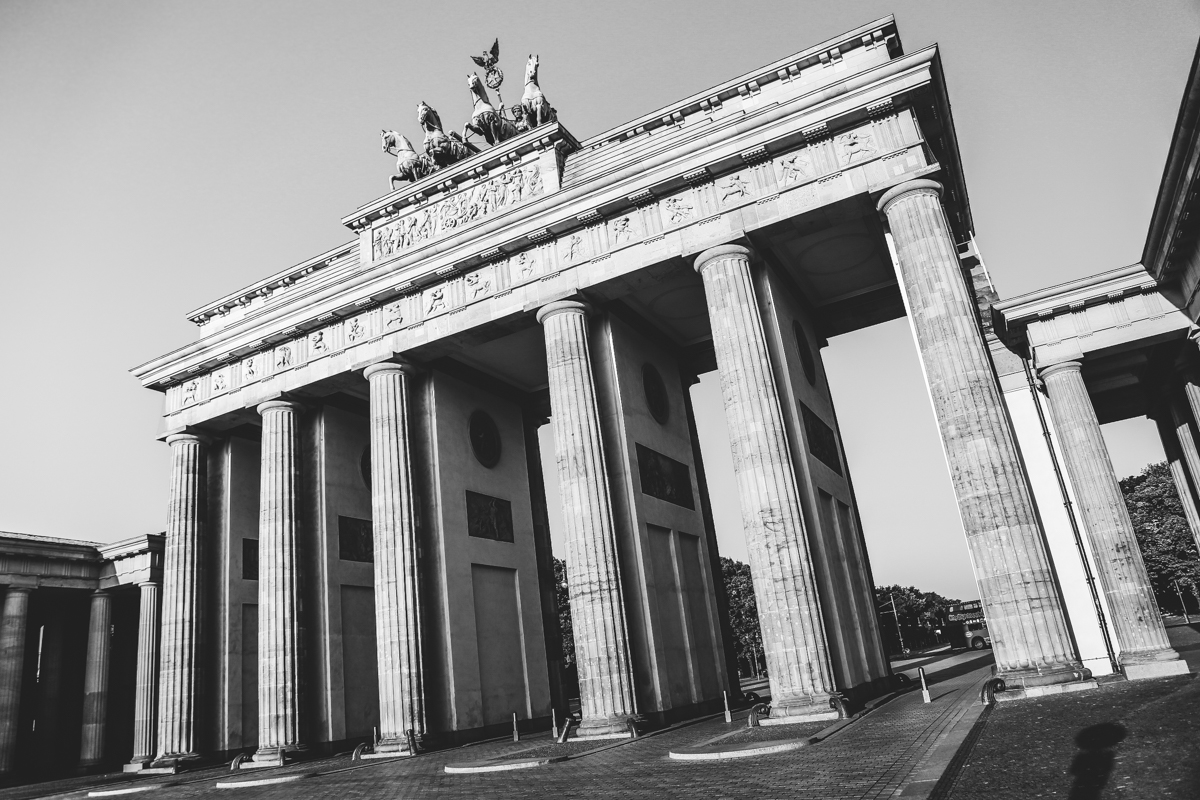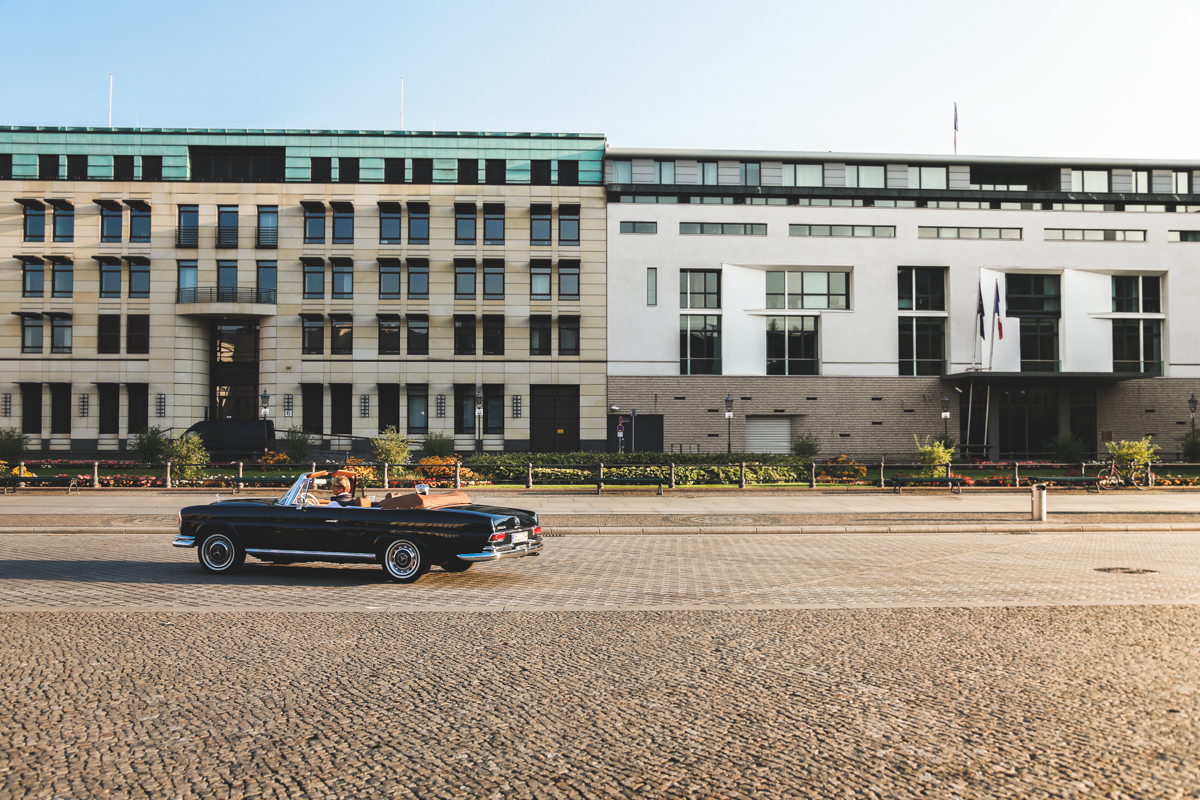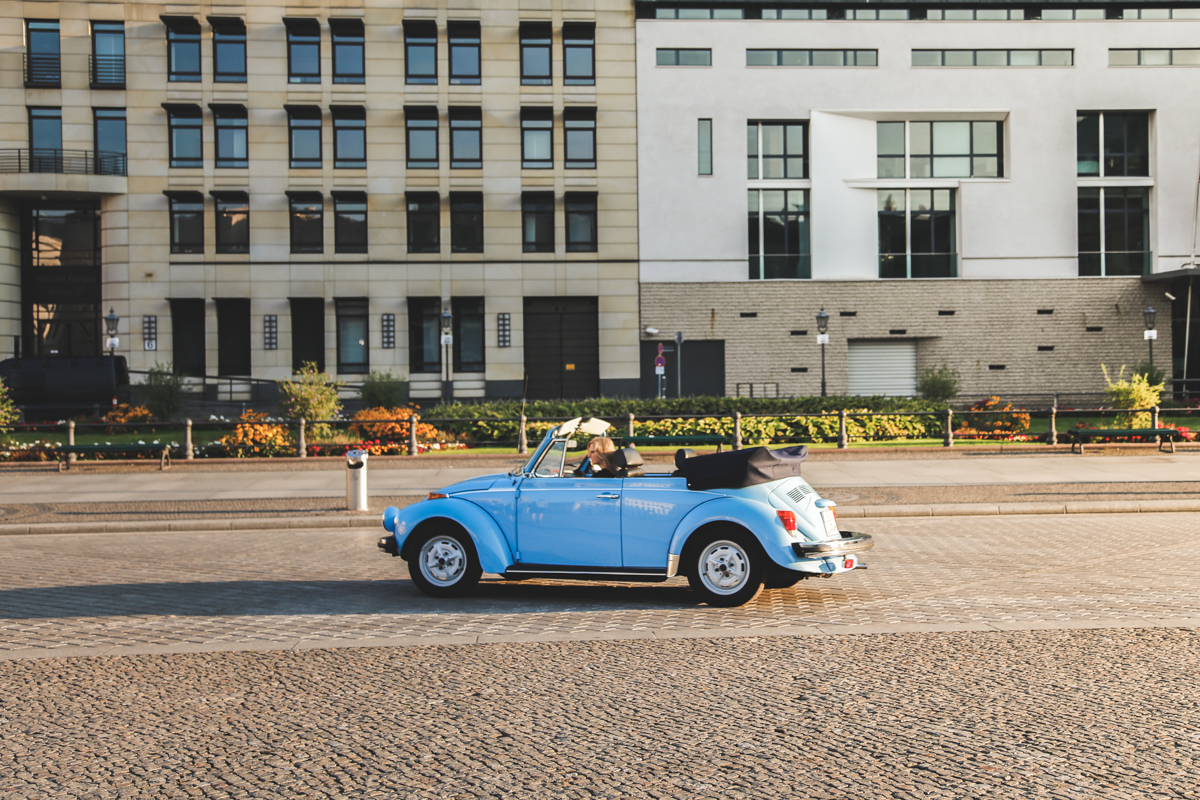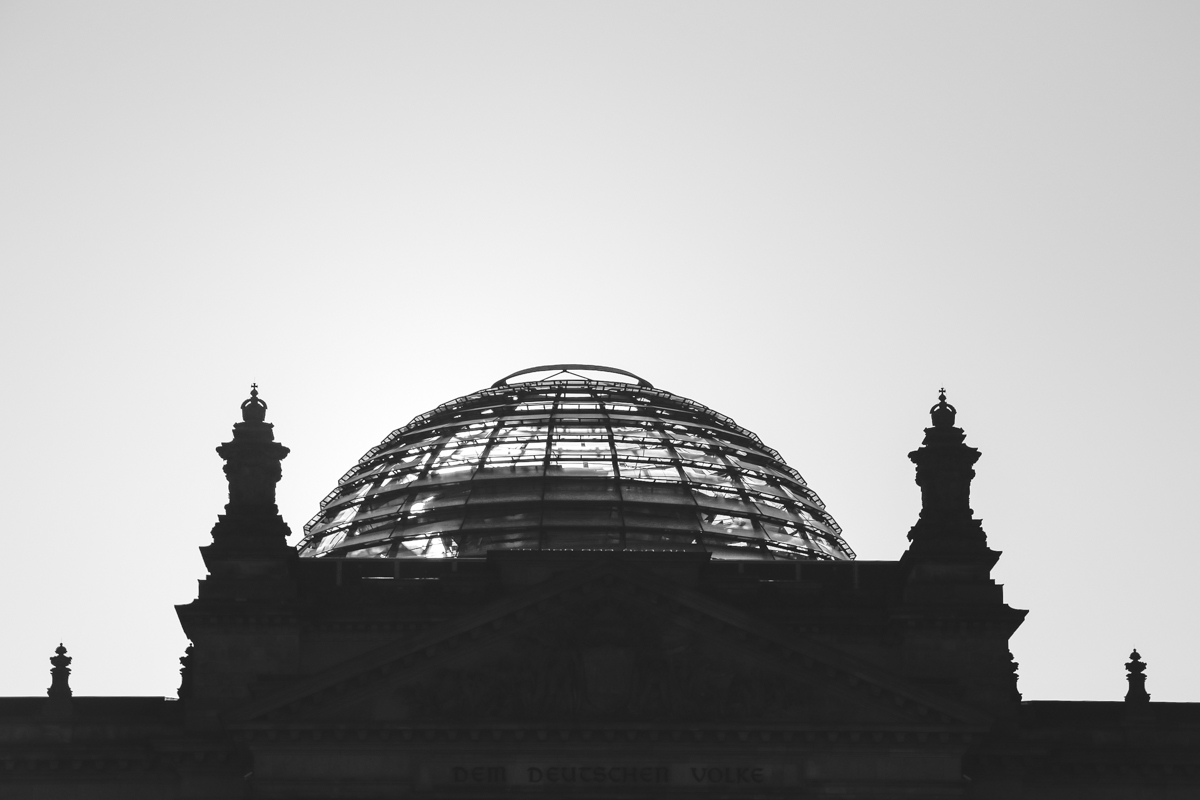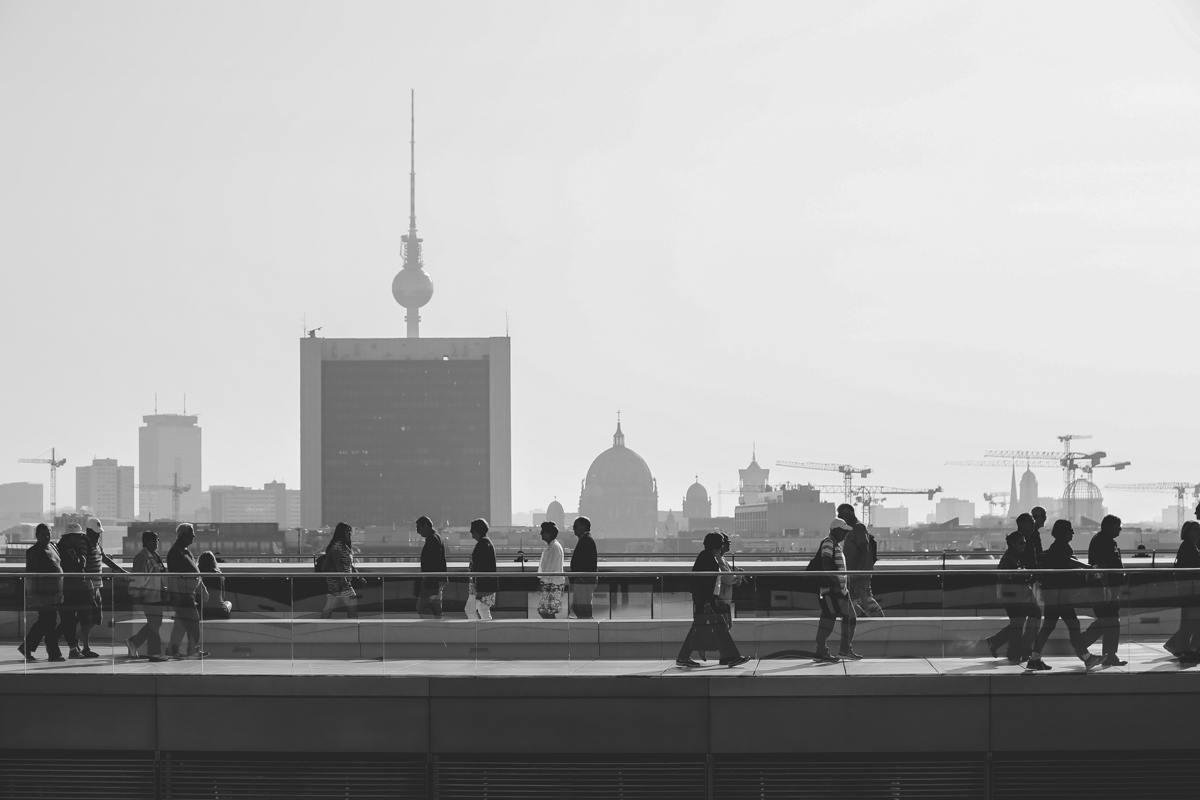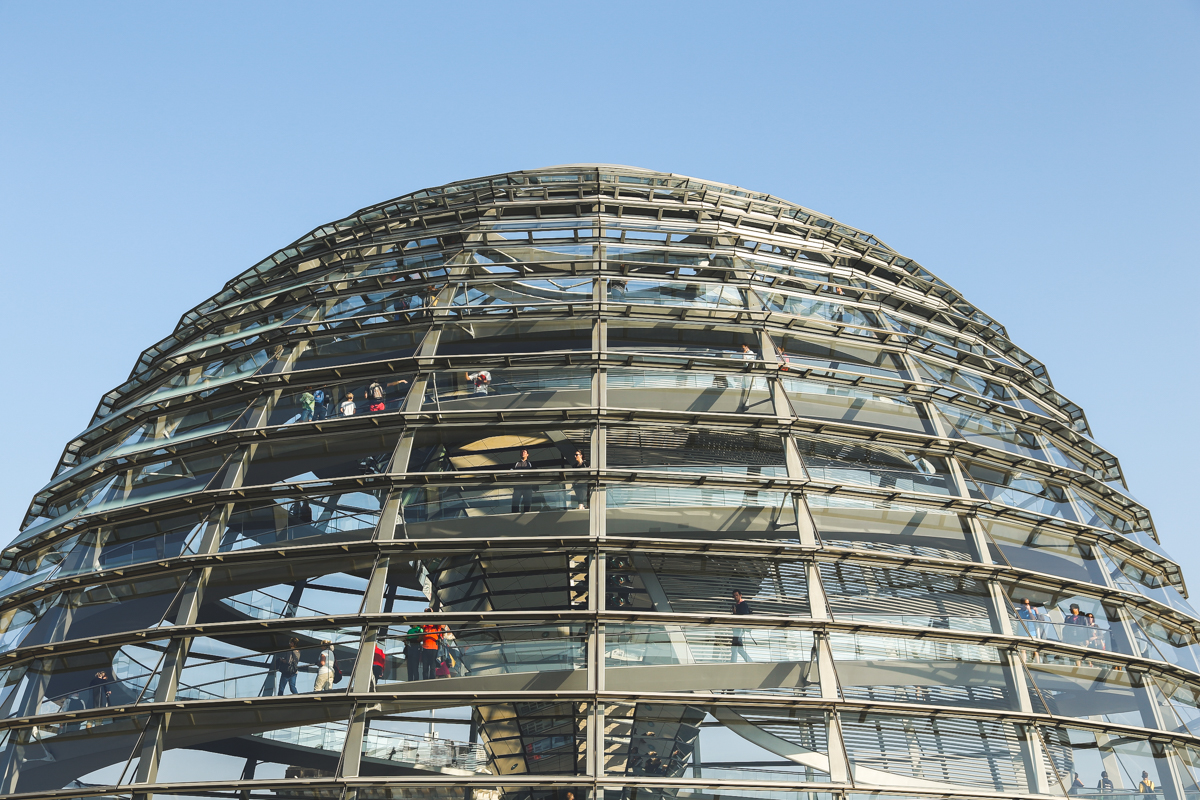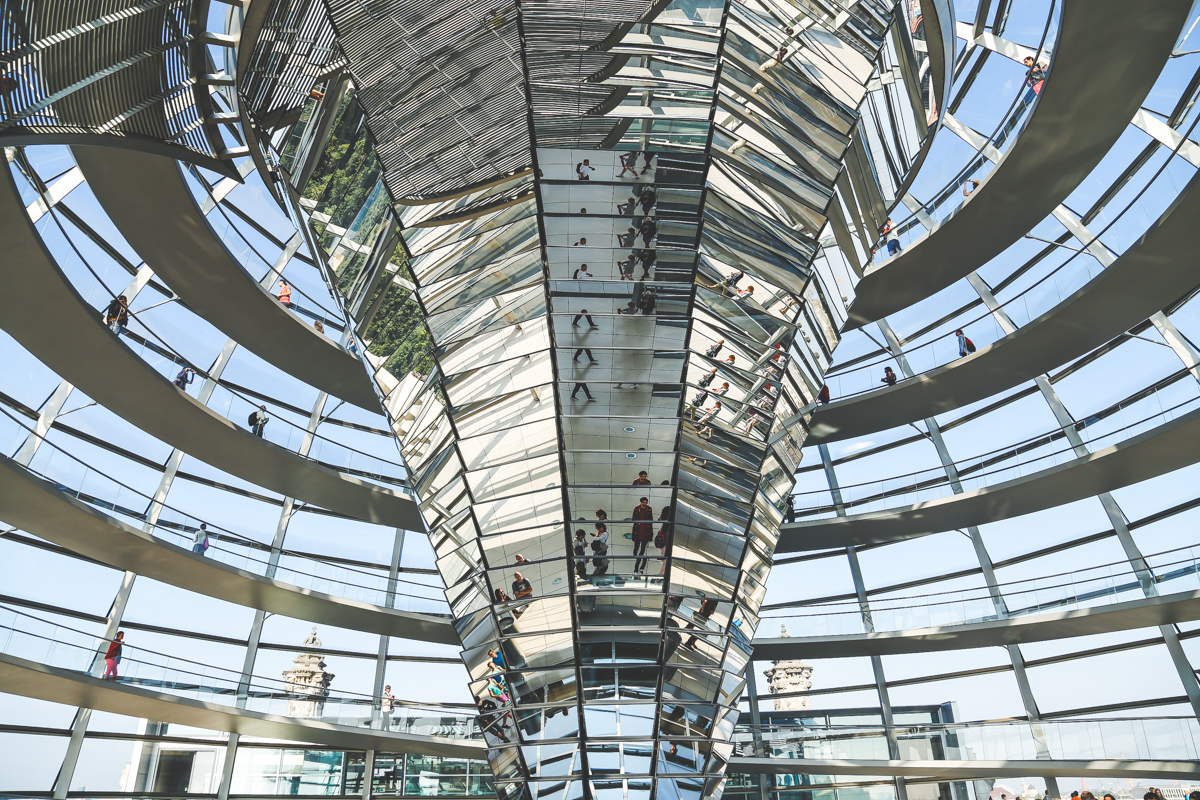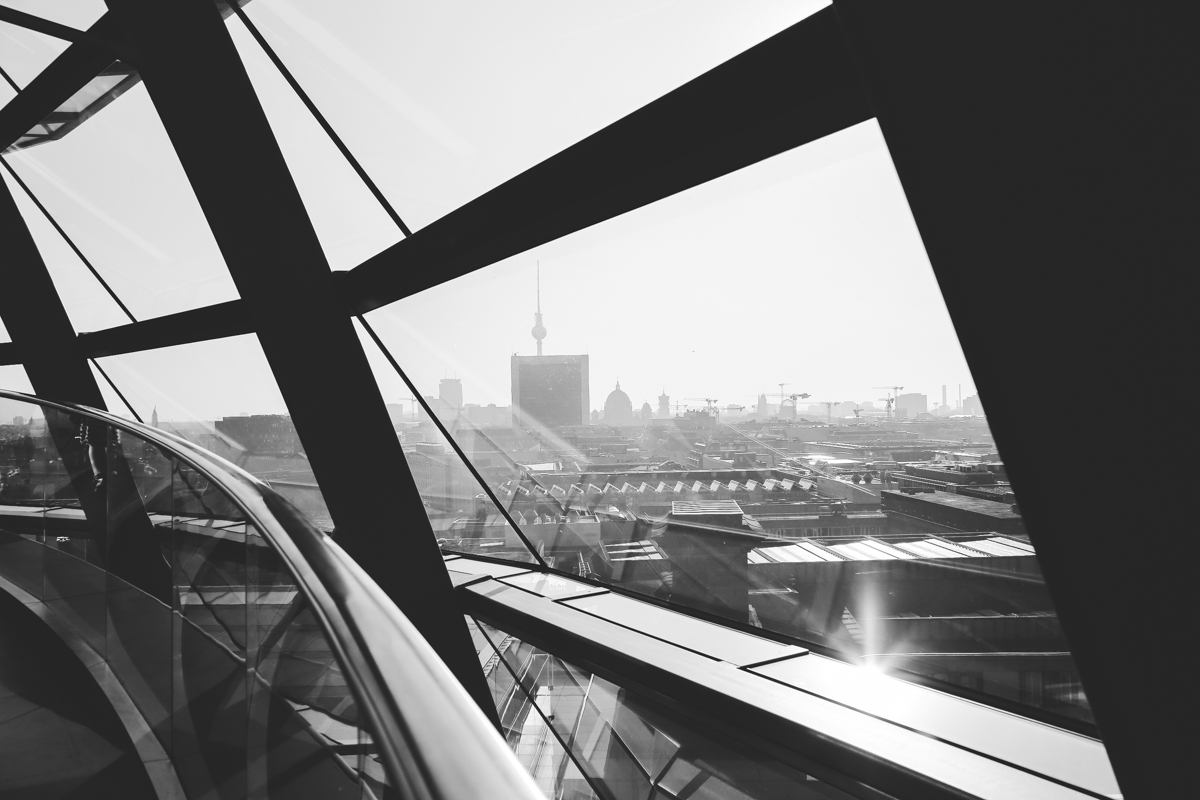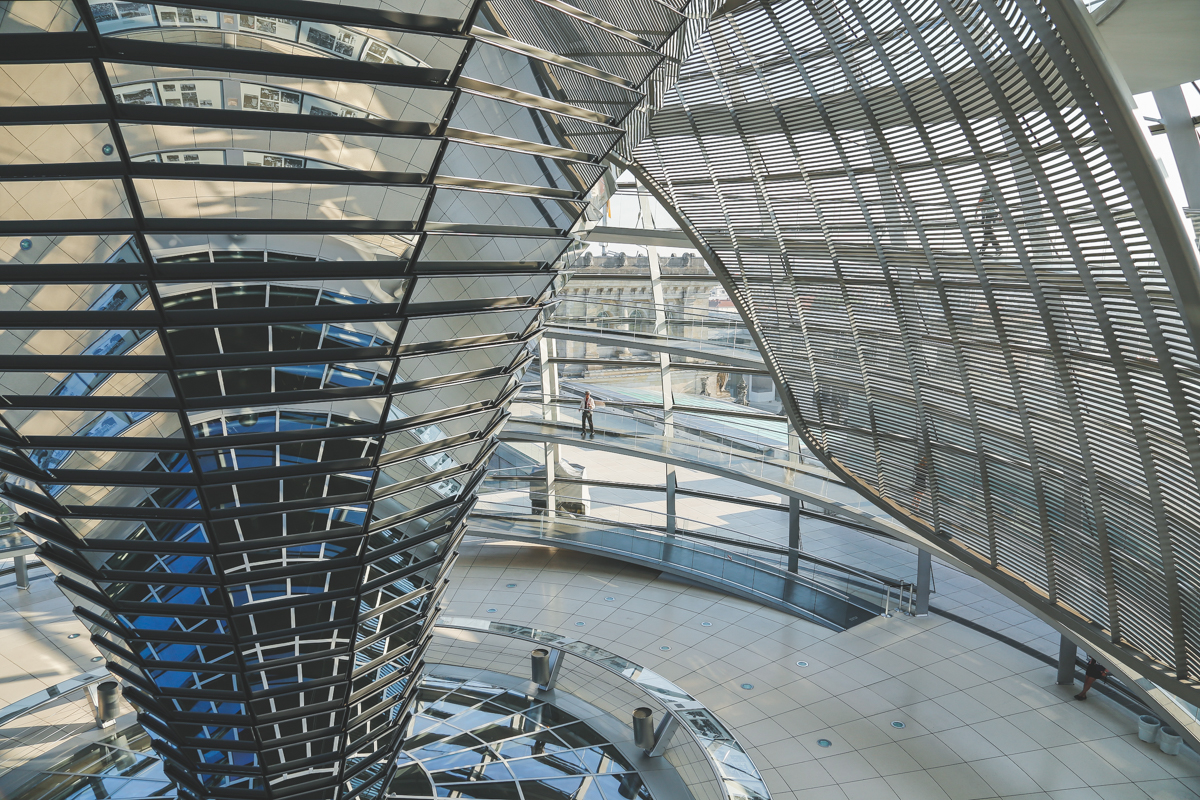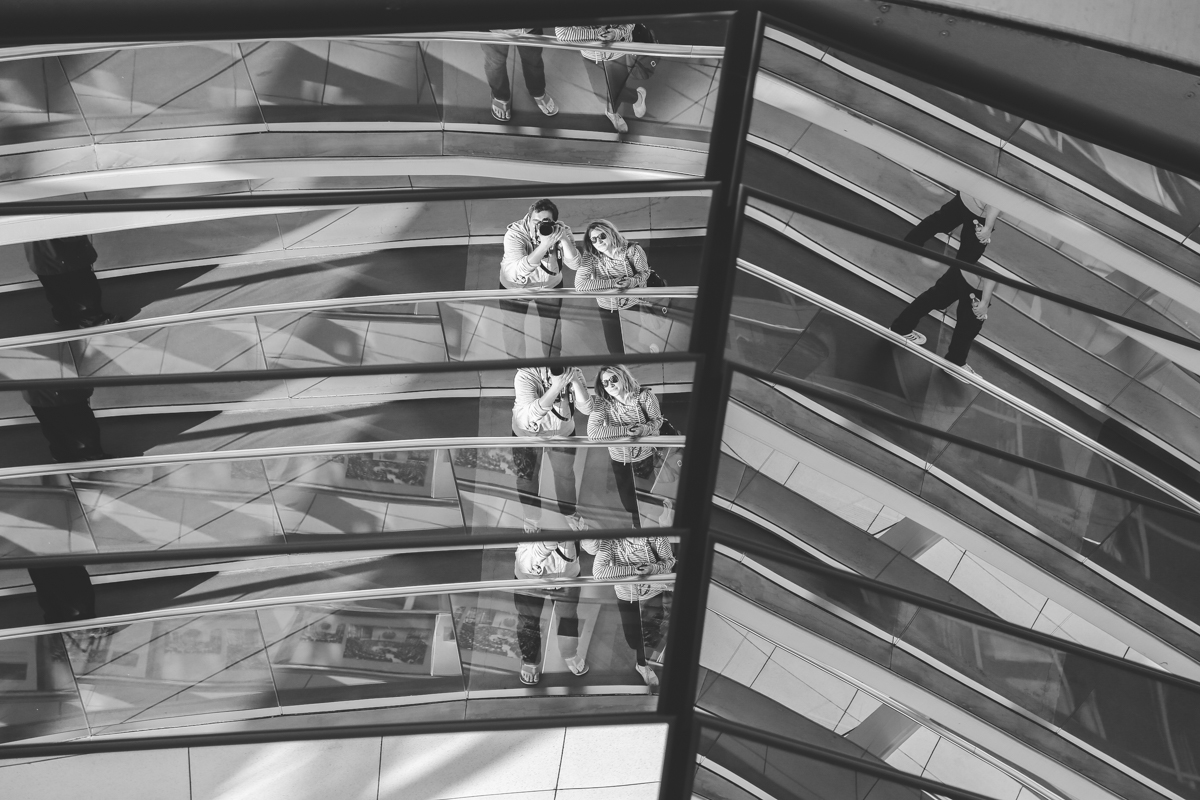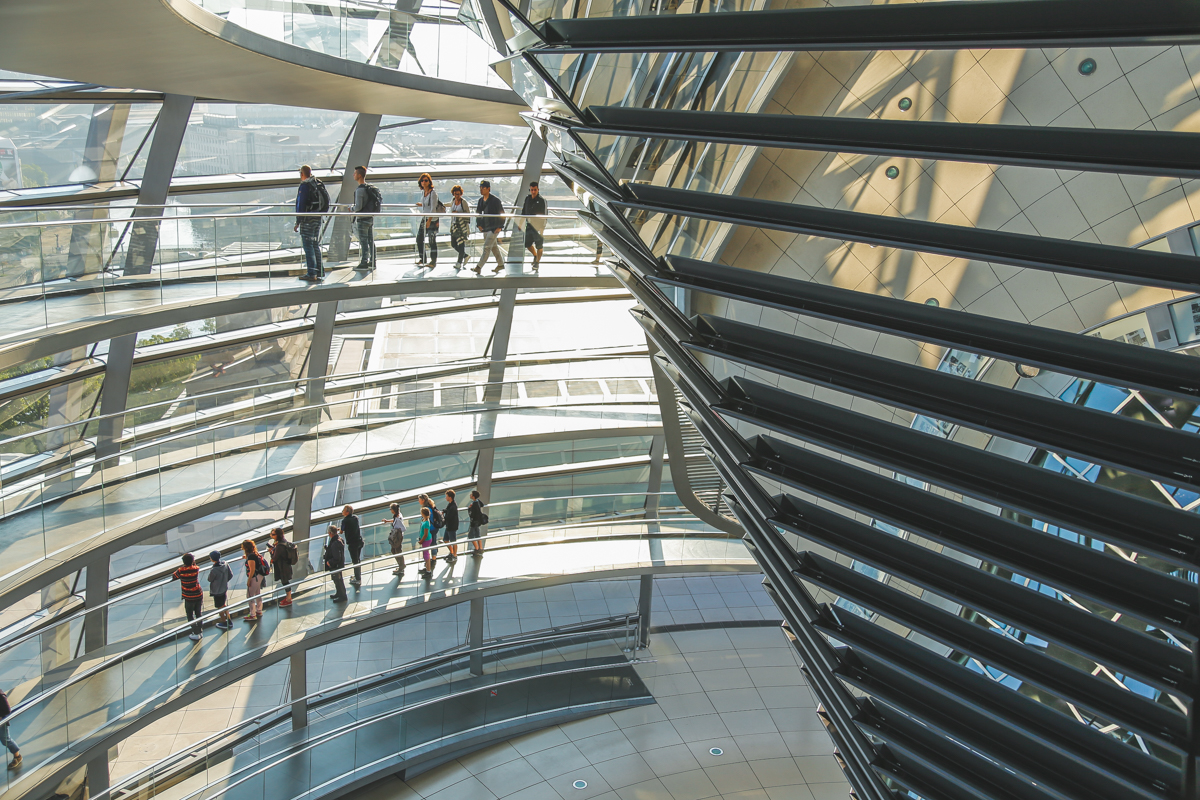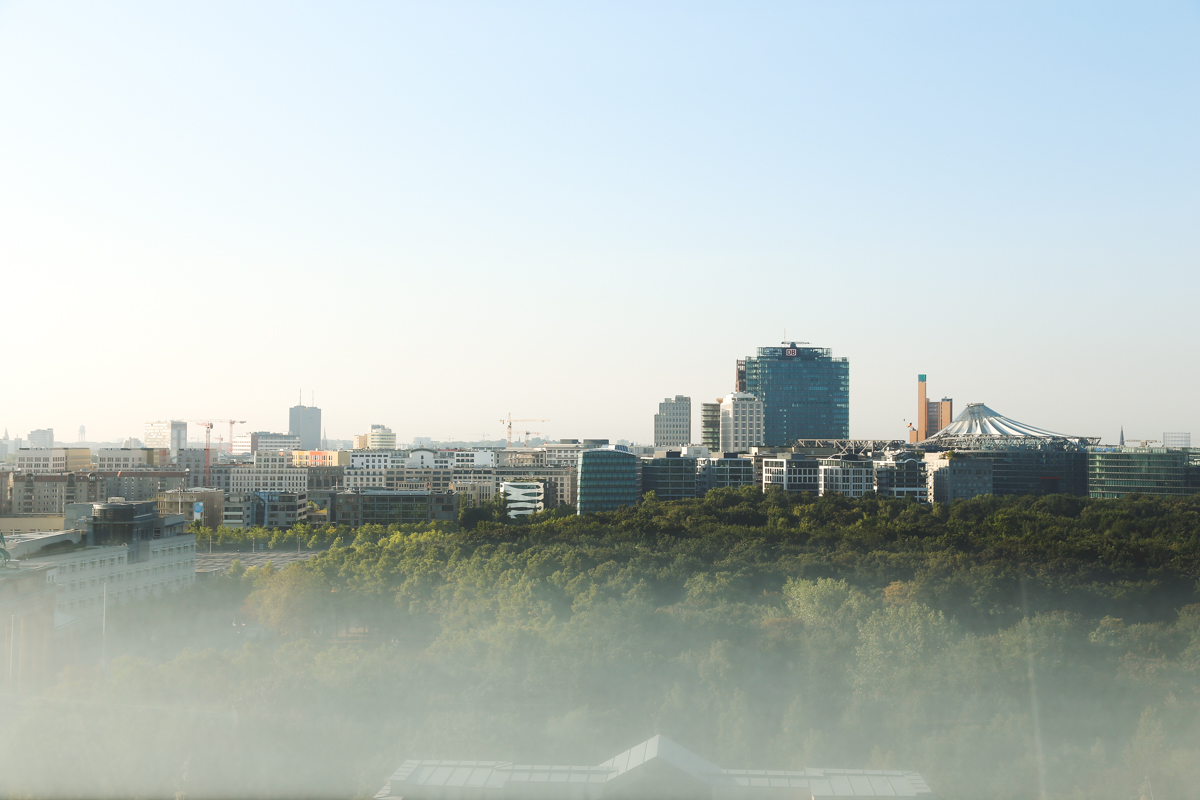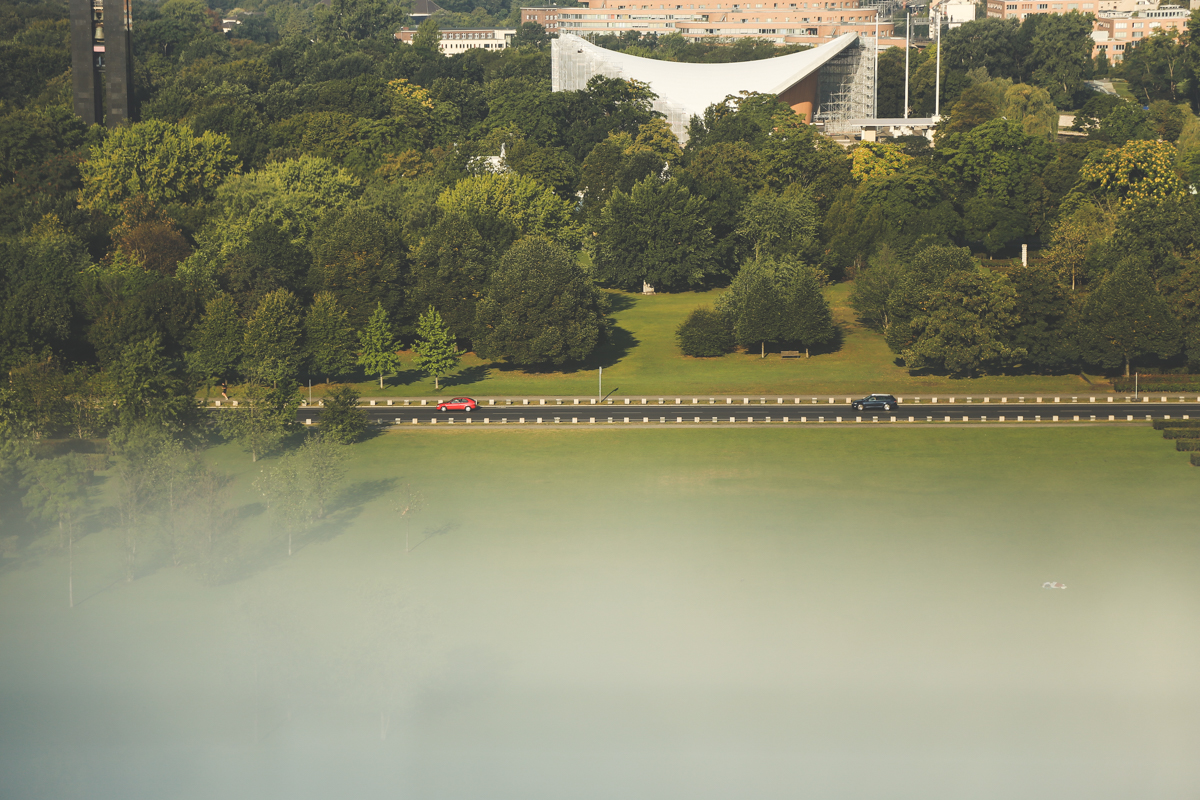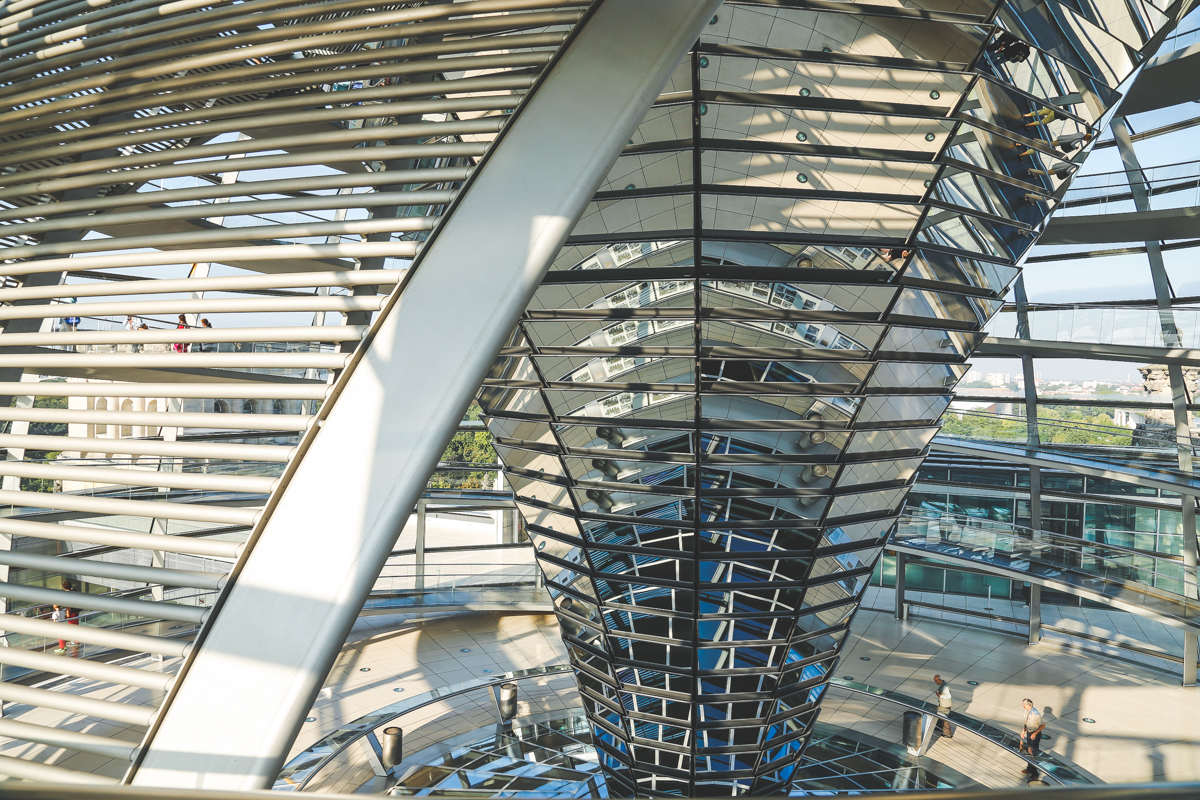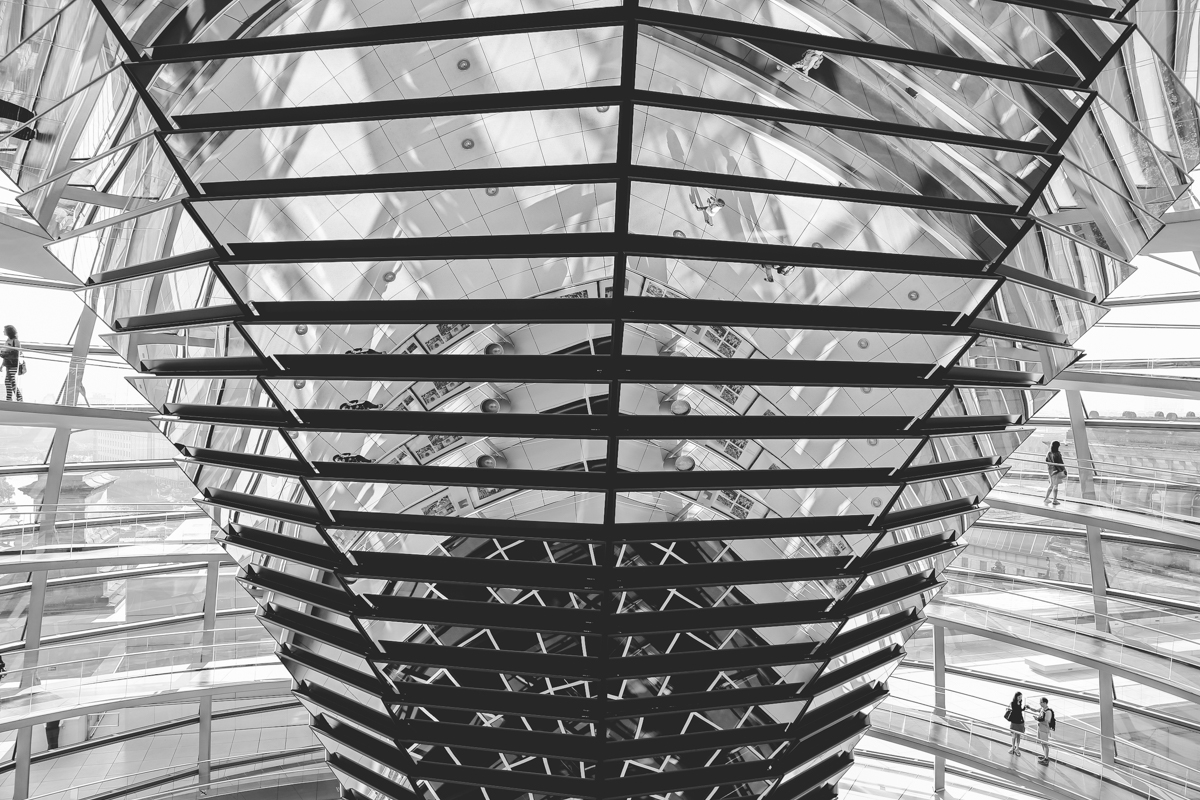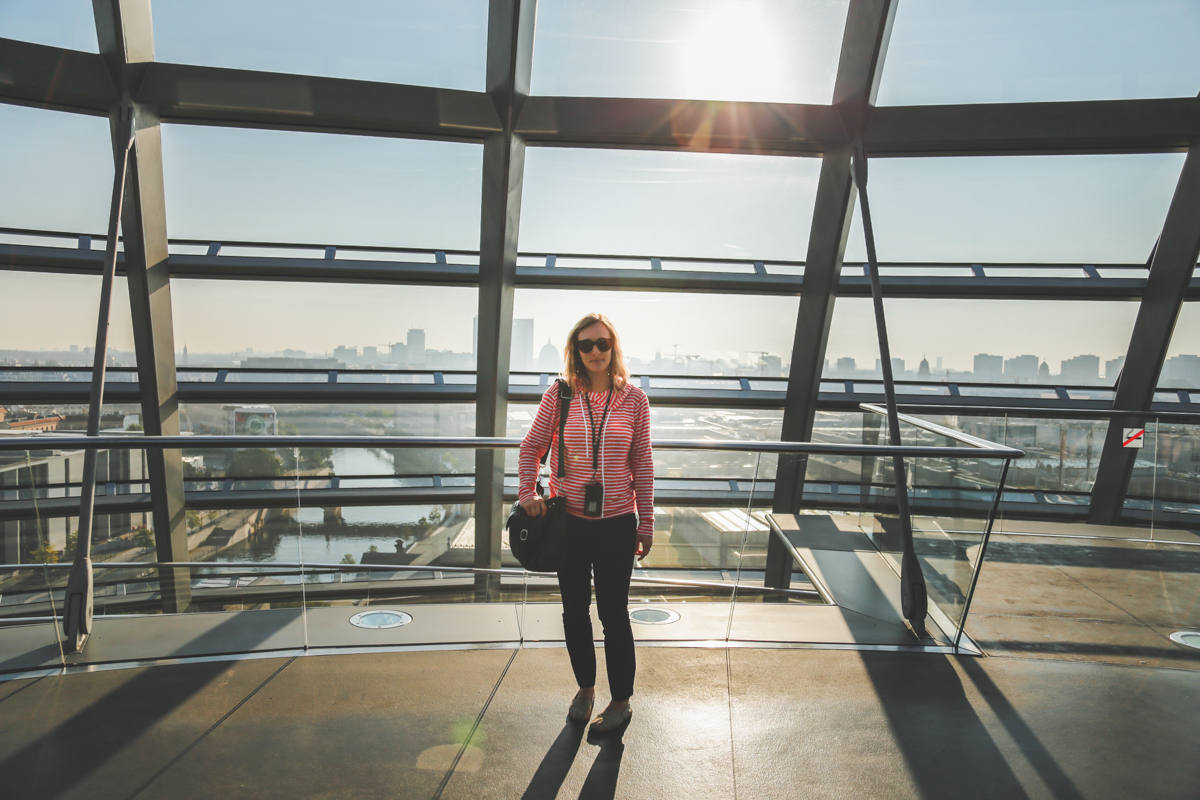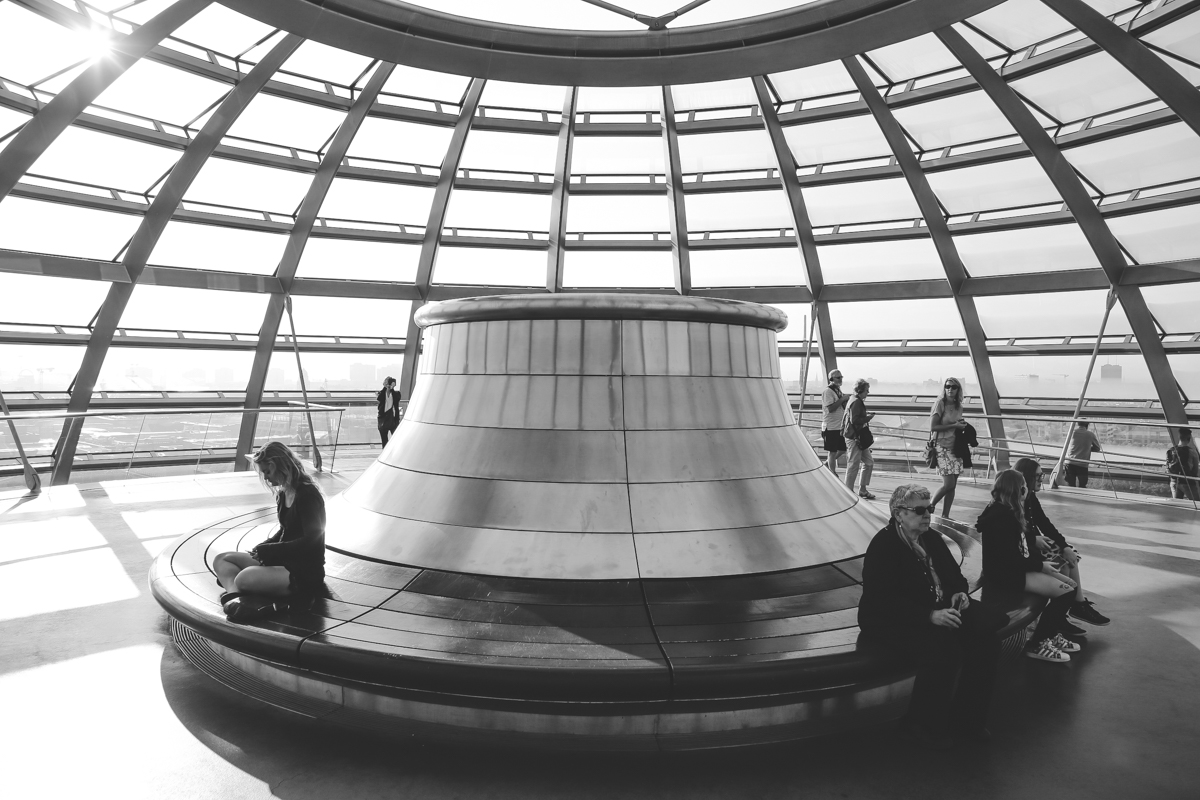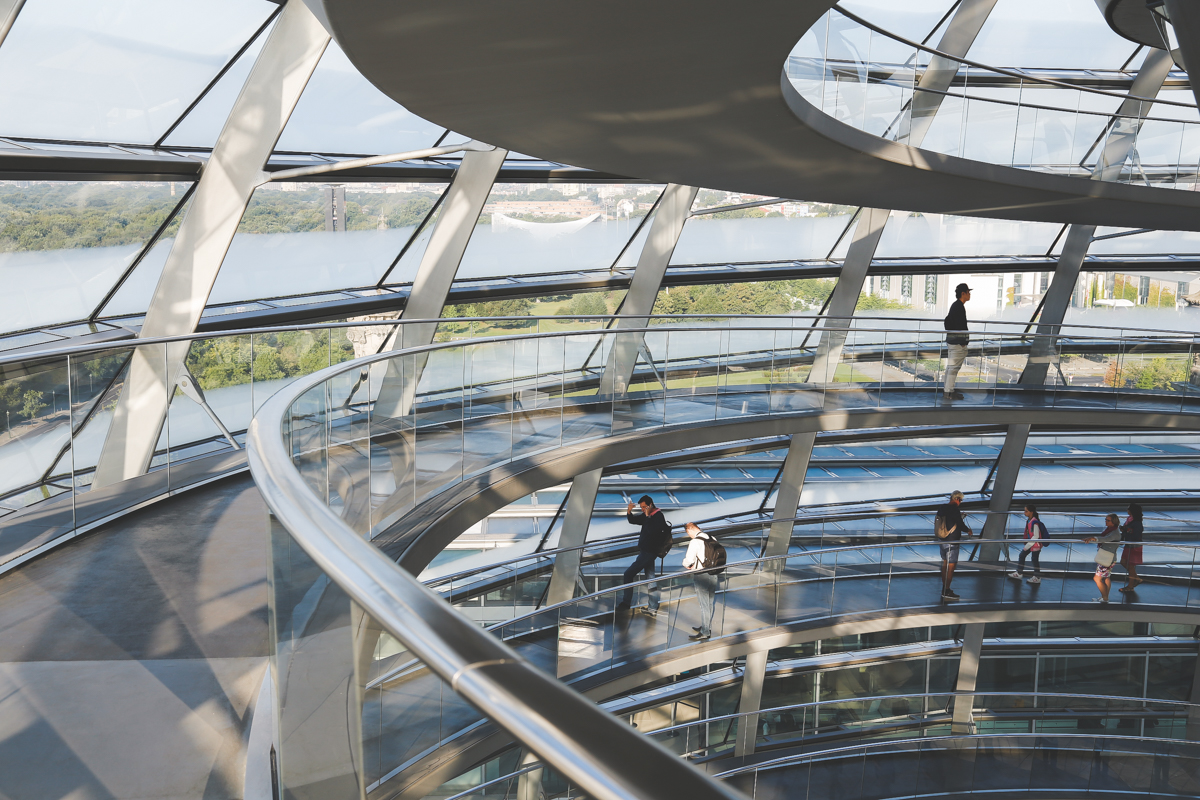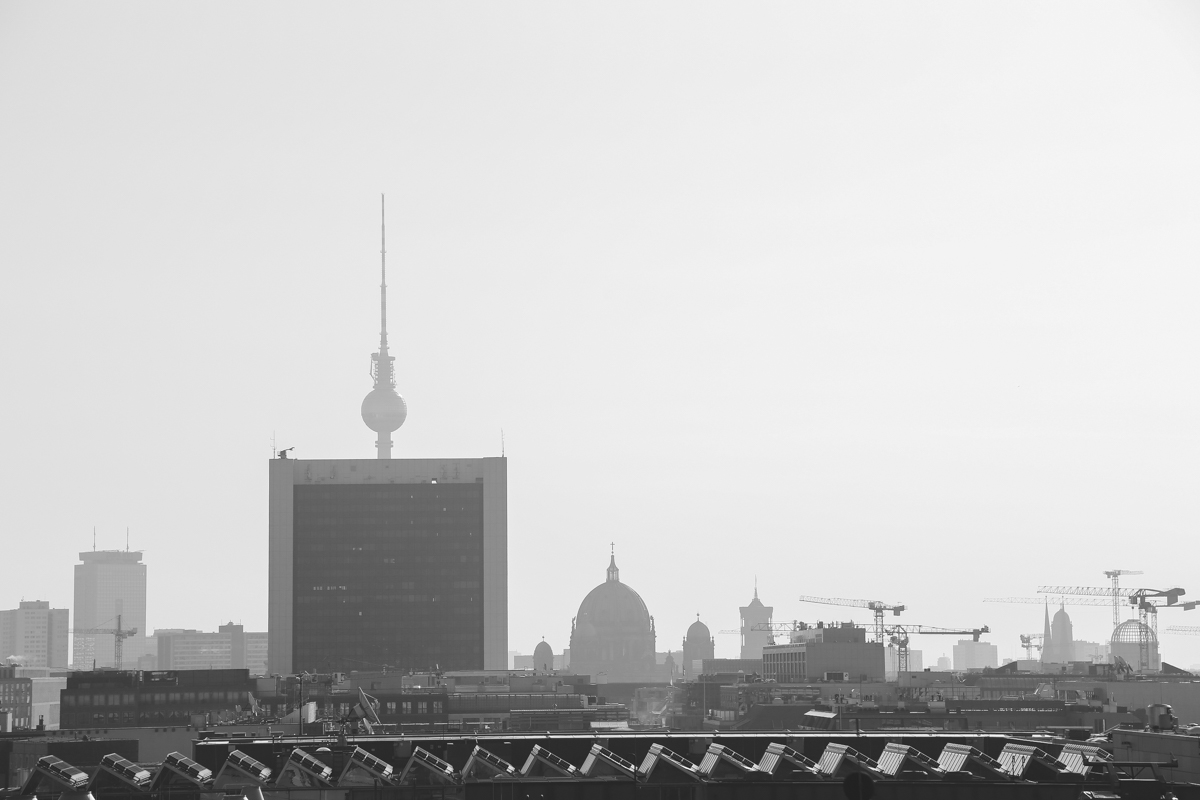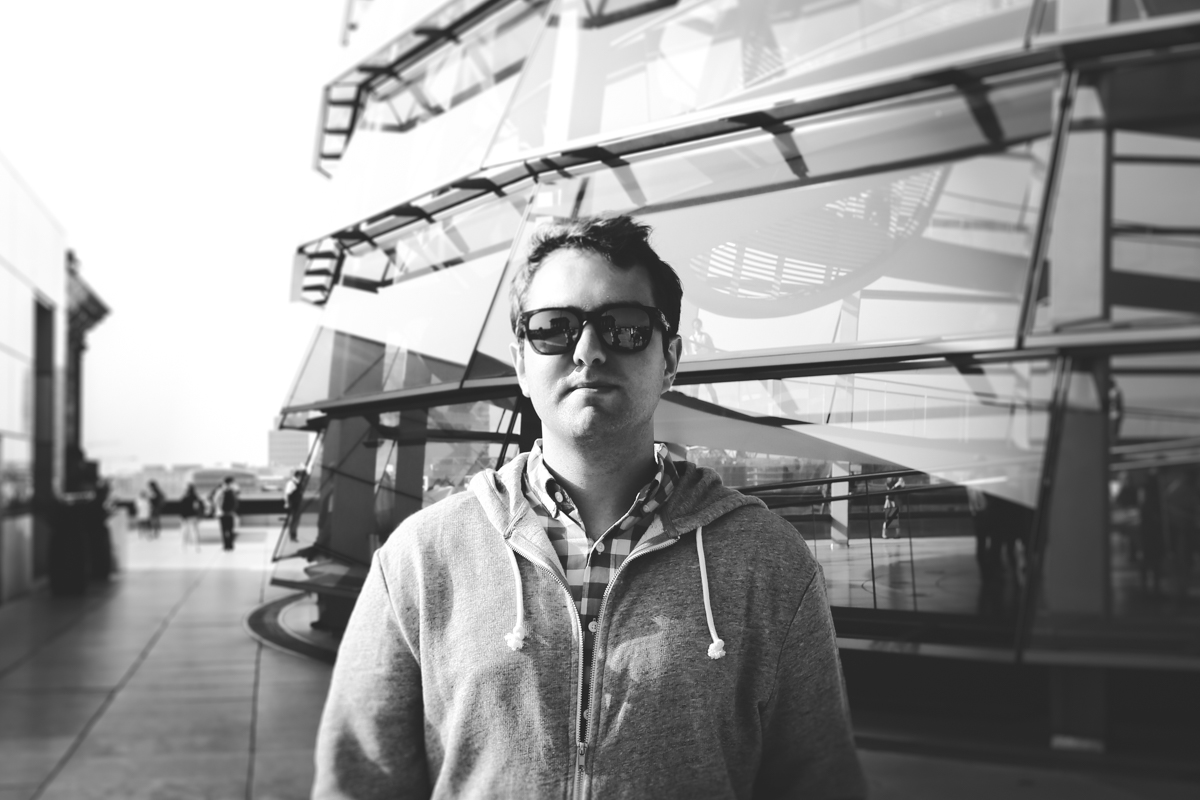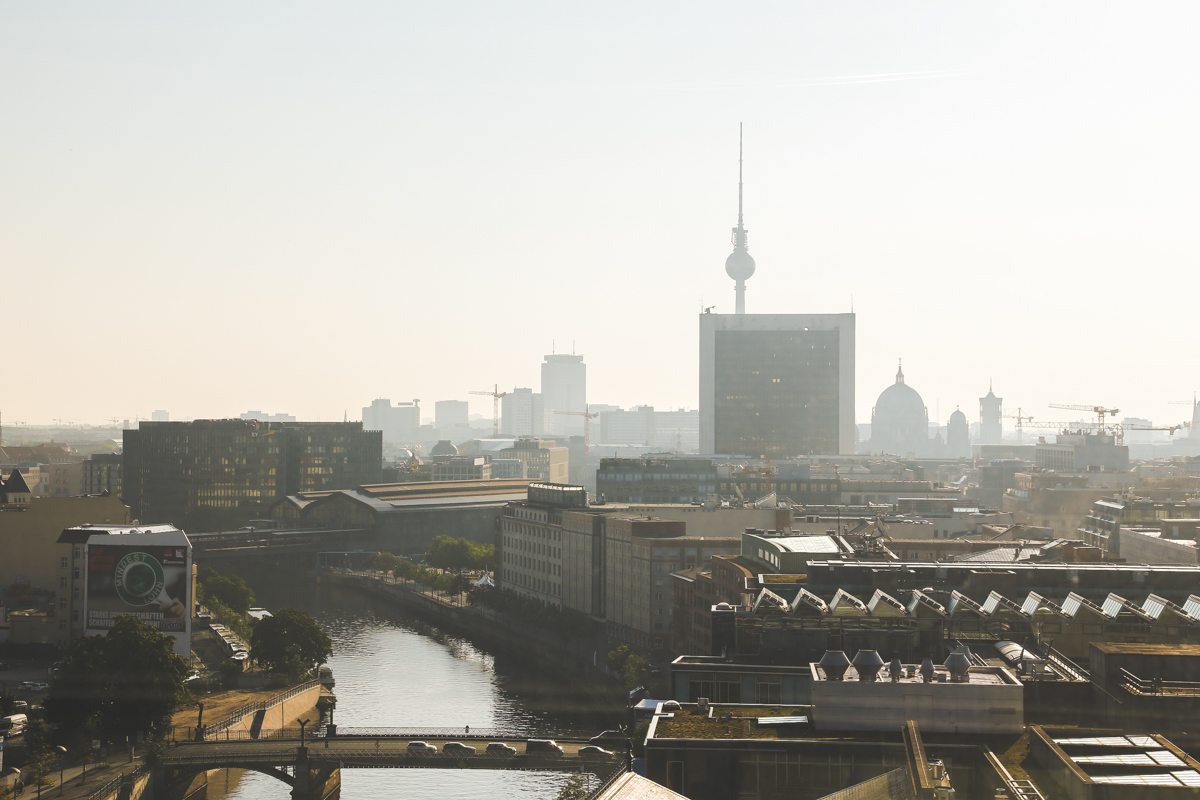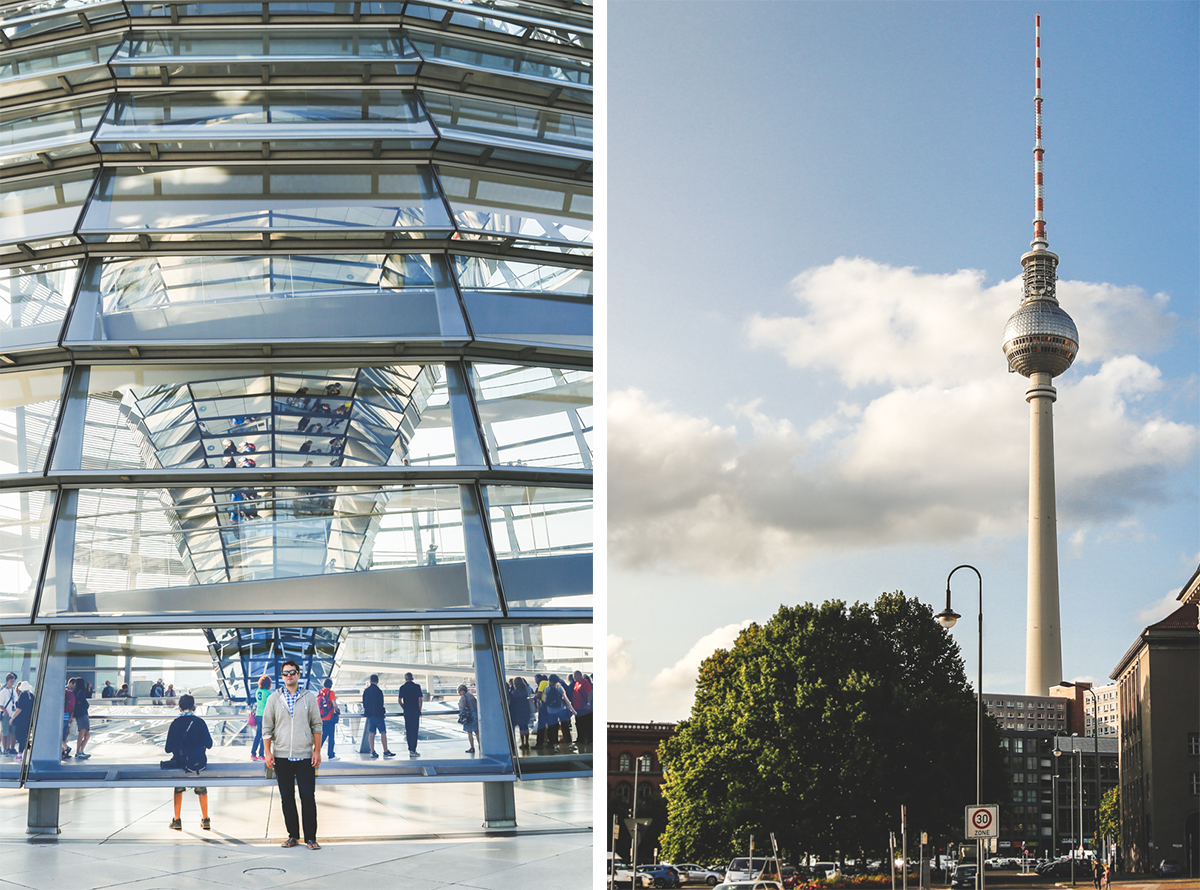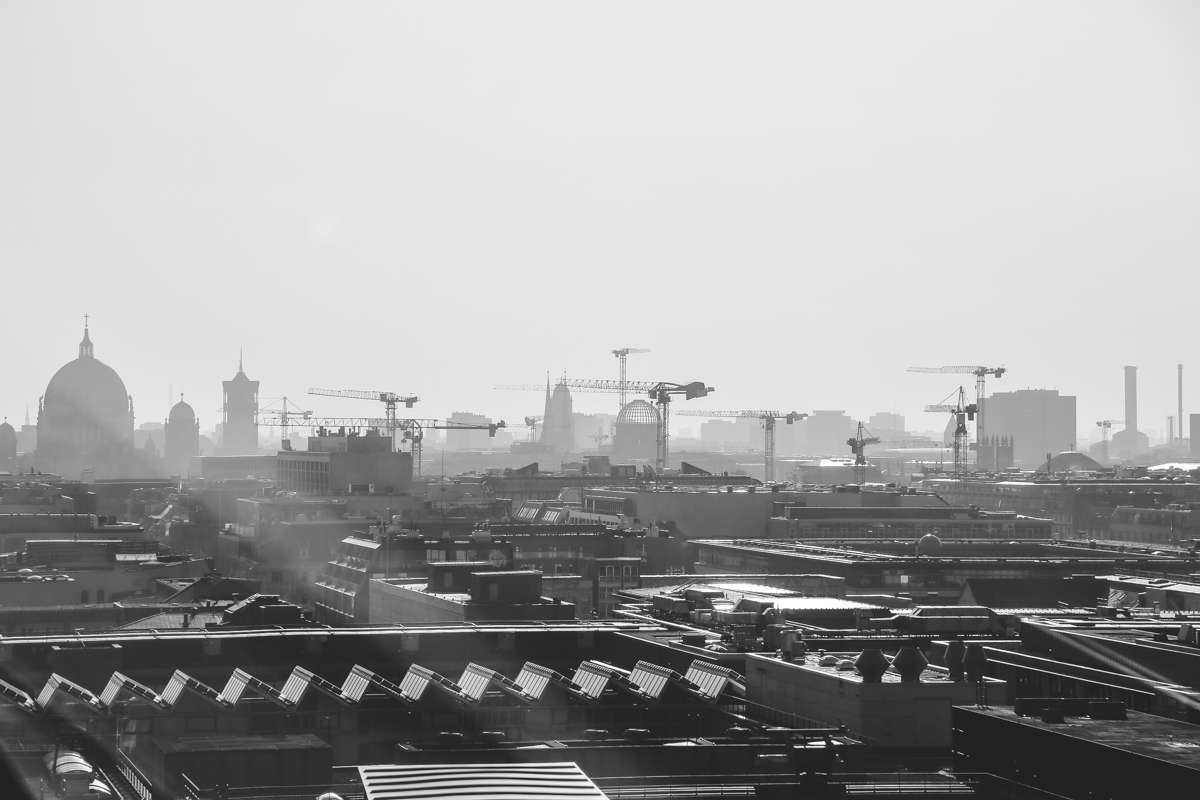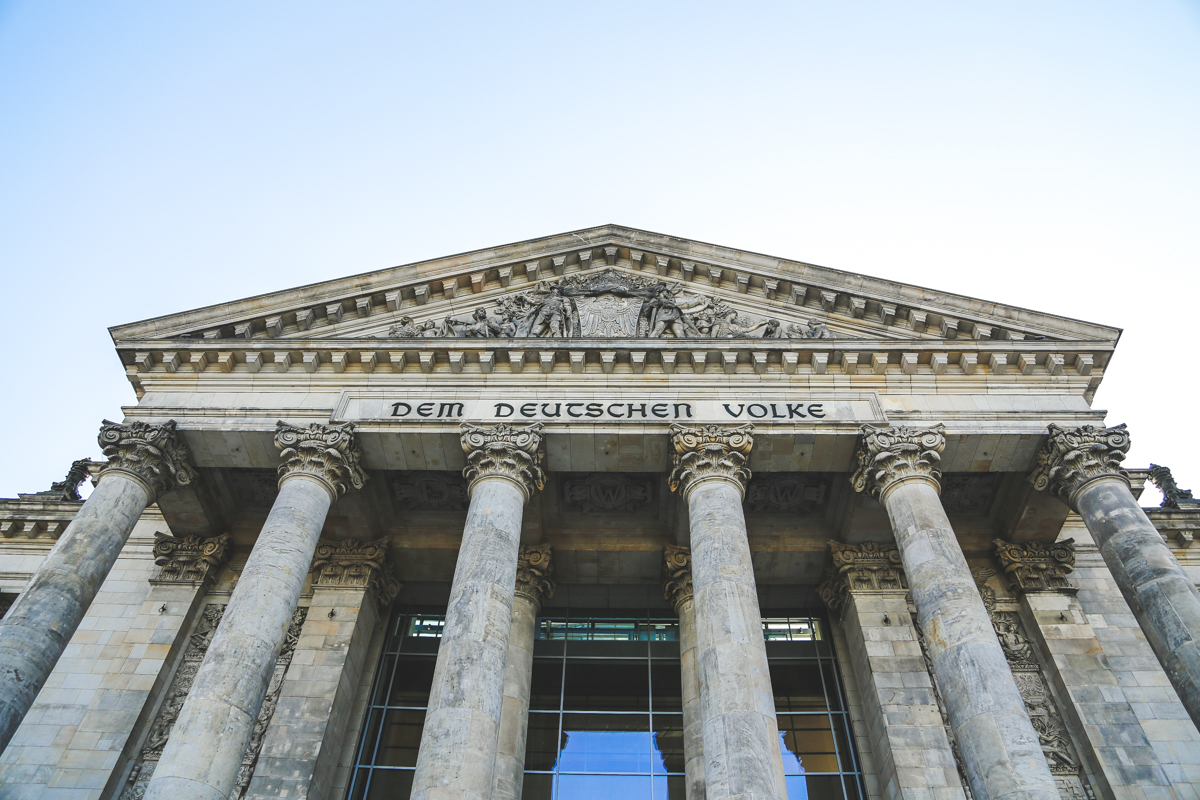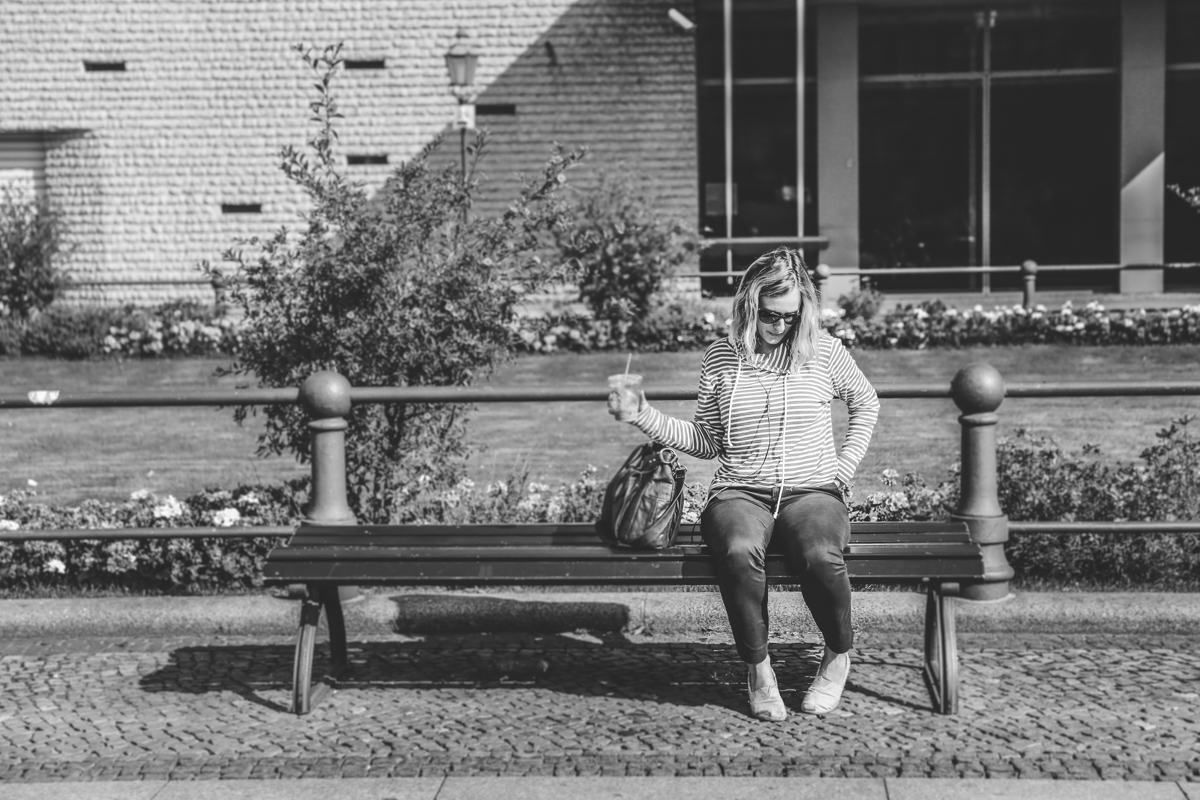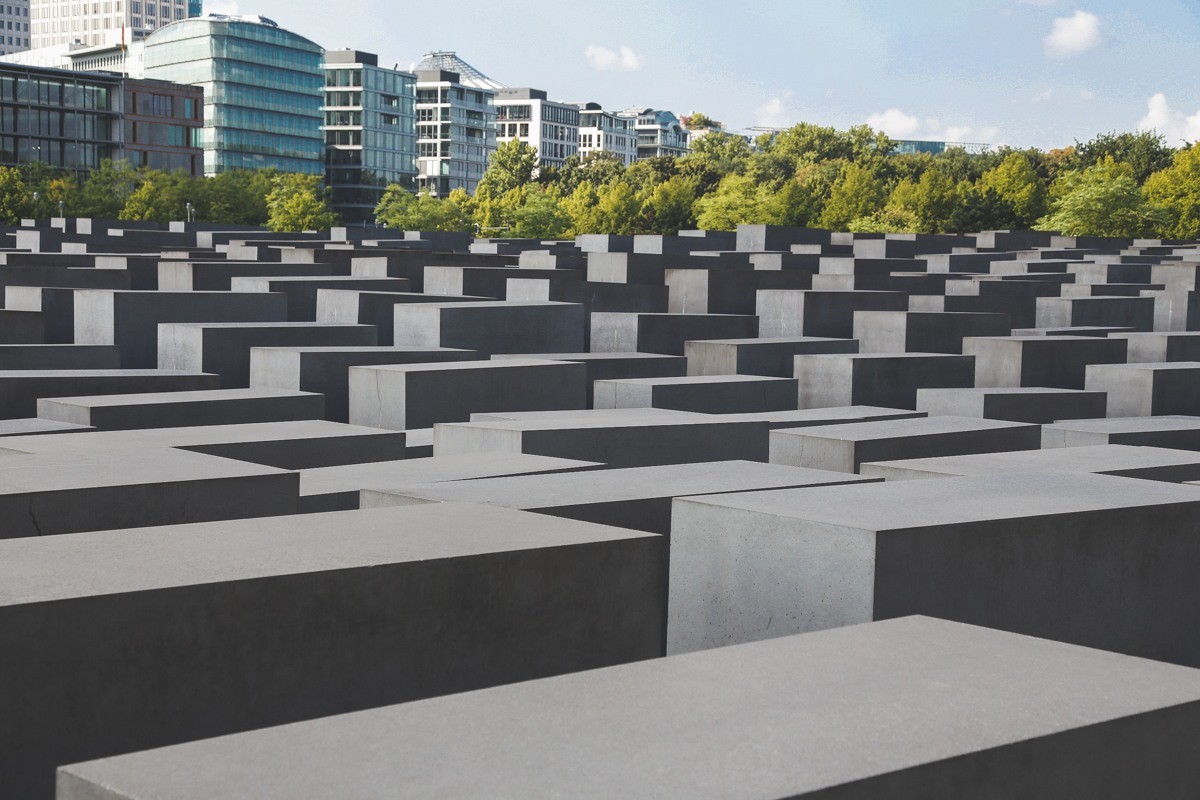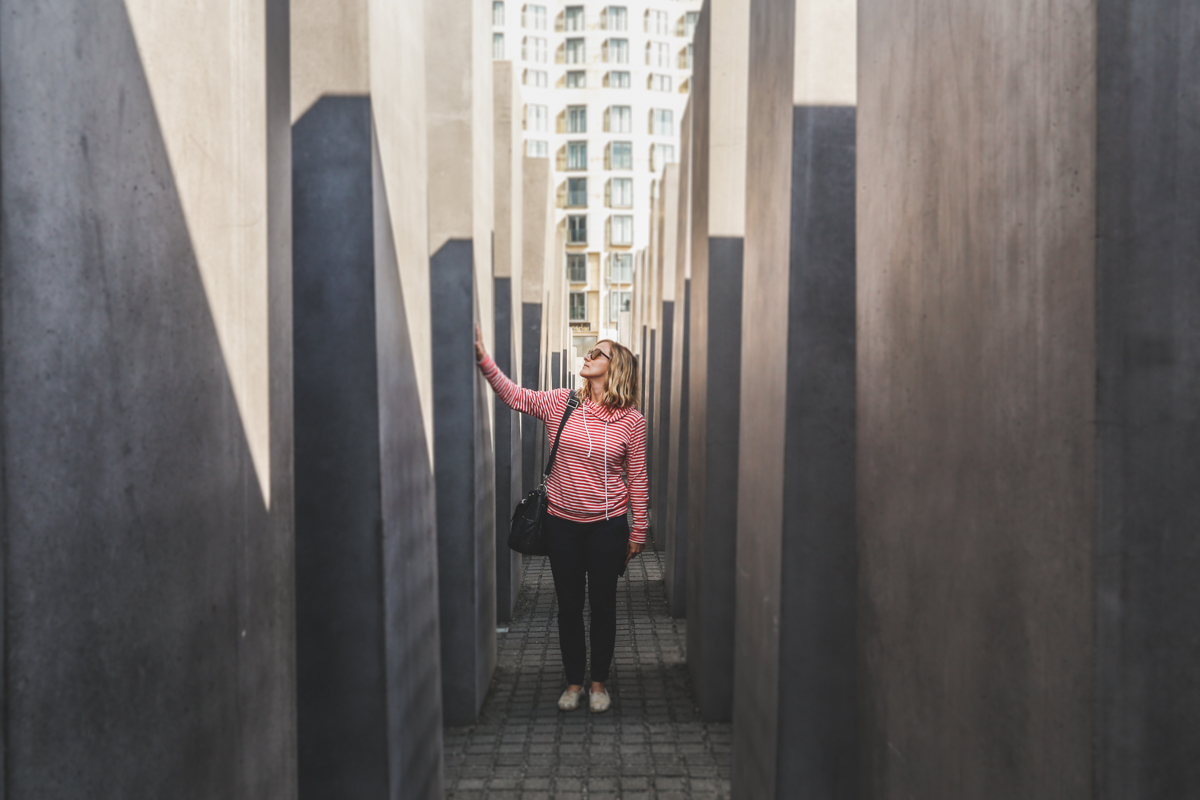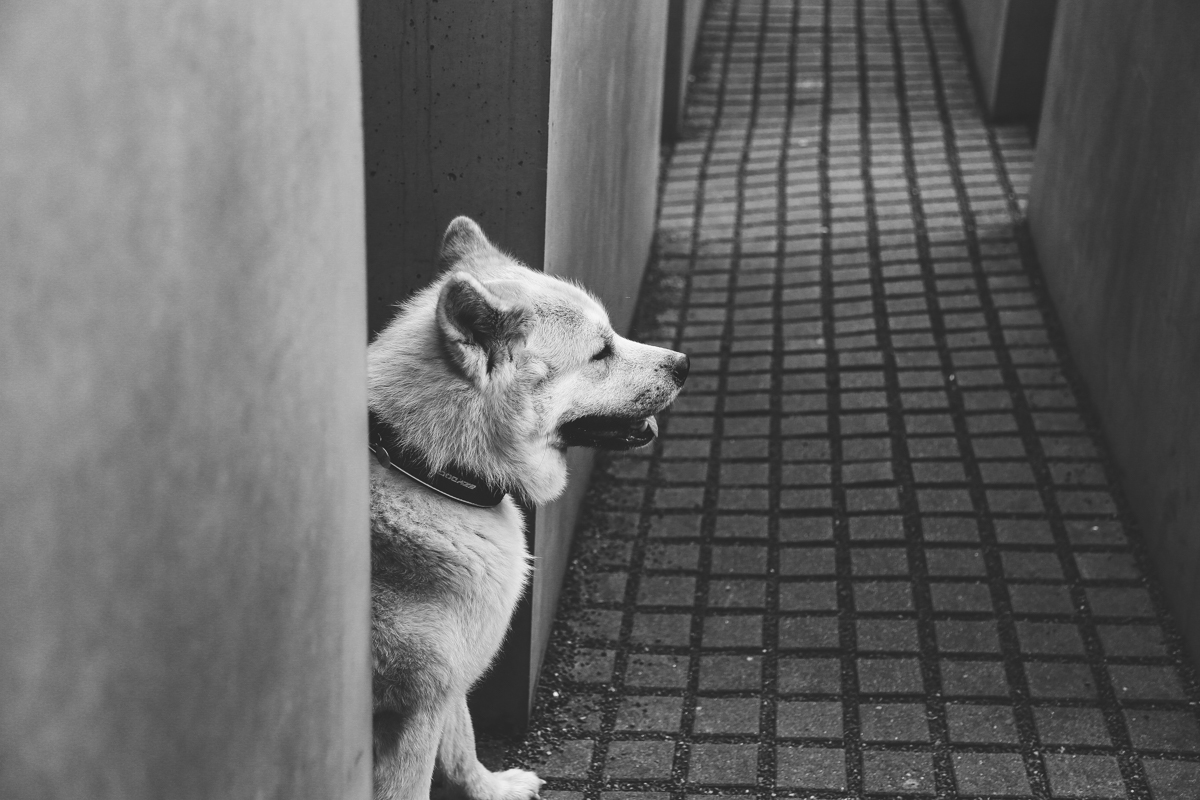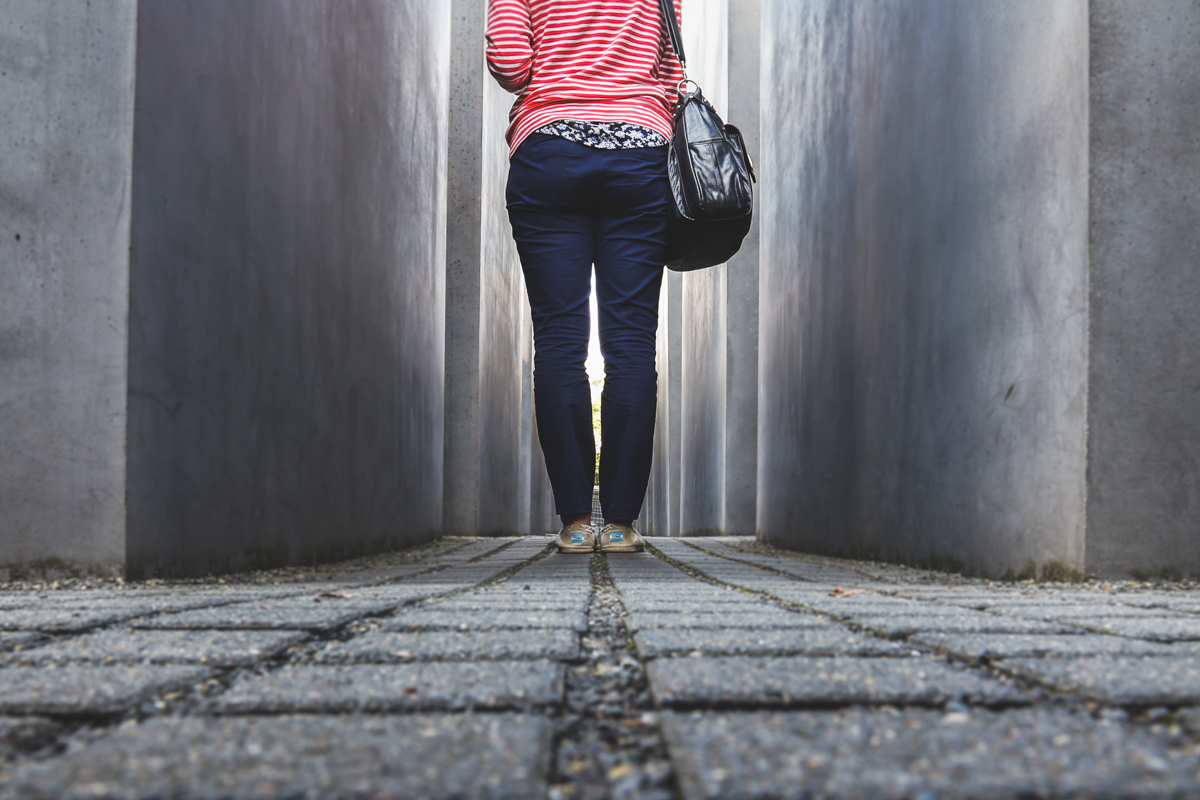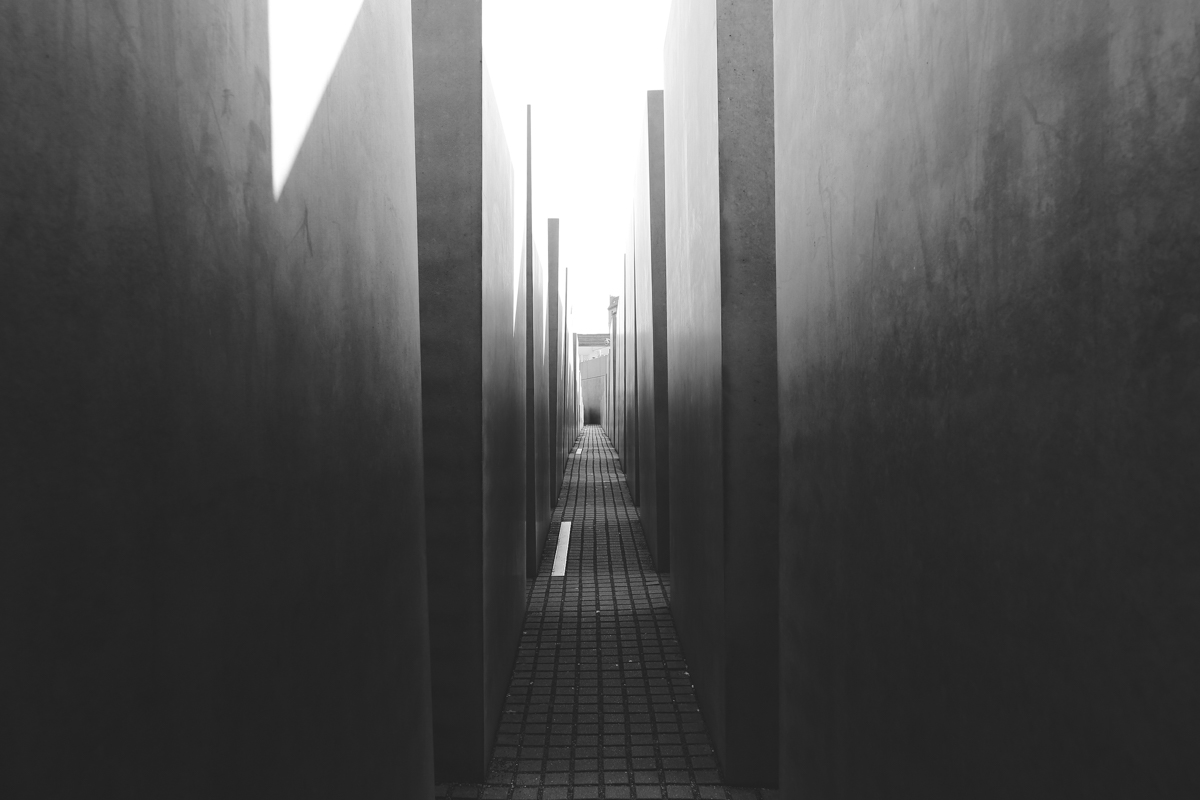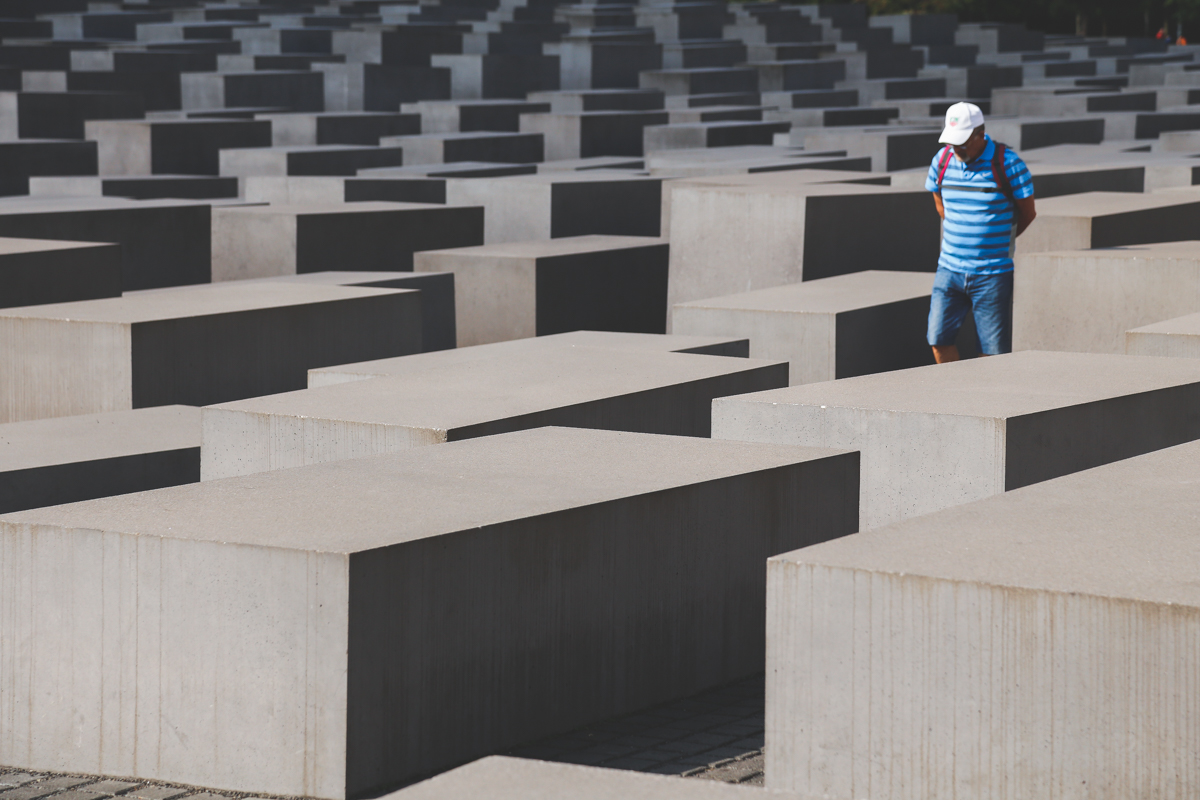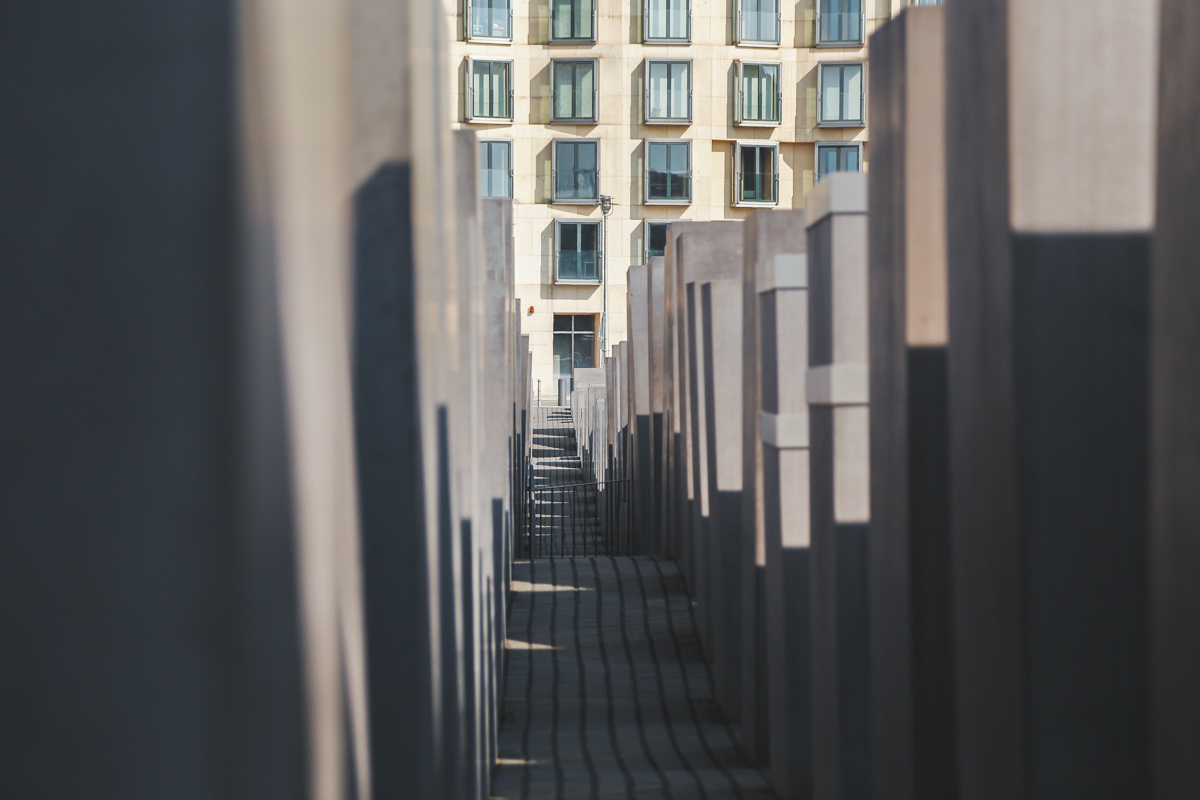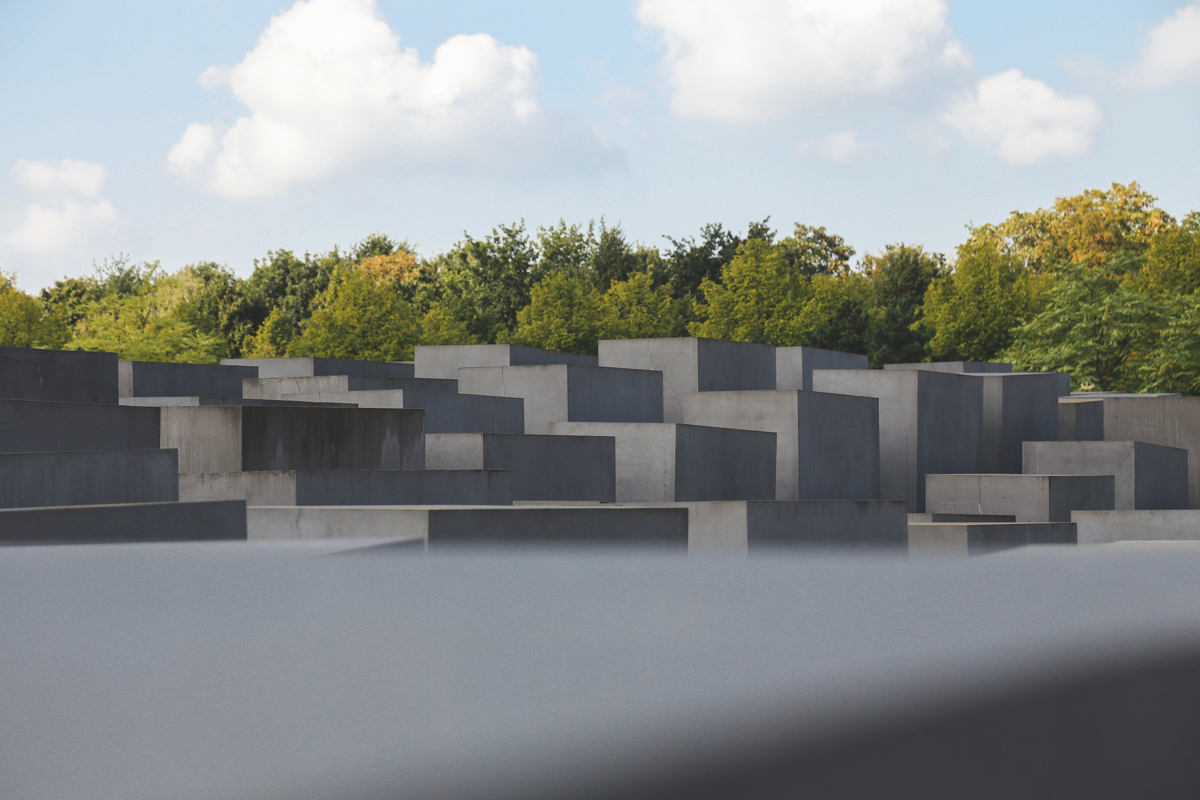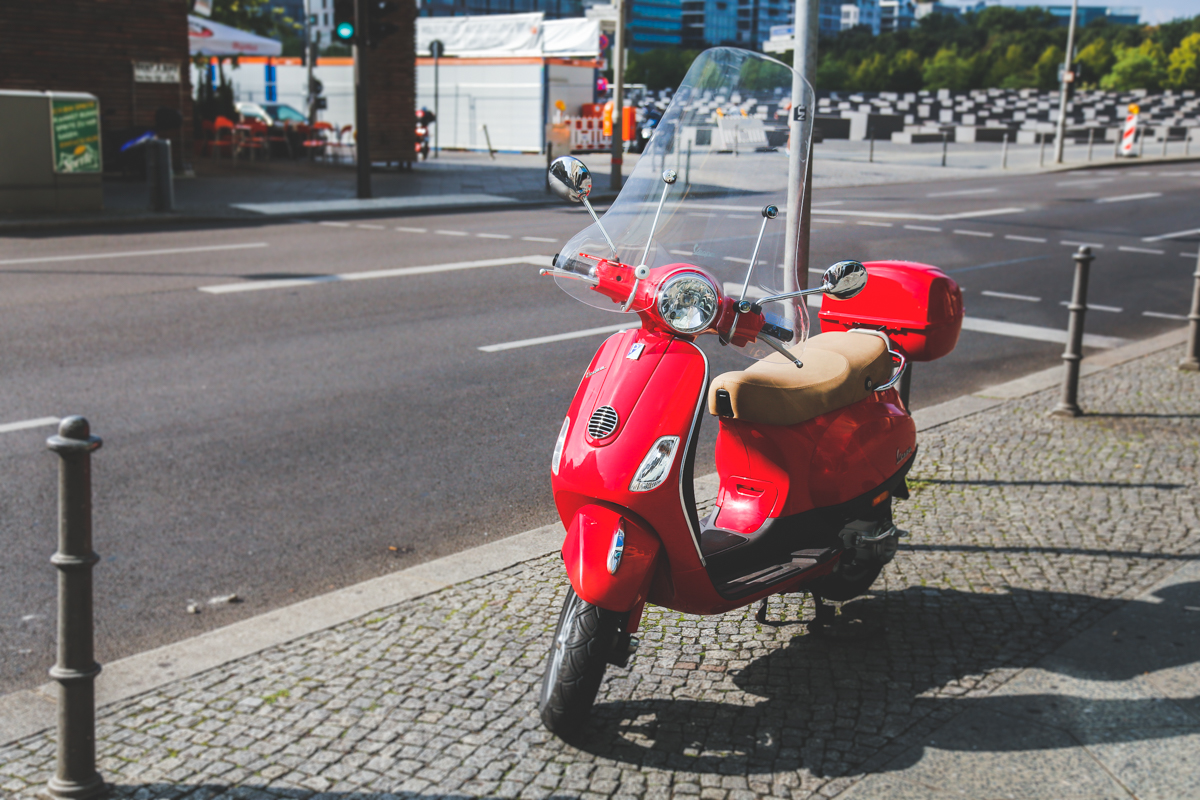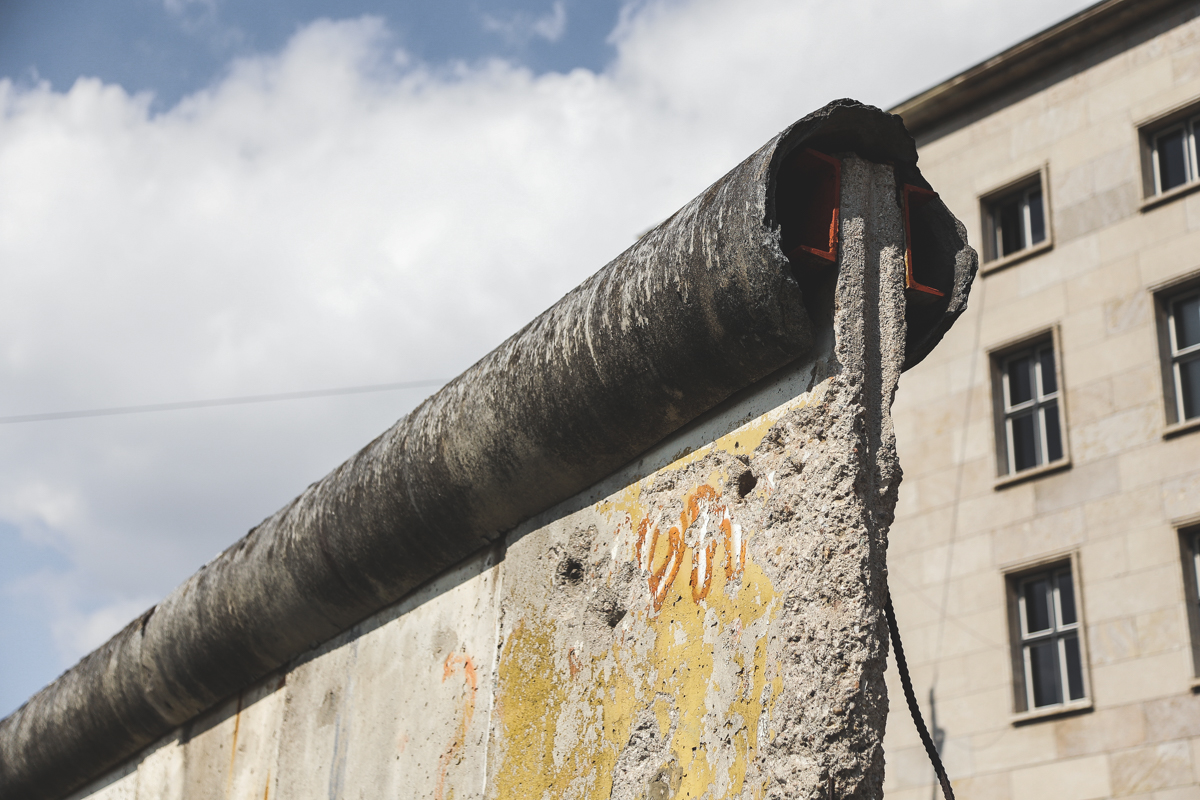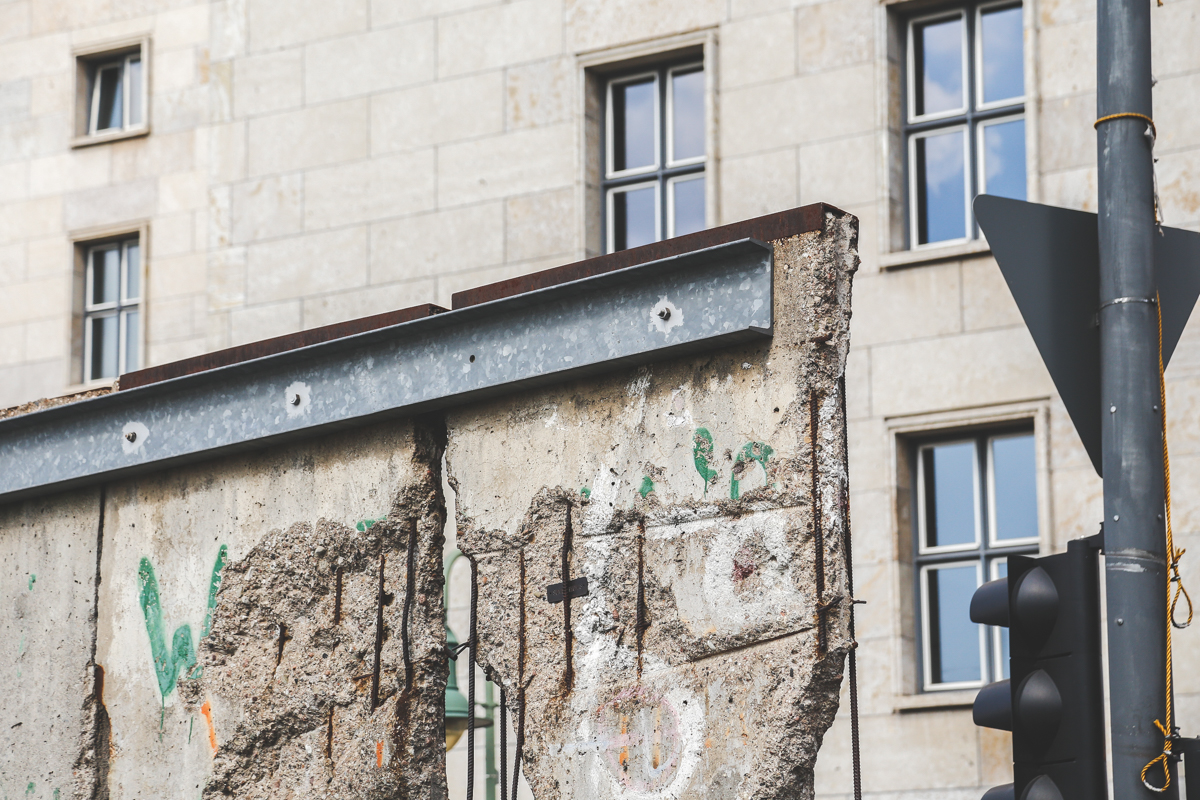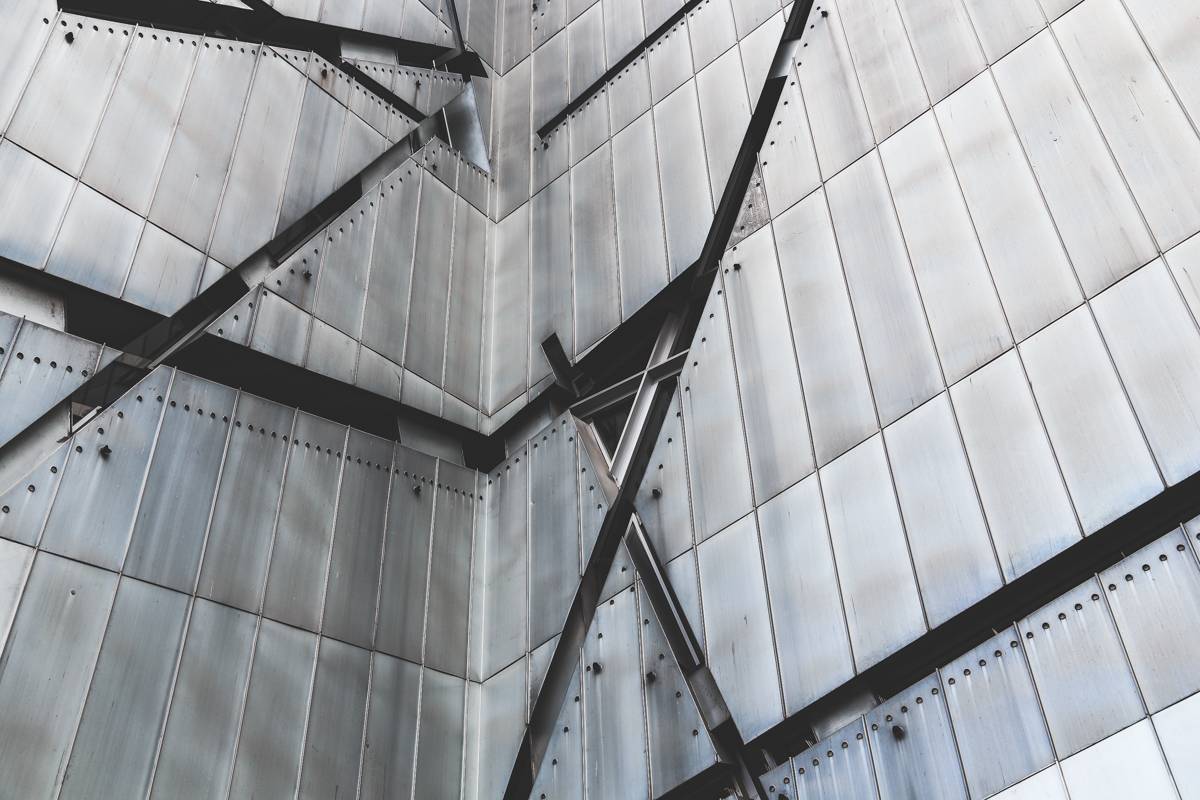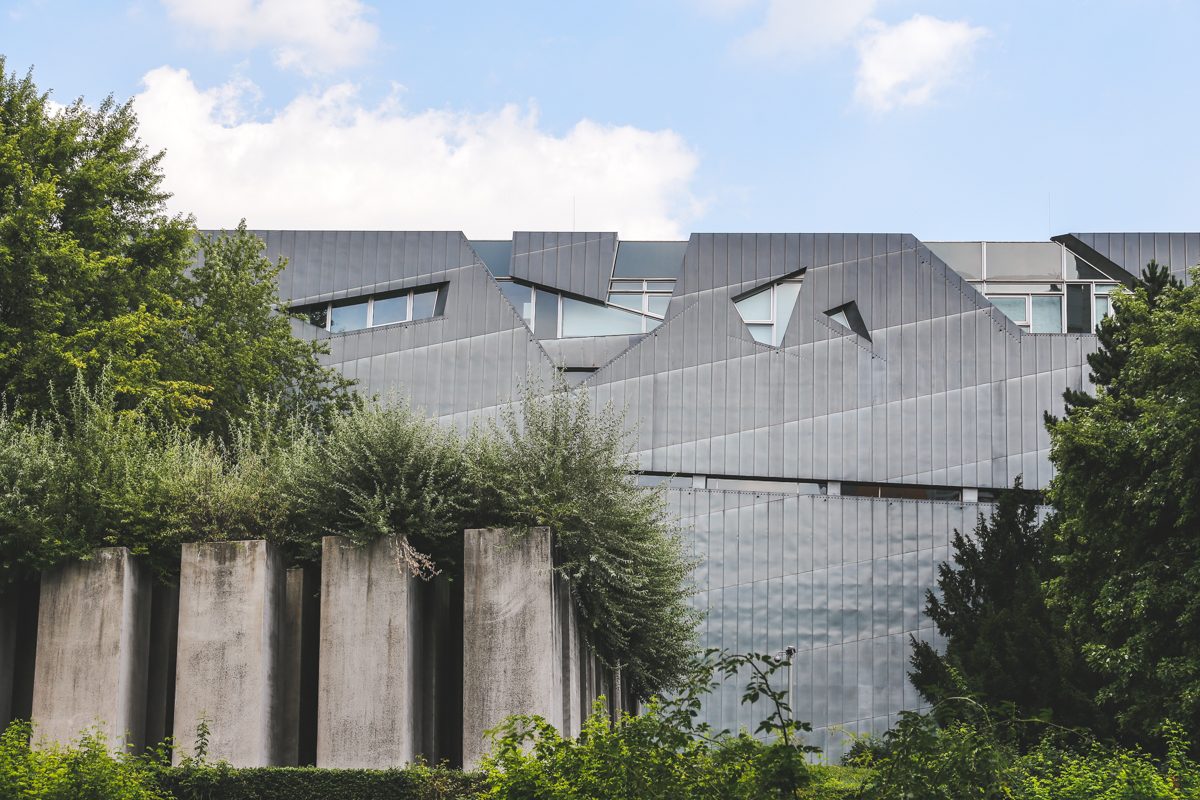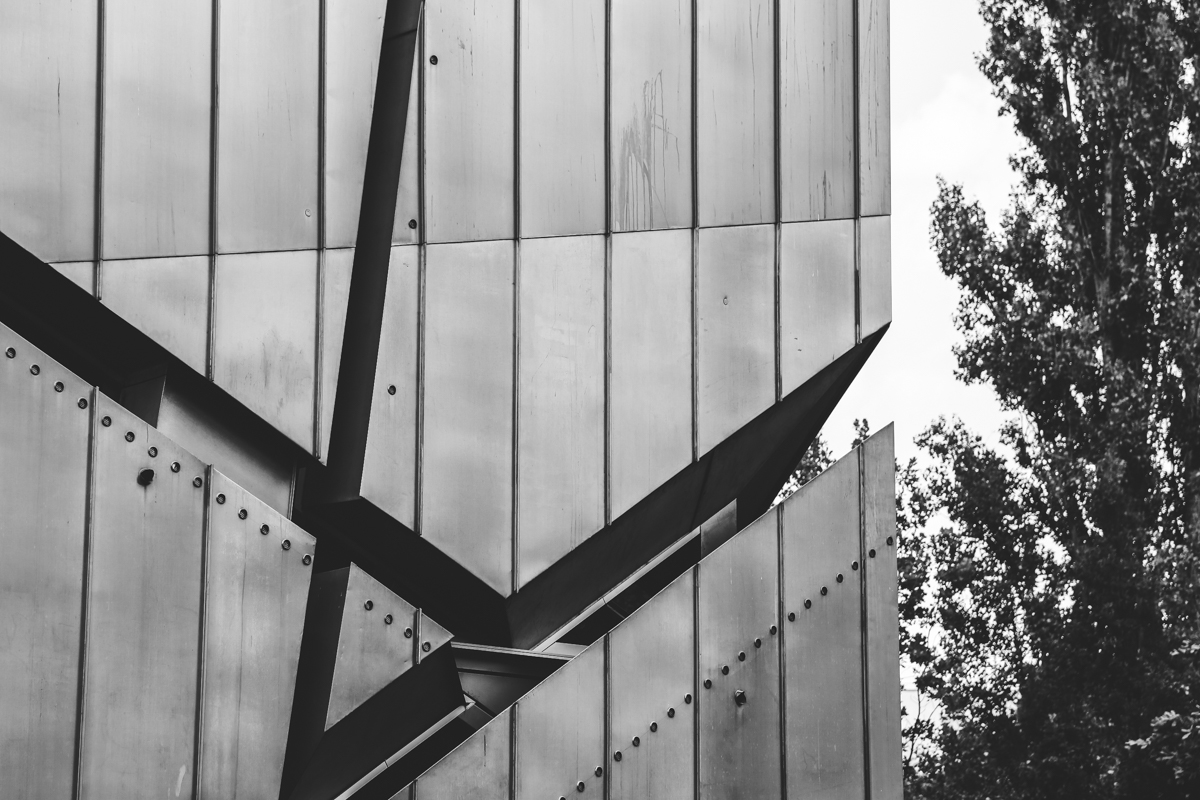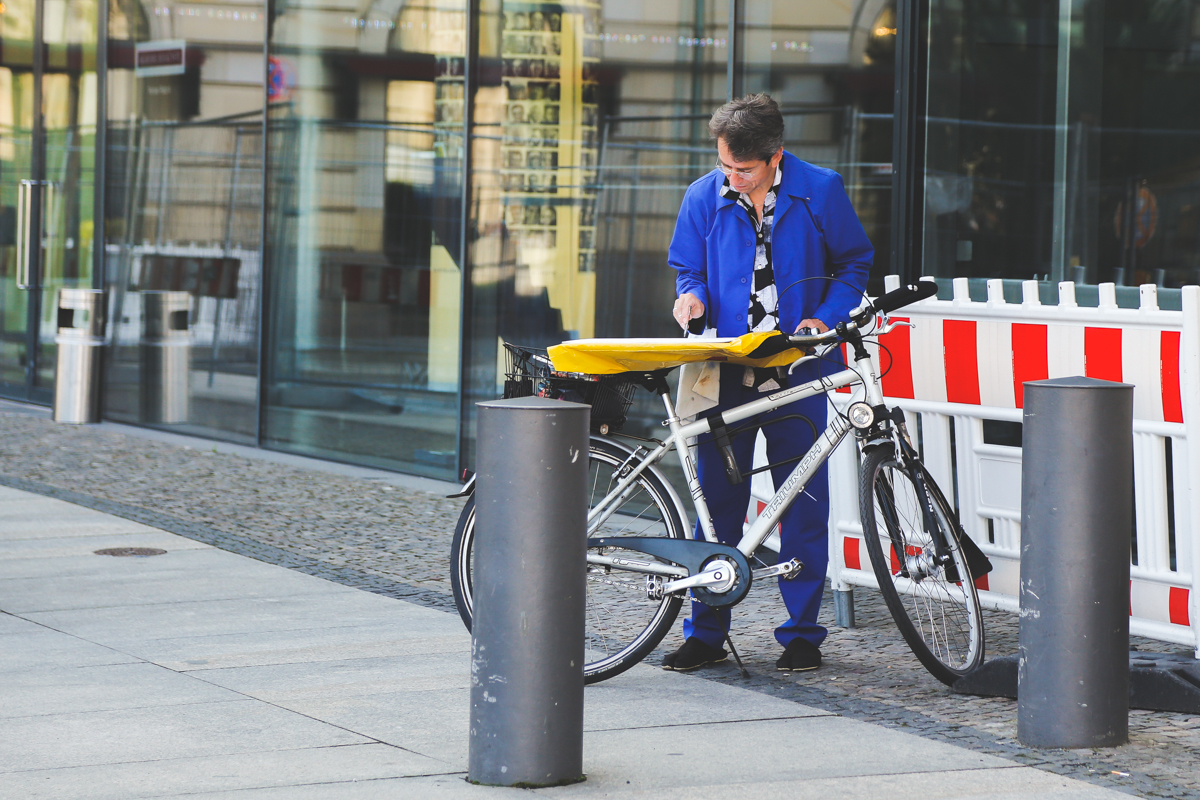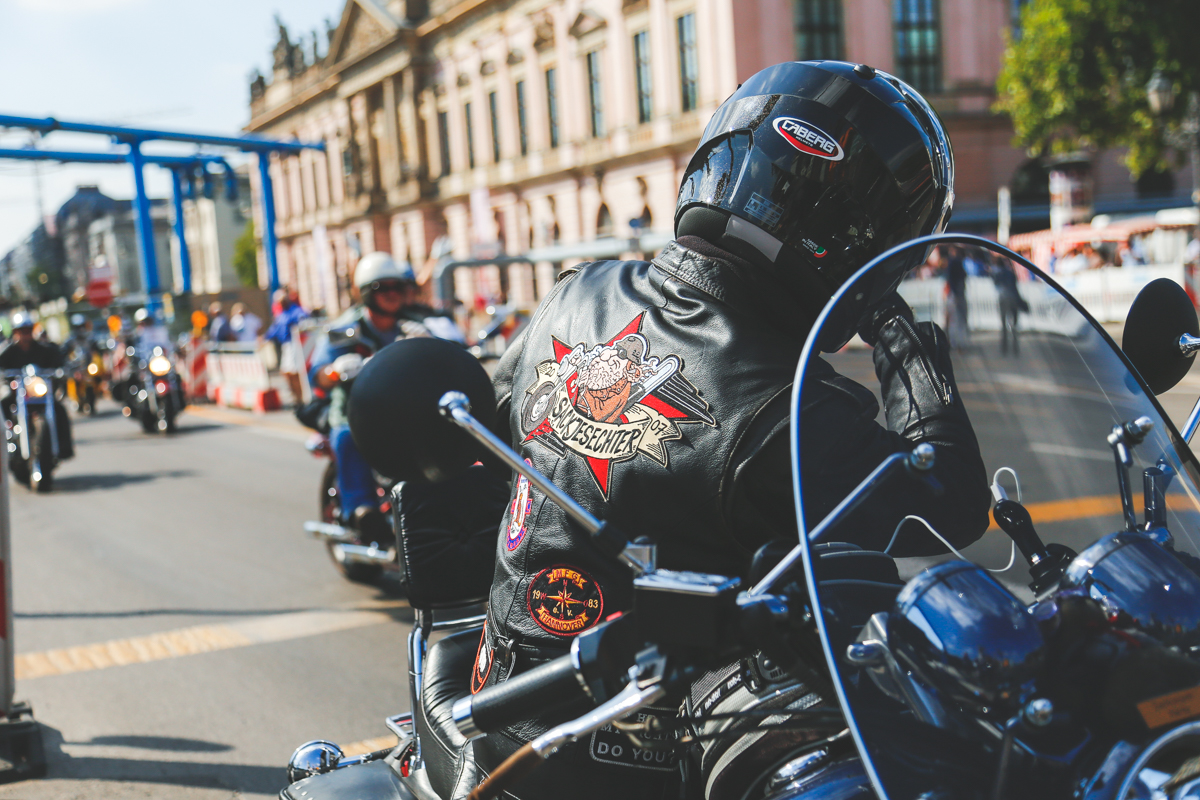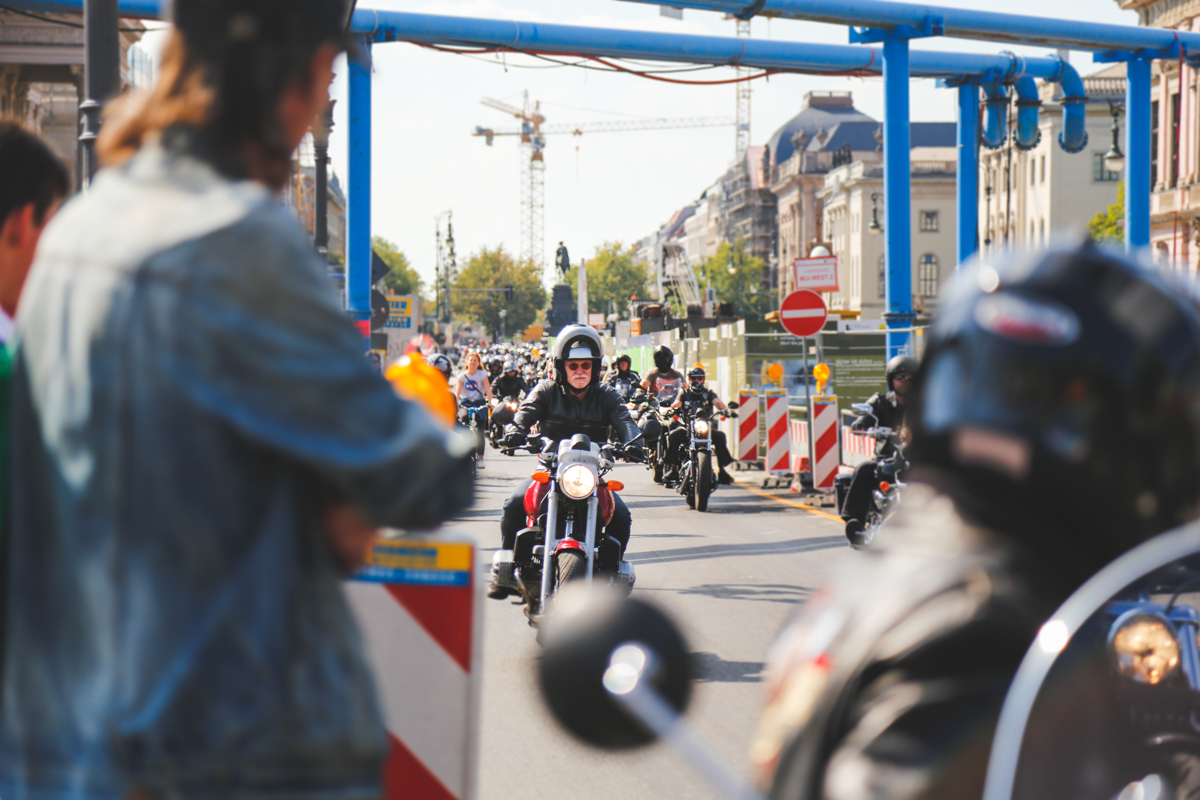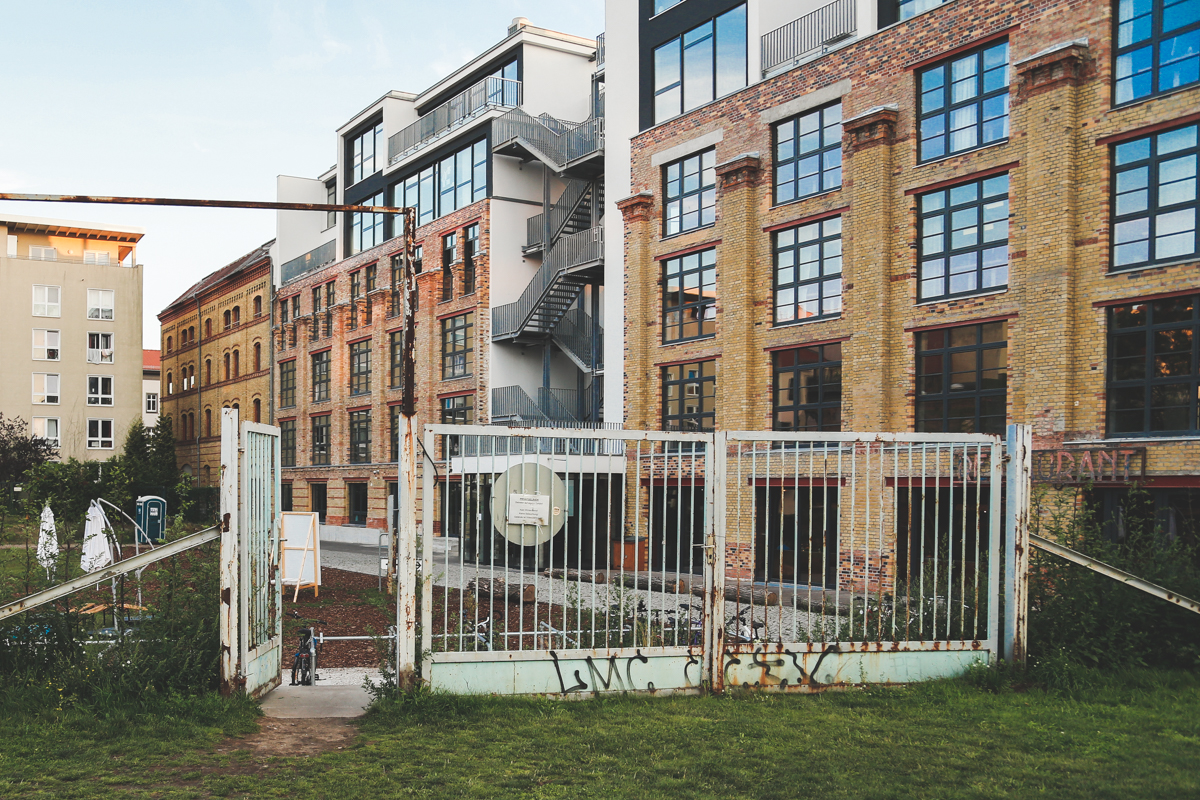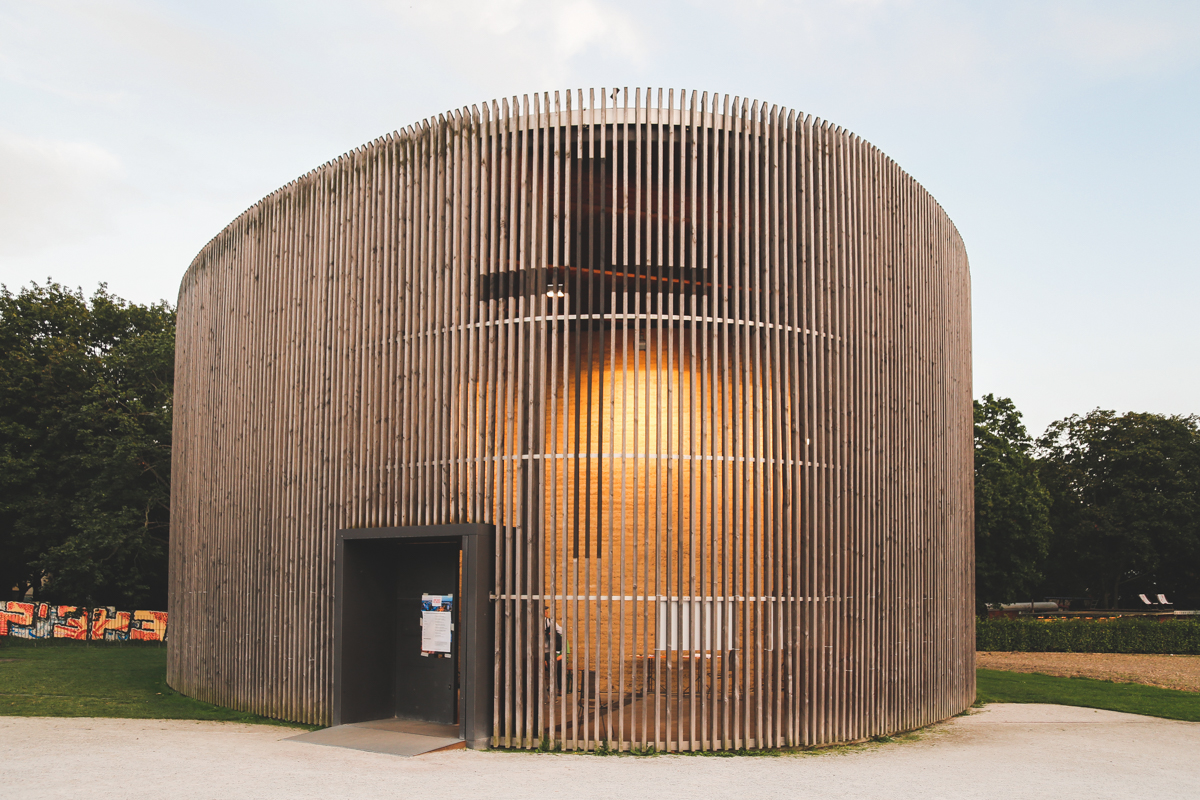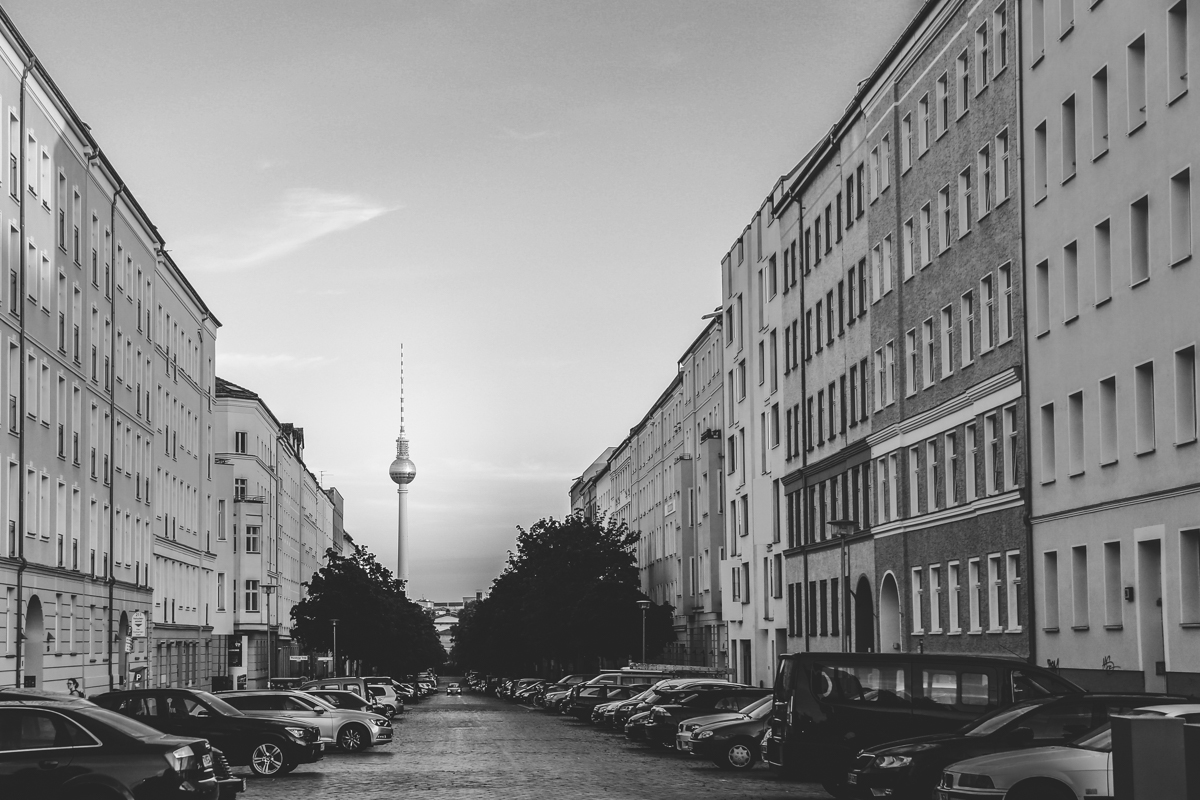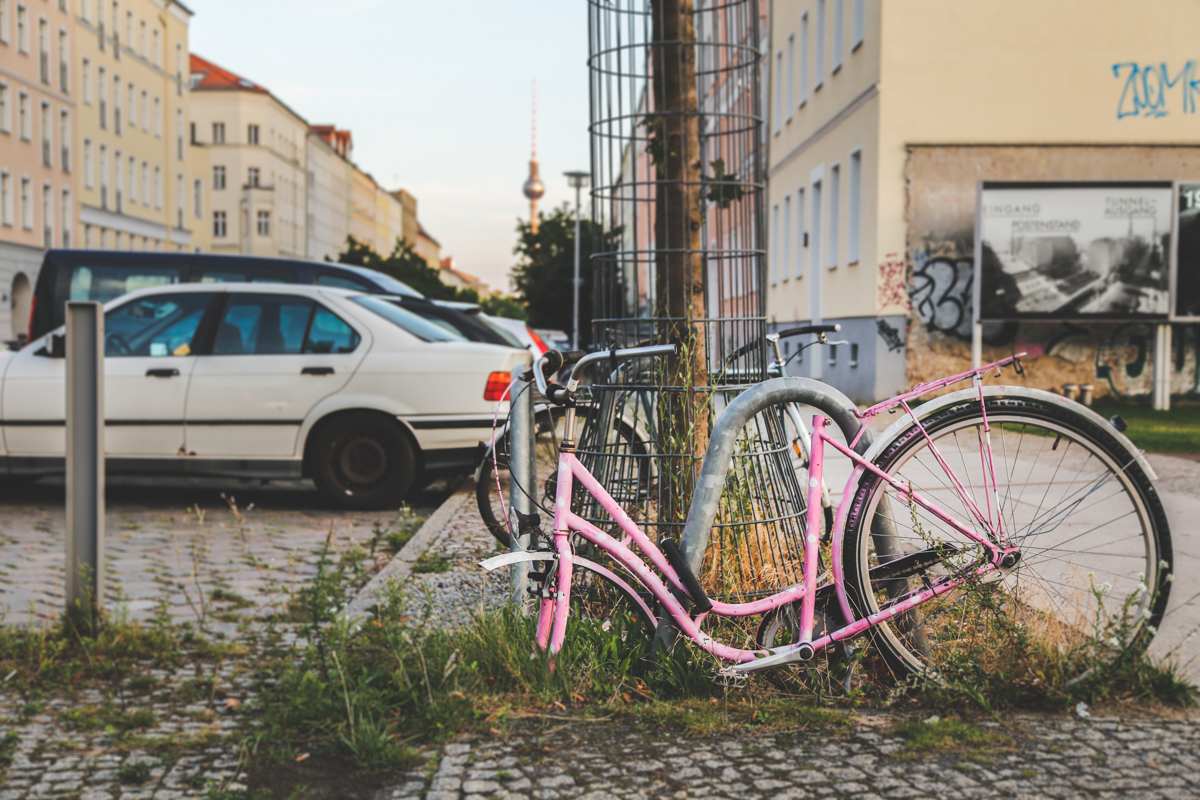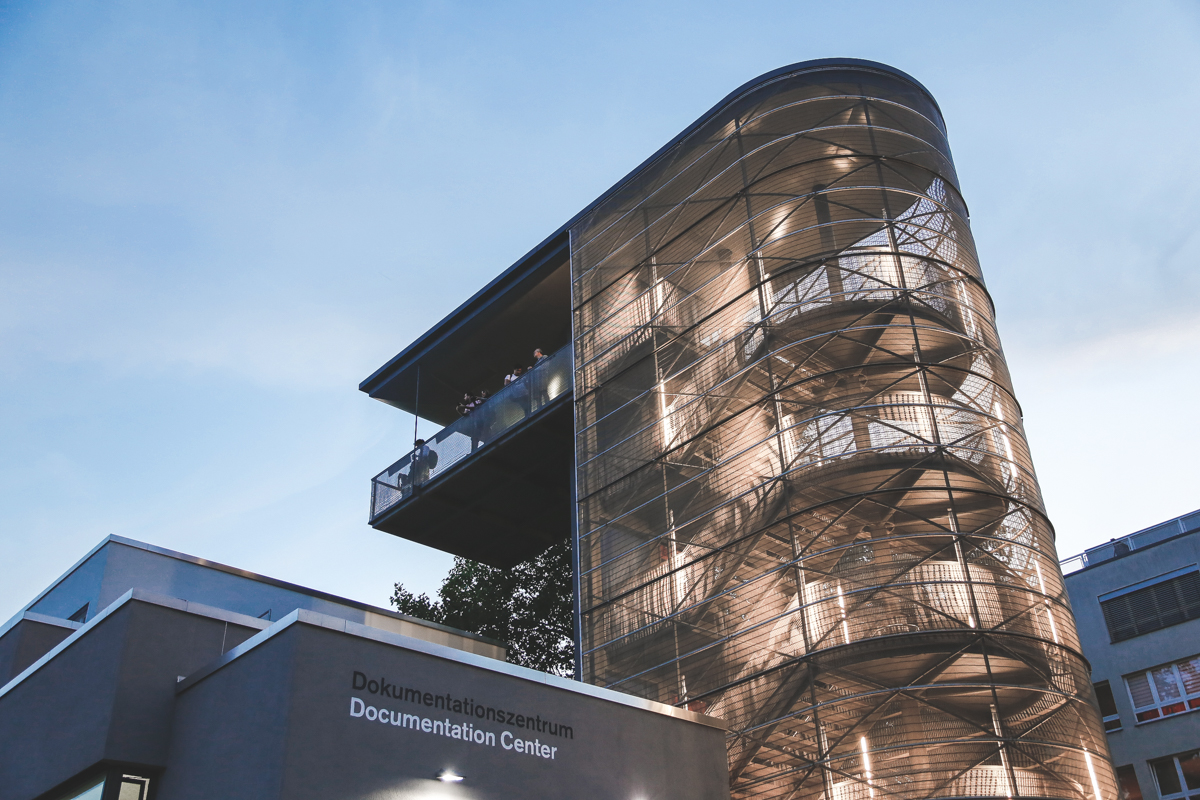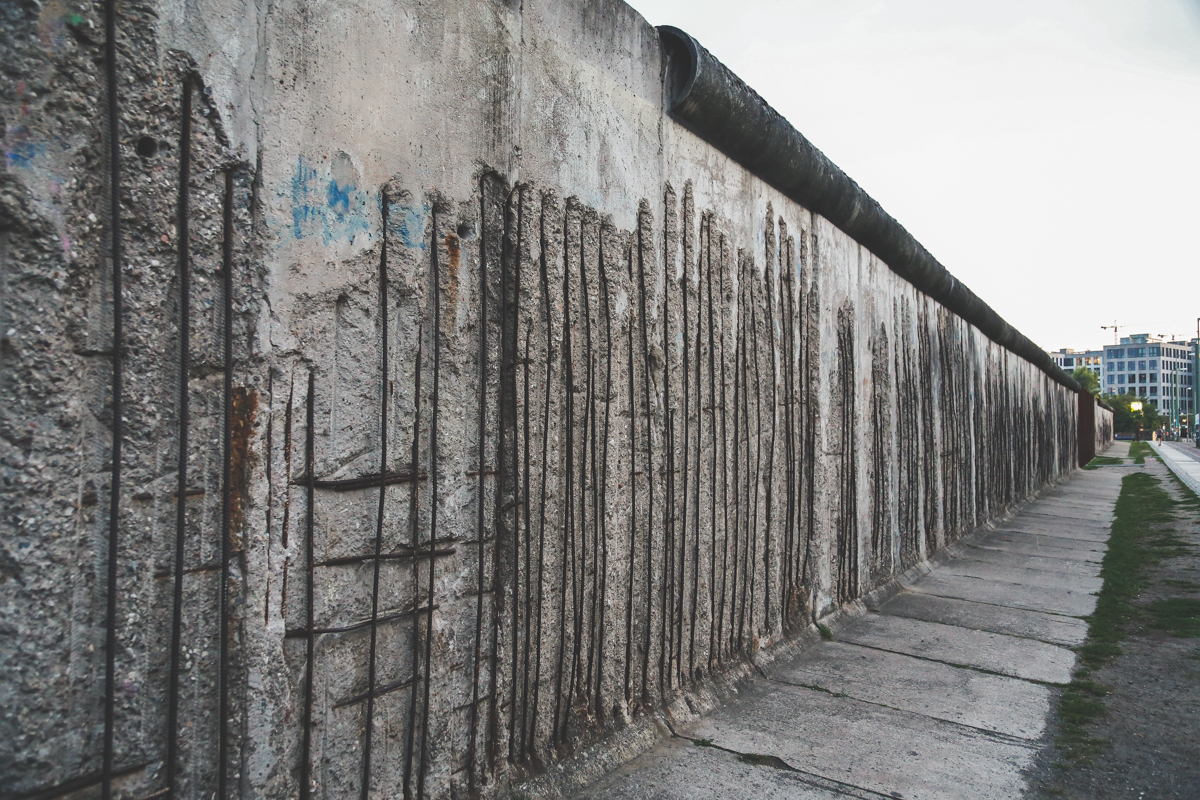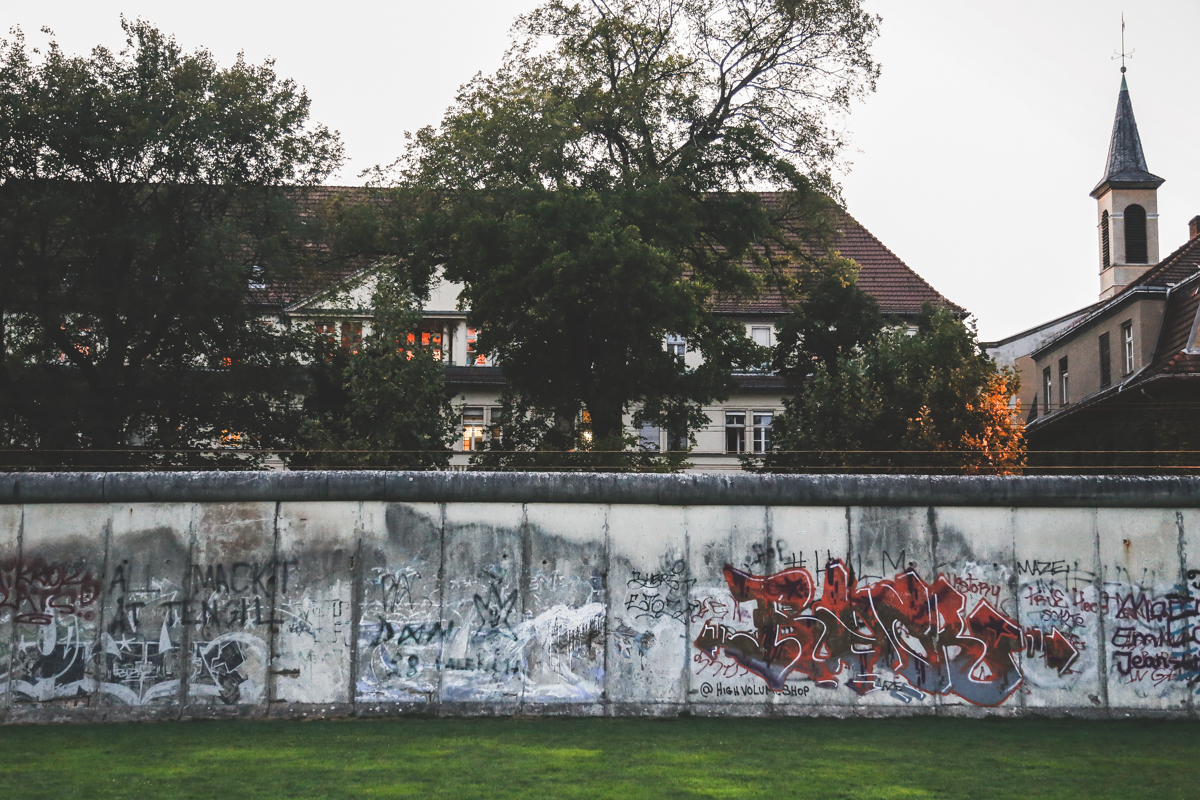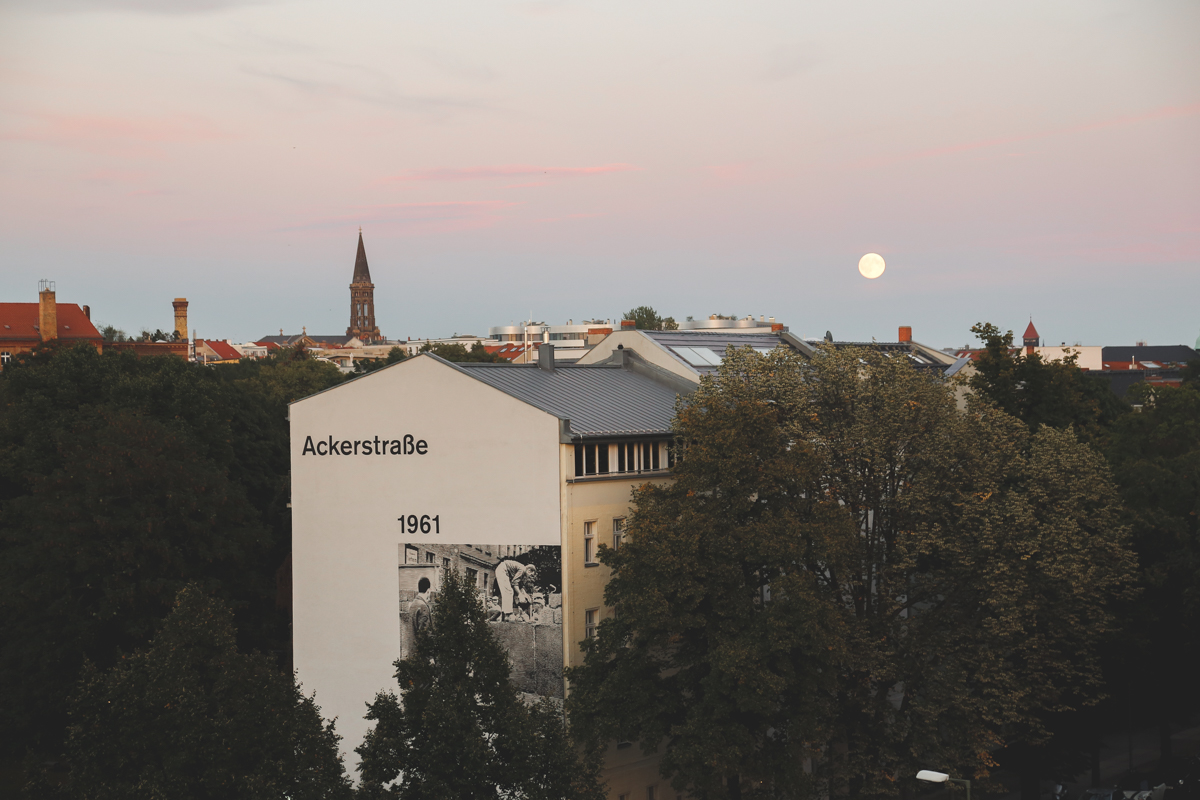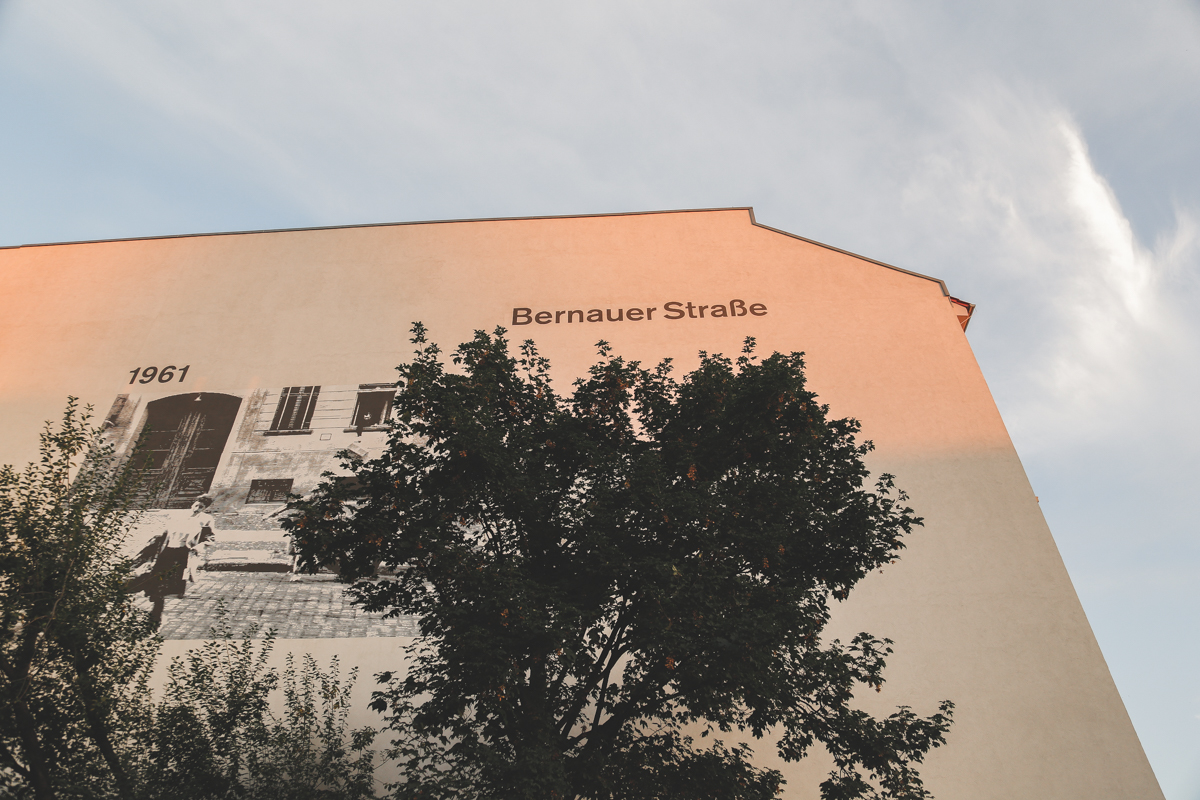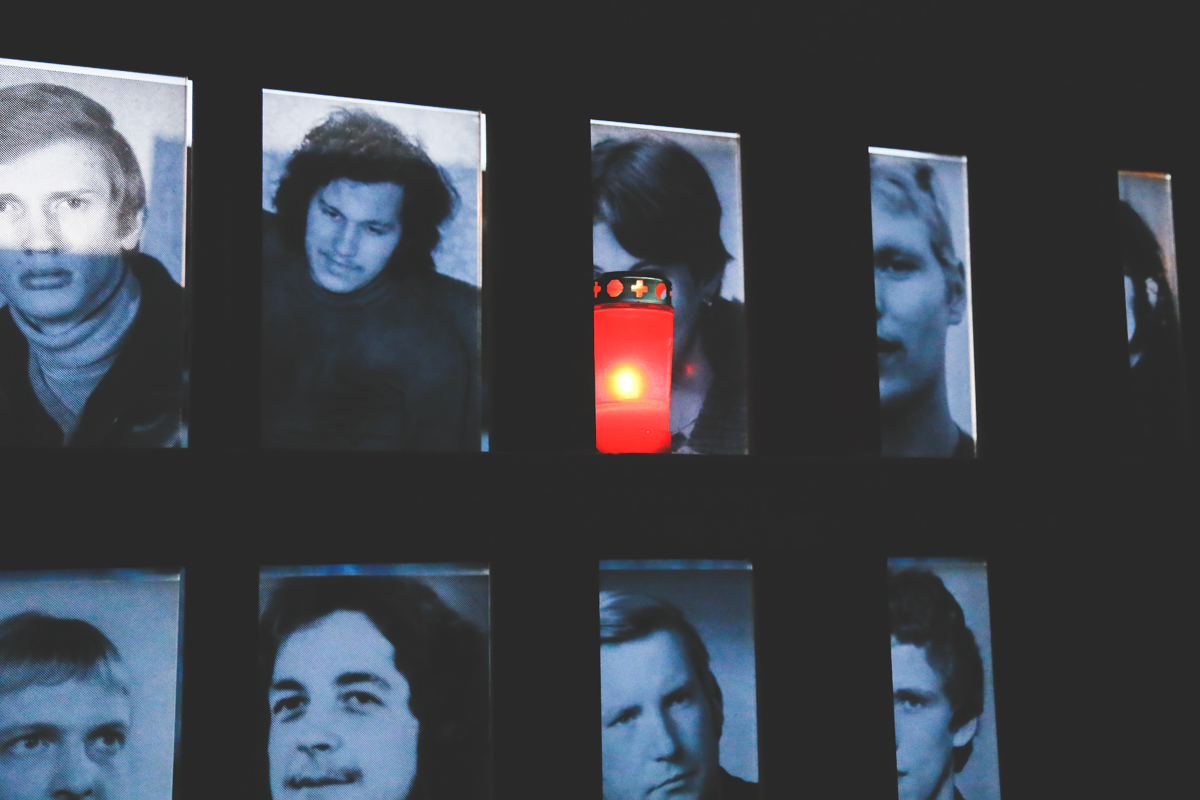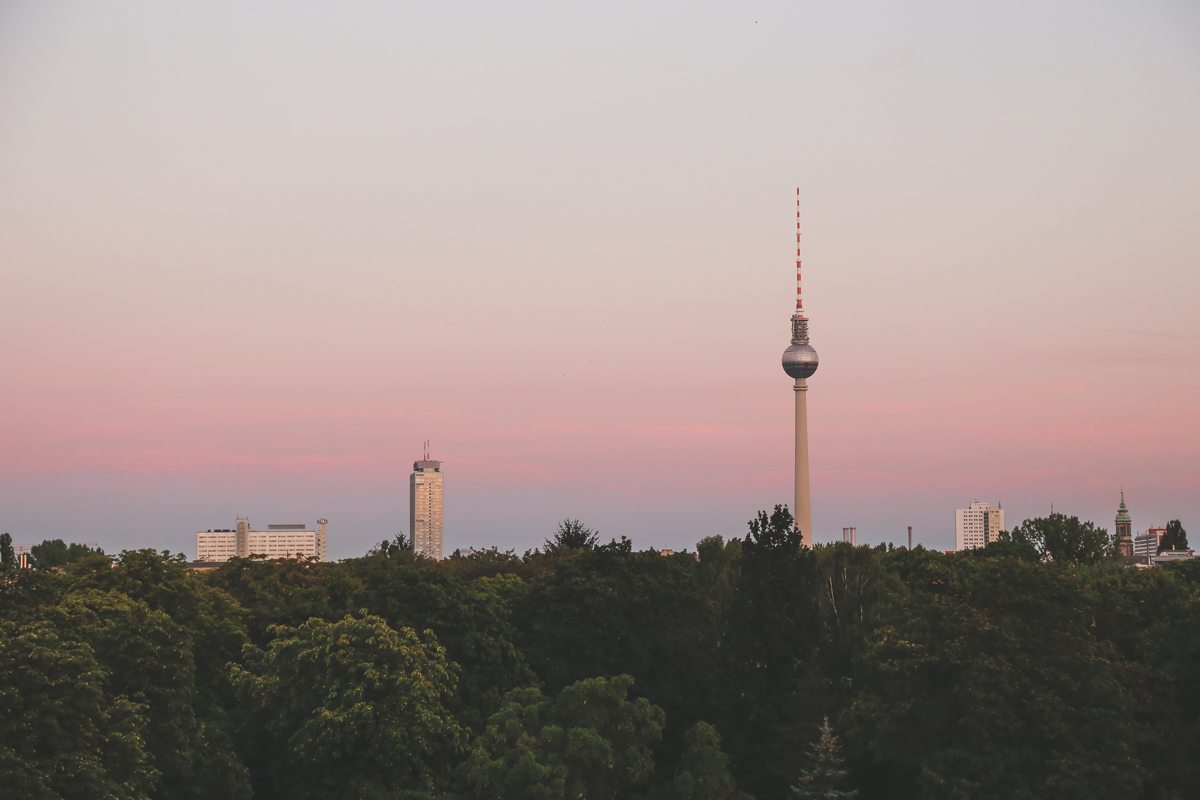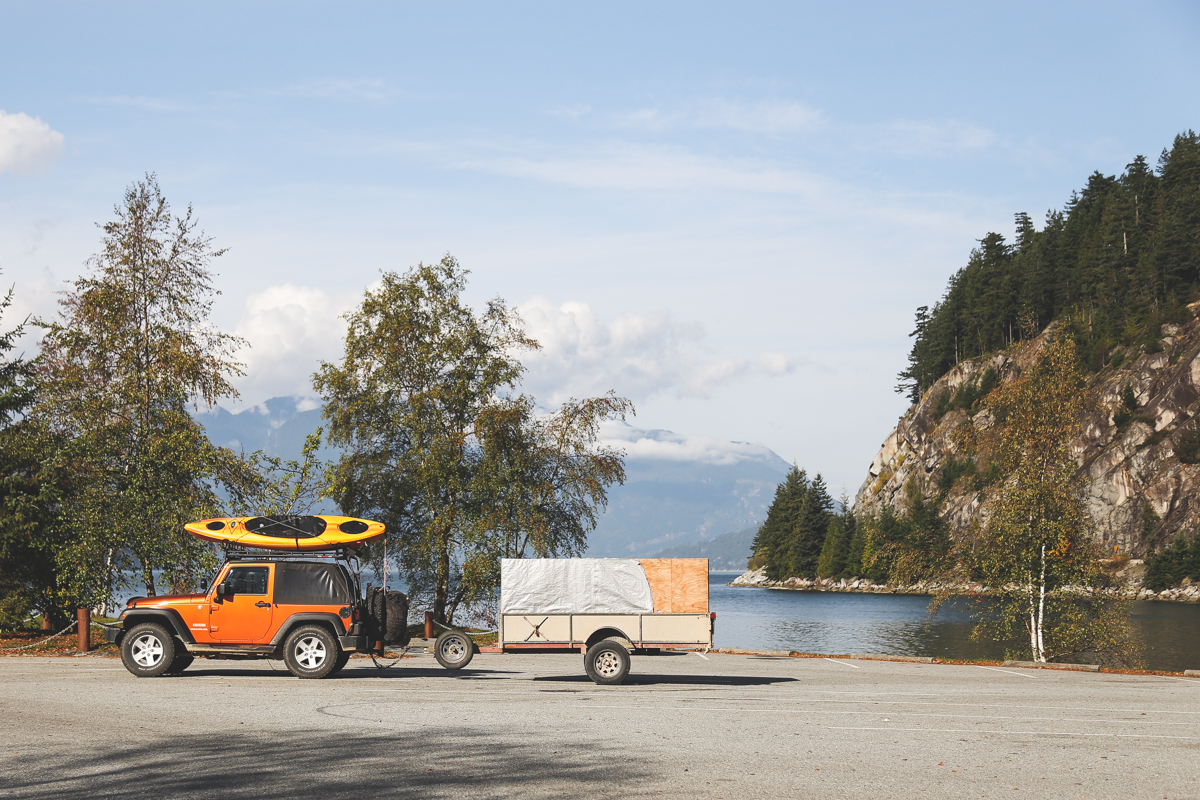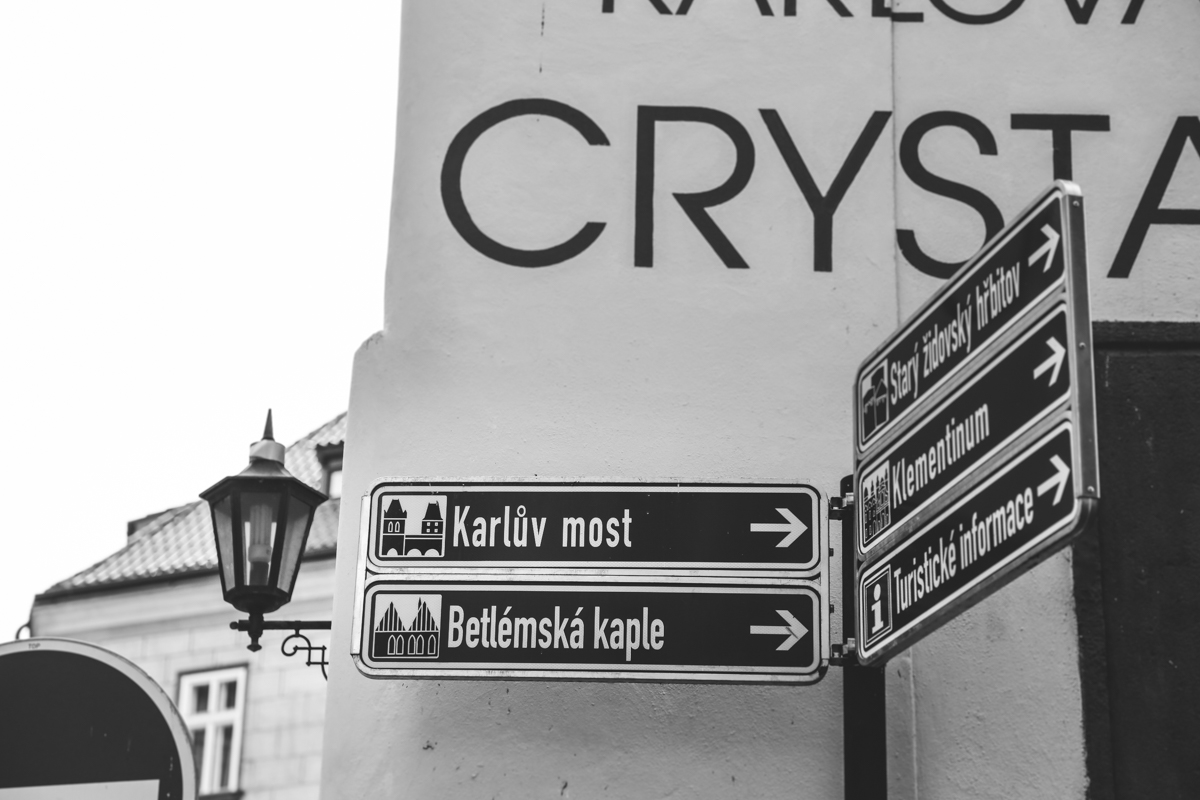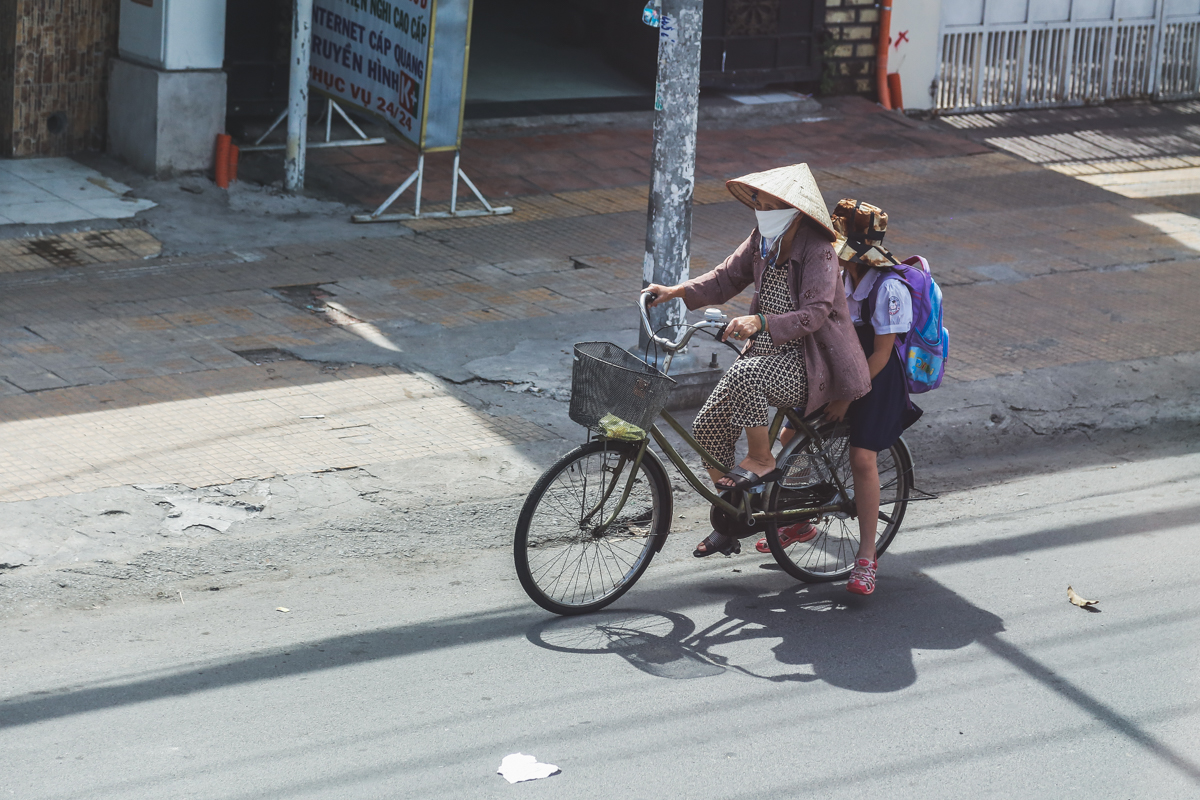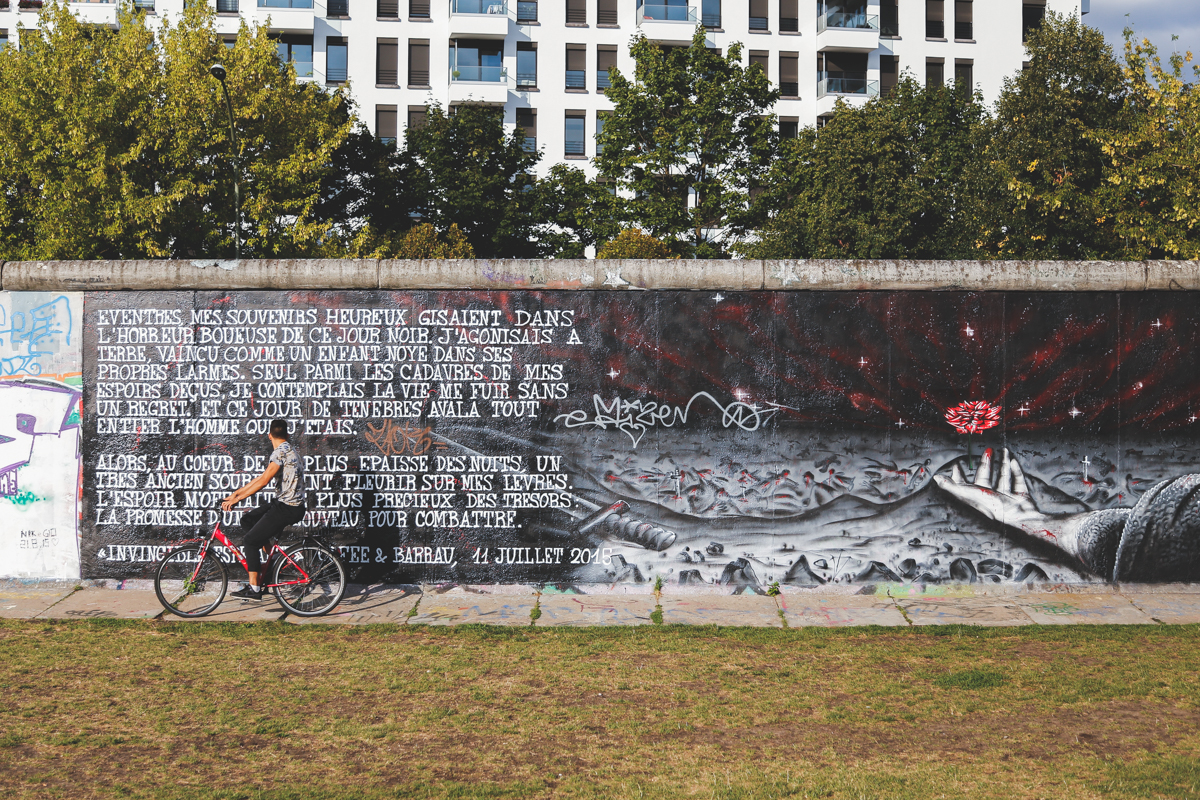
On the heels of the welcoming comfort and familiarity we experienced in Vienna, we were on a bit of an uptick in our Eurotour journey when we arrived in Berlin. Since ancestral roots run deep for us in this part of the world, it’s safe to say we were probably more enamored than usual. Plus, I always brush up on native languages before we travel, so I was also feeling pretty proud of my novice German skills at this point.
Travel and accommodations are so important on these long trips, and considering Nick looooves aquariums, I think he almost fell out of his chair when he found the Radisson Blu in Berlin’s City Center and museum district. The hotel is home to a ginormous 25m tall aquarium in the lobby atrium. (The answer is yes, we booked an atrium-facing room so we could keep an eye on the fish at night.) I also can’t say enough about how easy travel was in Berlin. The city’s premier train hub, Hauptbahnhof, was overwhelming when we arrived due to it’s sheer size, but we were easily swept away on the S-Bahn in no time. (Annectodelty, if you watched the most recent season of Homeland, you’re now pretty familiar with Hauptbahnhof and Hackescher Markt, our primary S-Bahn stop during this visit.)
We spent our first afternoon along the Spree River exploring the East Side Gallery, the longest stretch of the Berlin Wall still standing. The park attracts some interesting locals, but the vivid graffiti makes any sketchy encounters worthwhile. We also stumbled across some architectural gems, like the Netherlands embassy, and a giant construction site for the new Berlin City Palace, or Humboldt Forum. The city is authentically reconstructing the baroque-style royal palace dating to the 1400s when the city was the capital of Prussia. It was heavily damaged during WWII and demolished in 1950. The project is massive and bizarre, considering the modern construction methods and materials used to reconstruct this 500-year-old building.
The history of WWII and the post-war occupation of the Allies and Soviets is hard to ignore in Berlin. But the city has done an incredible job of minimizing Germany’s relationship to Hitler and downplaying the Nazi leader’s life and leadership, even at historic sites. For example, the site of Hitler’s former “Führerbunker” (the underground hideout where he and the remaining members of the Nazi regime spent the final days of WWII) is marked with a cheap, inconspicuous info sign. The sign plainly states the history of the location and visitors can read about it while standing in front of a small, ugly parking lot. Meanwhile, just a block away is the nearly 5-acre site of the Memorial to the Murdered Jews of Europe. Architect Peter Eisenman designed the site’s 2,711 smooth concrete slabs of varying heights and sizes to memorialize the 3 million Jewish Holocaust victims. The memorial is monumental in size and graceful in execution, and you can’t ignore the emotion that comes when you attempt to understand this time in our world’s history.
Our Berlin highlights included a few other historically significant locations, namely the Reichstag and Gedenkstätte Berliner Mauer (Berlin Wall Memorial). The Reichstag, home to the German parliament and site of the symbolic reunification of Germany in 1990, was reconstructed by architect Norman Foster. Foster won the project in 1992 and it was completed in 1999. I think the Reichstag, and it’s incredible open-air dome, is one of the most impressive and unexpected projects we’ve had the opportunity to tour. In architecture school, you hear about, research, and admire photos of these architecturally-significant buildings and dream of experiencing them first-hand. Sometimes, as in this case, they exceed expectation; and sometimes they’re heartbreakingly disappointing. (The Jewish Museum in Berlin by Daniel Libeskind unfortunately fell into the latter category or us.)
We spent our last evening in the city at the Berlin Wall Memorial and were treated with an incredible sunset to round out our serene, emotional visit. The memorial includes a 60m-long section of the original wall. It looks exactly as it did the day the wall fell. The new Documentation Centre is home to the permanent exhibit, “1961 | 1989. The Berlin Wall,” and the building’s observation tower provides an aerial view of the remaining section of the wall. The memorial also includes several interactive open-air exhibits and the beautiful Chapel of Reconciliation.
I don’t think we’ll ever forget the historical snapshot we were treated to in the modern city of Berlin. I think we could feel at home in Berlin pretty quickly. Compared to the other European cities we’ve visited, the city feels so clean, almost sterile at times, and young—from the infrastructure to the inhabitants. And when you stroll the Unter den Linden towards the Brandenburg Gate, you have to admire and savor the history, and applaud the city’s endeavors to heal wounds and start anew.
